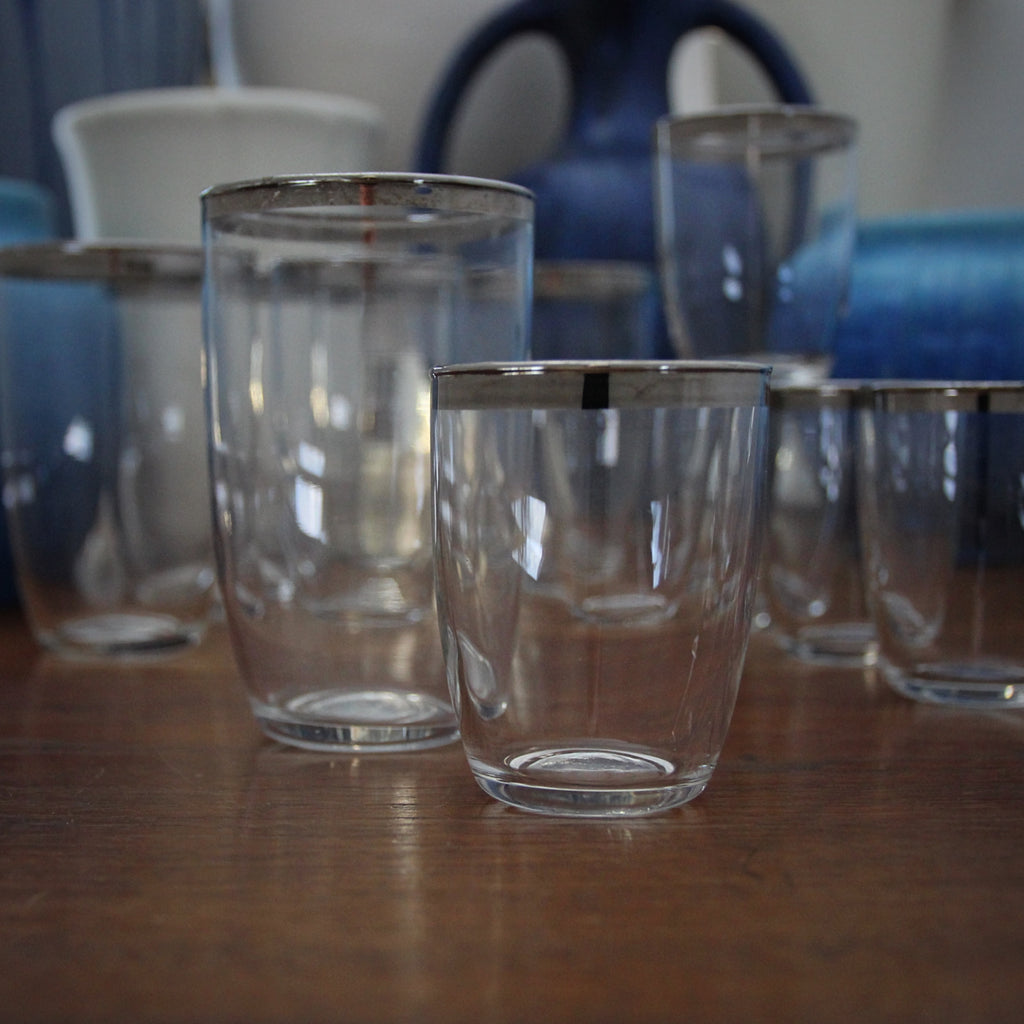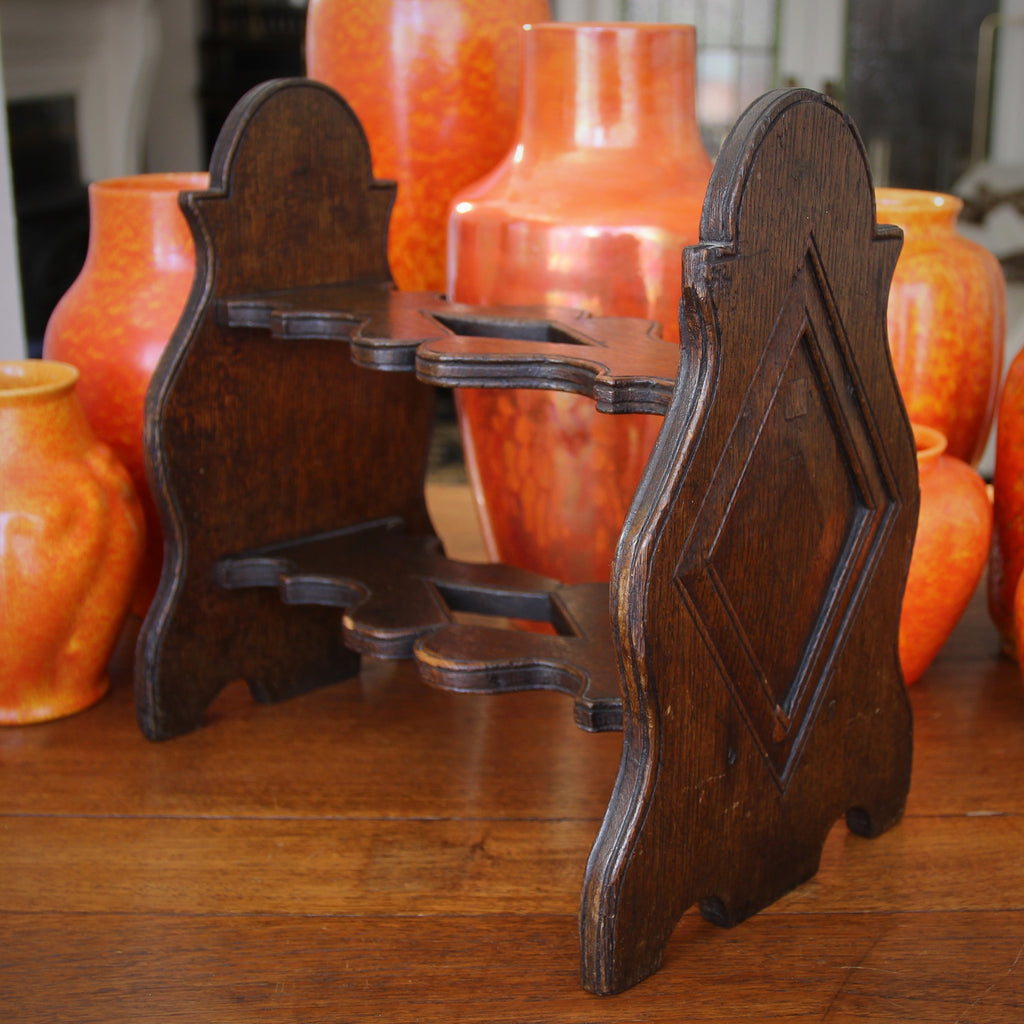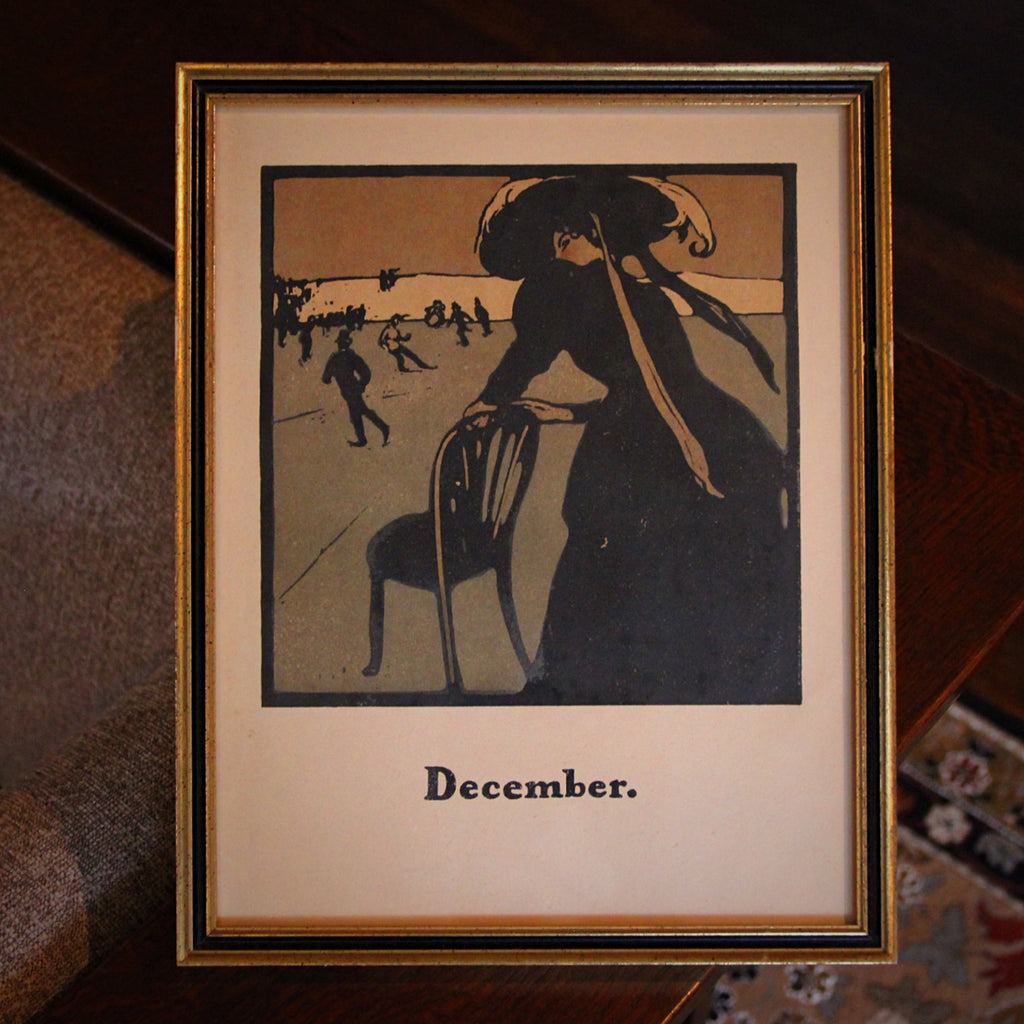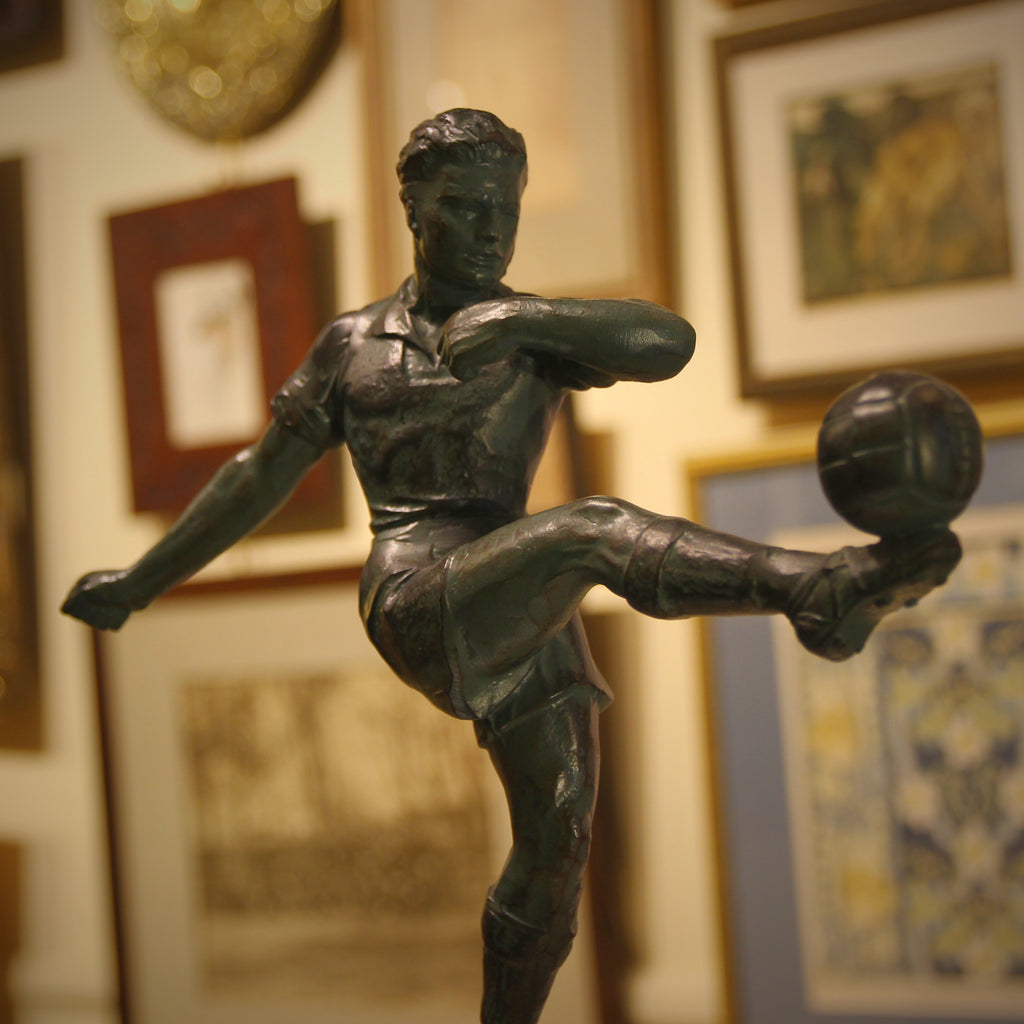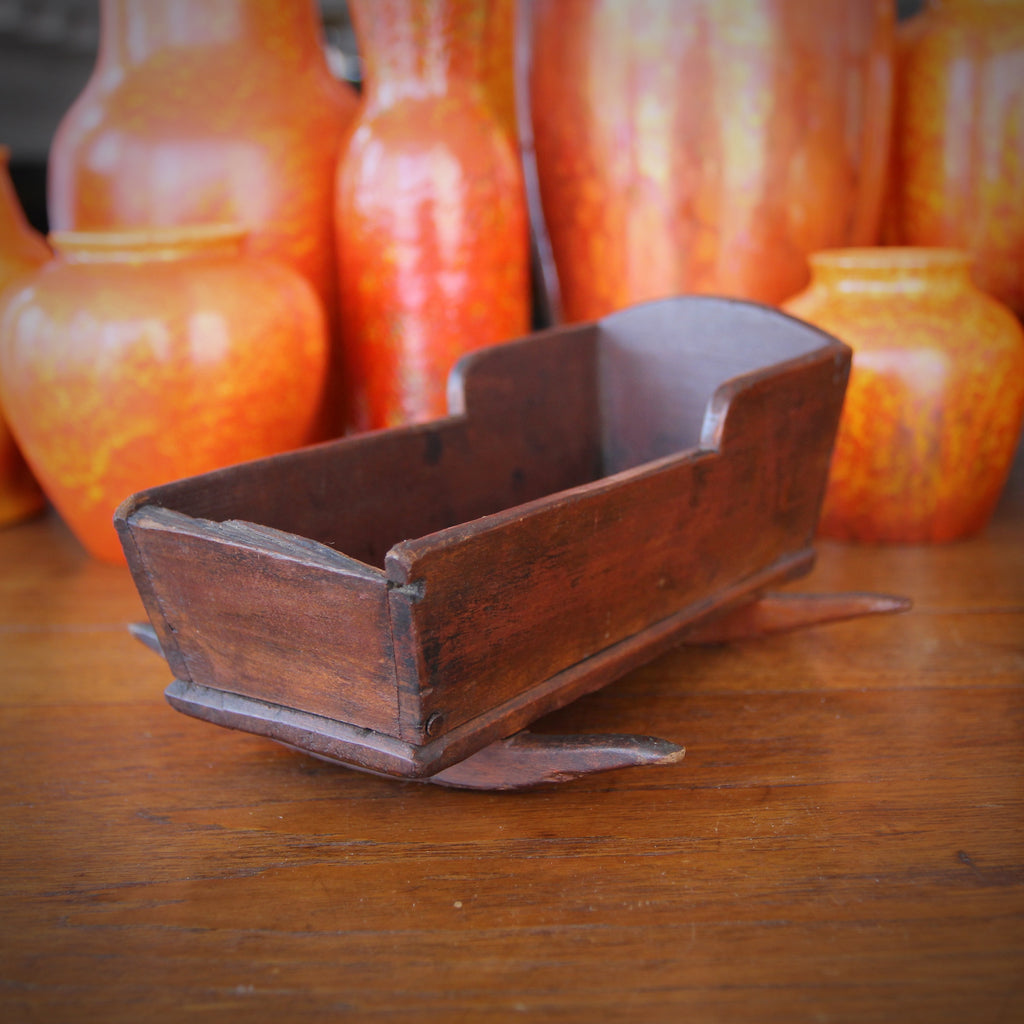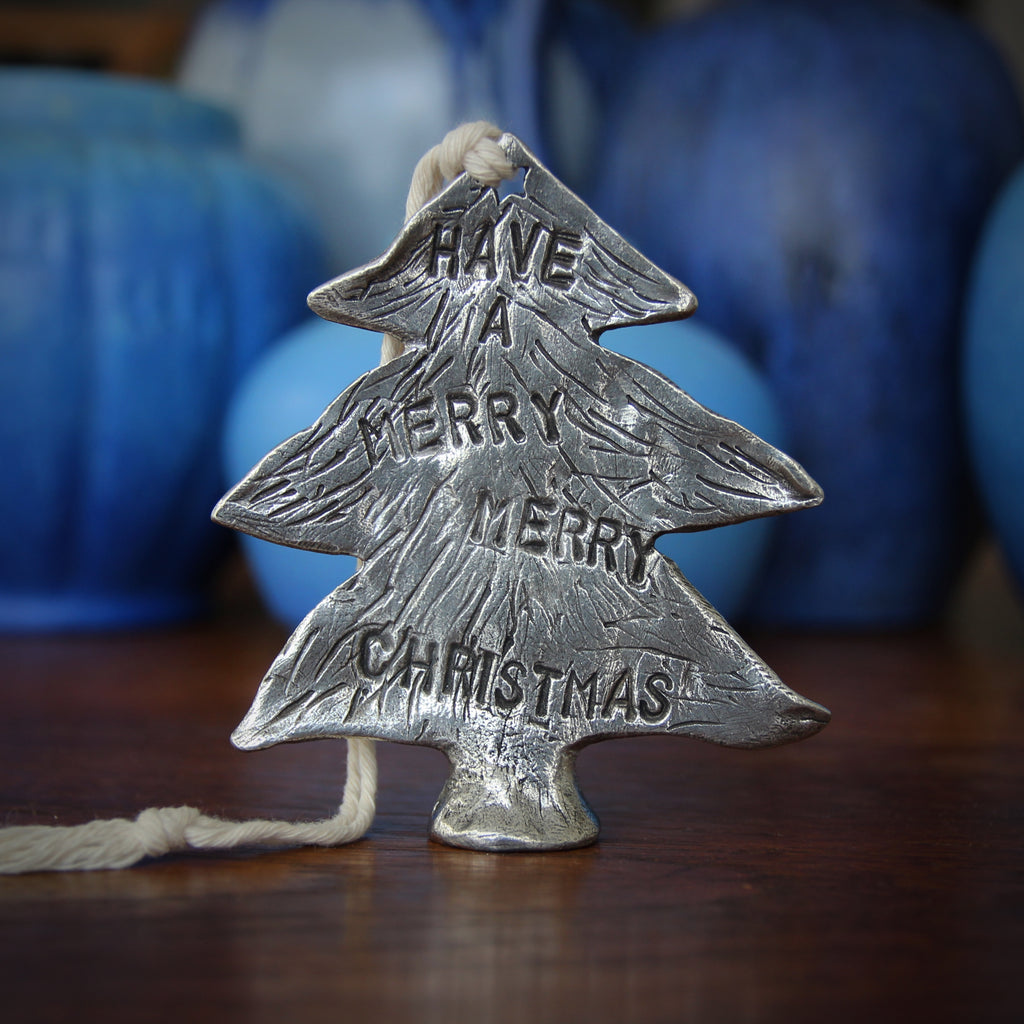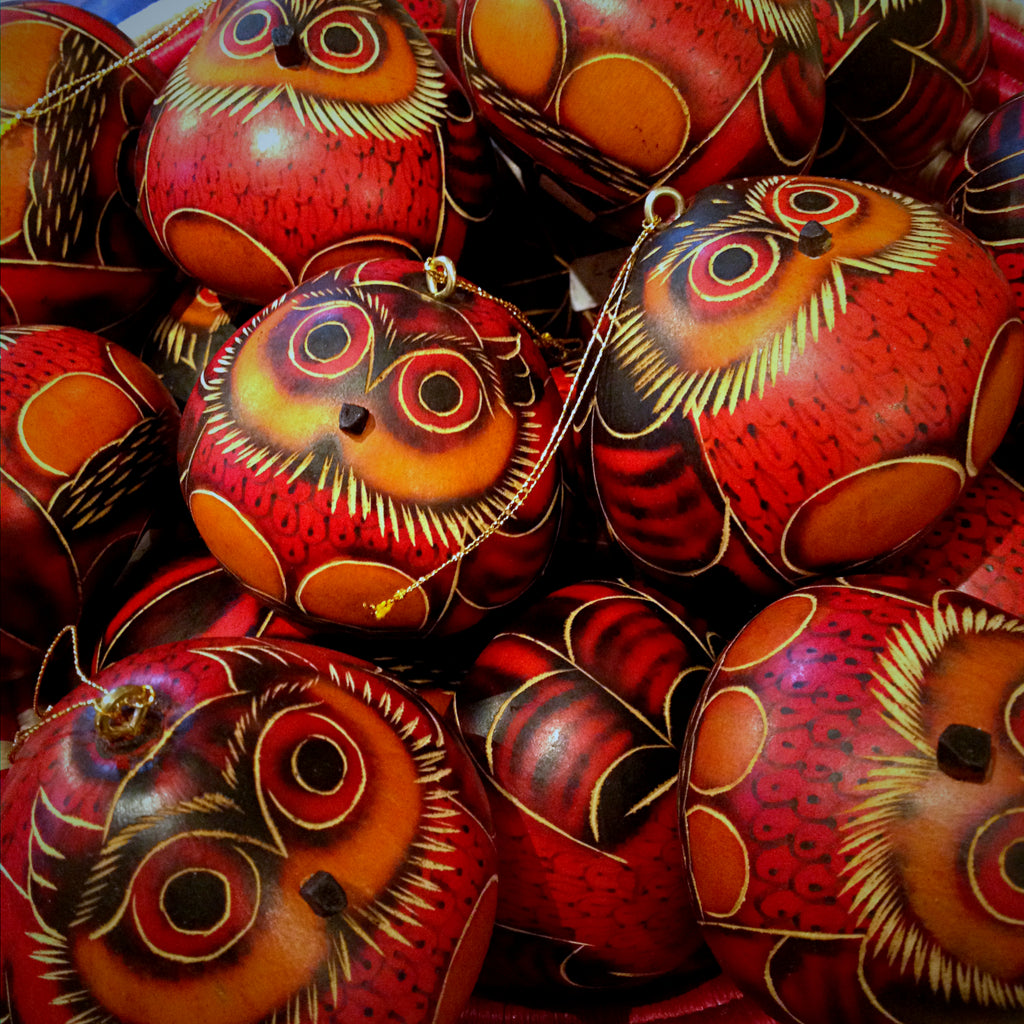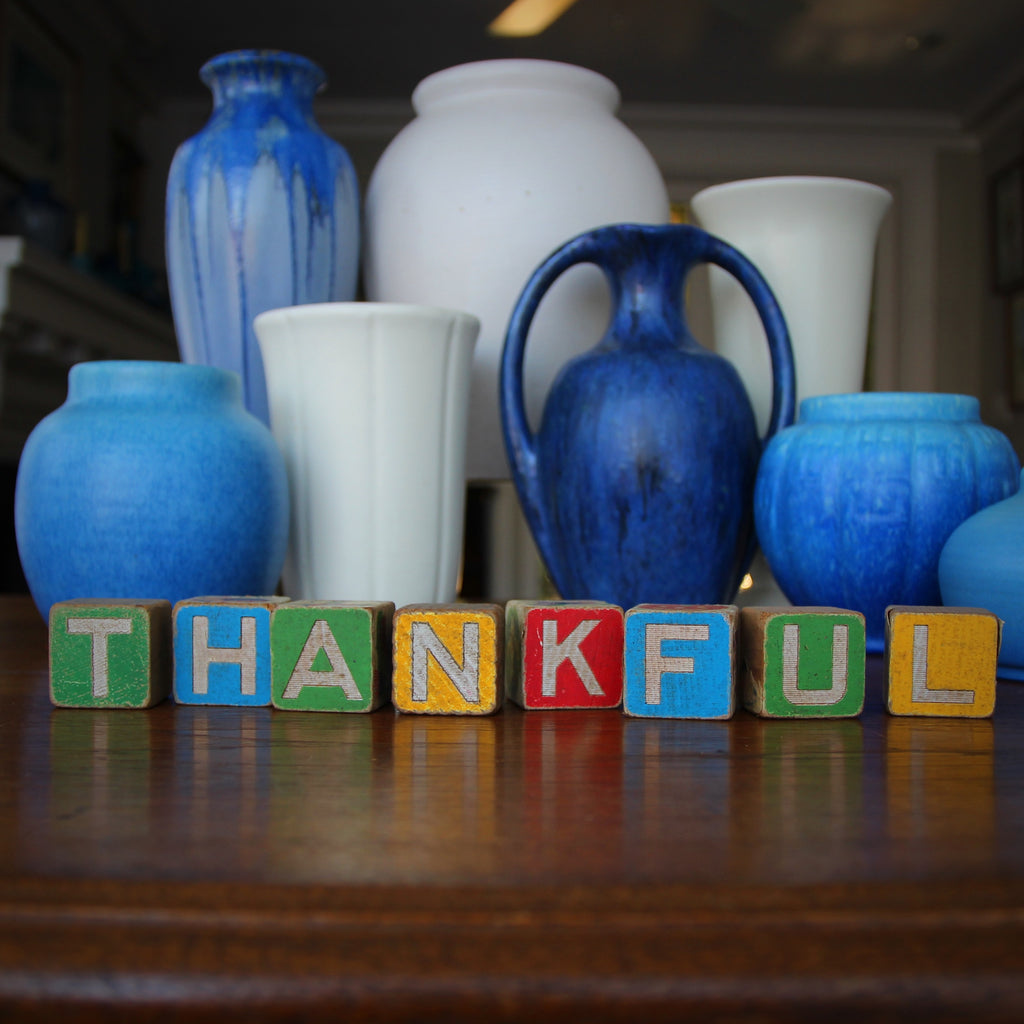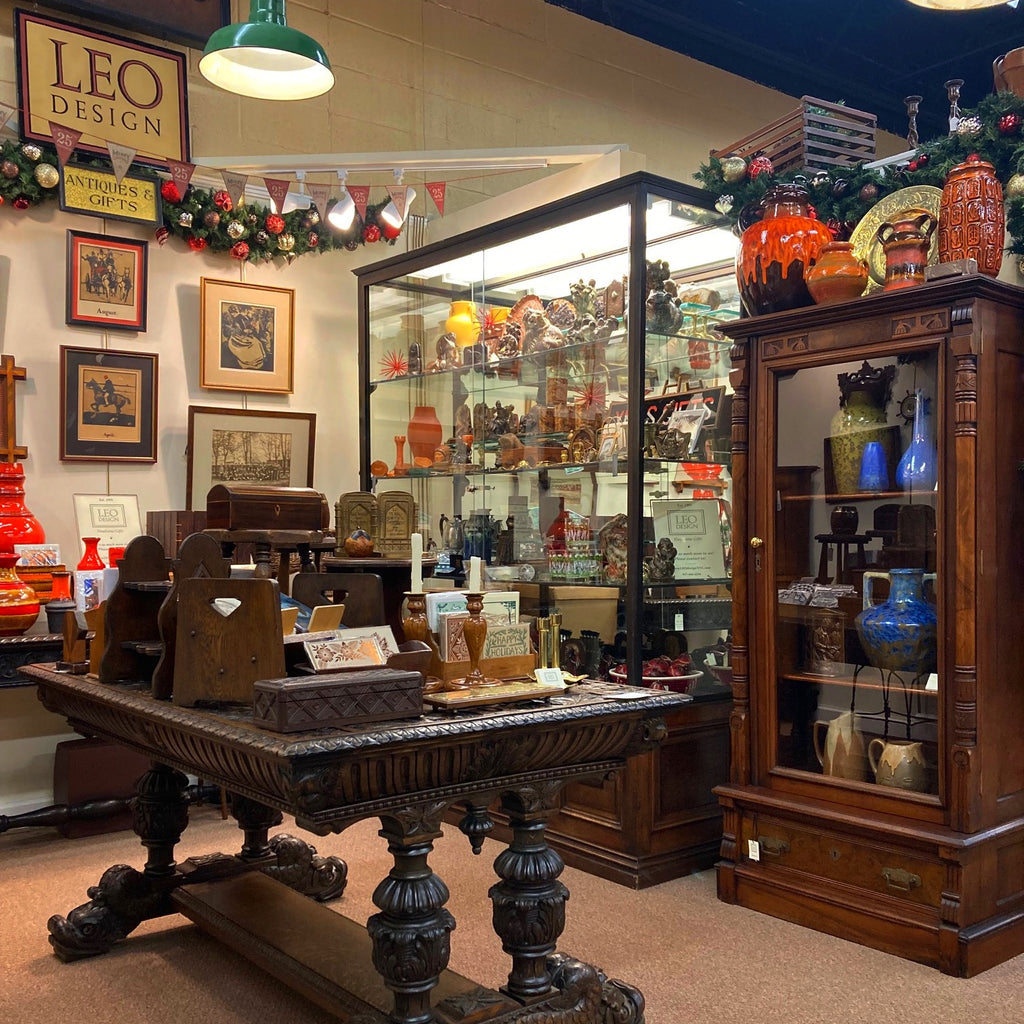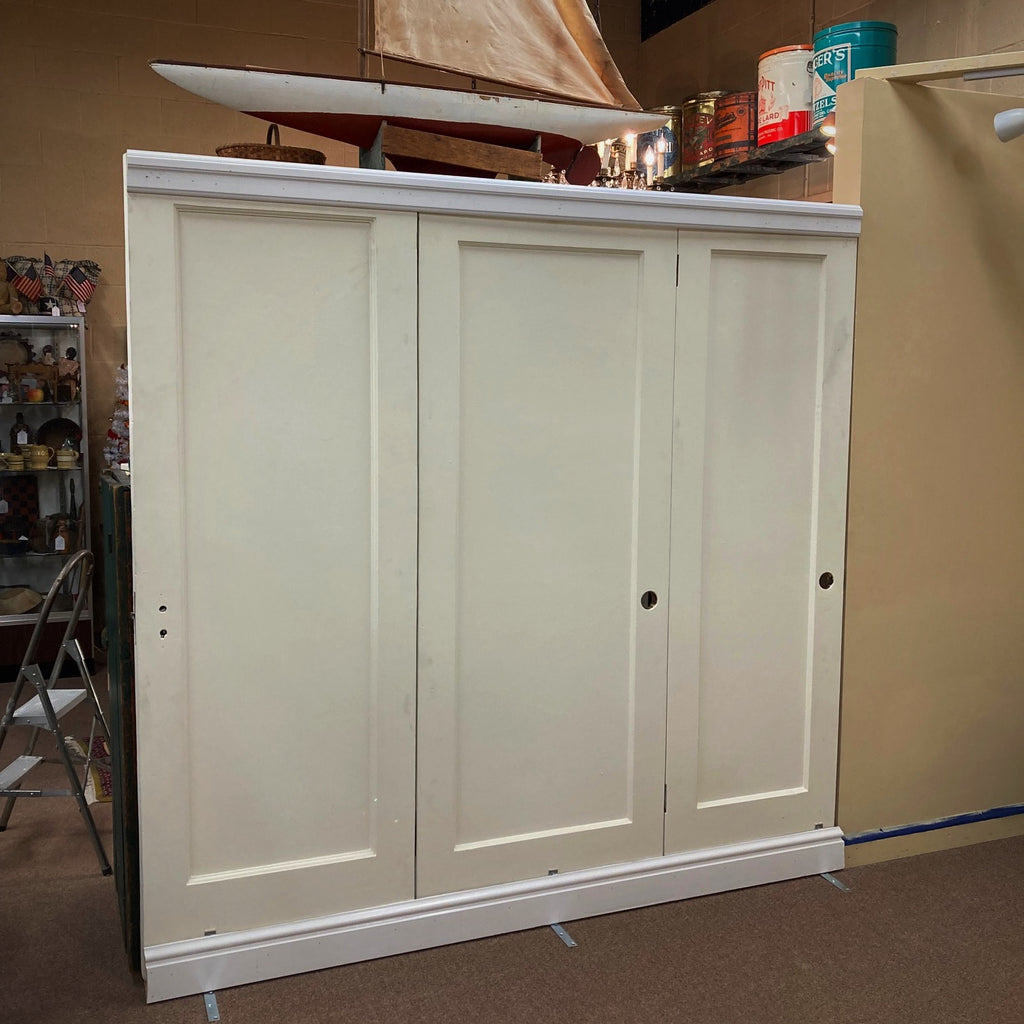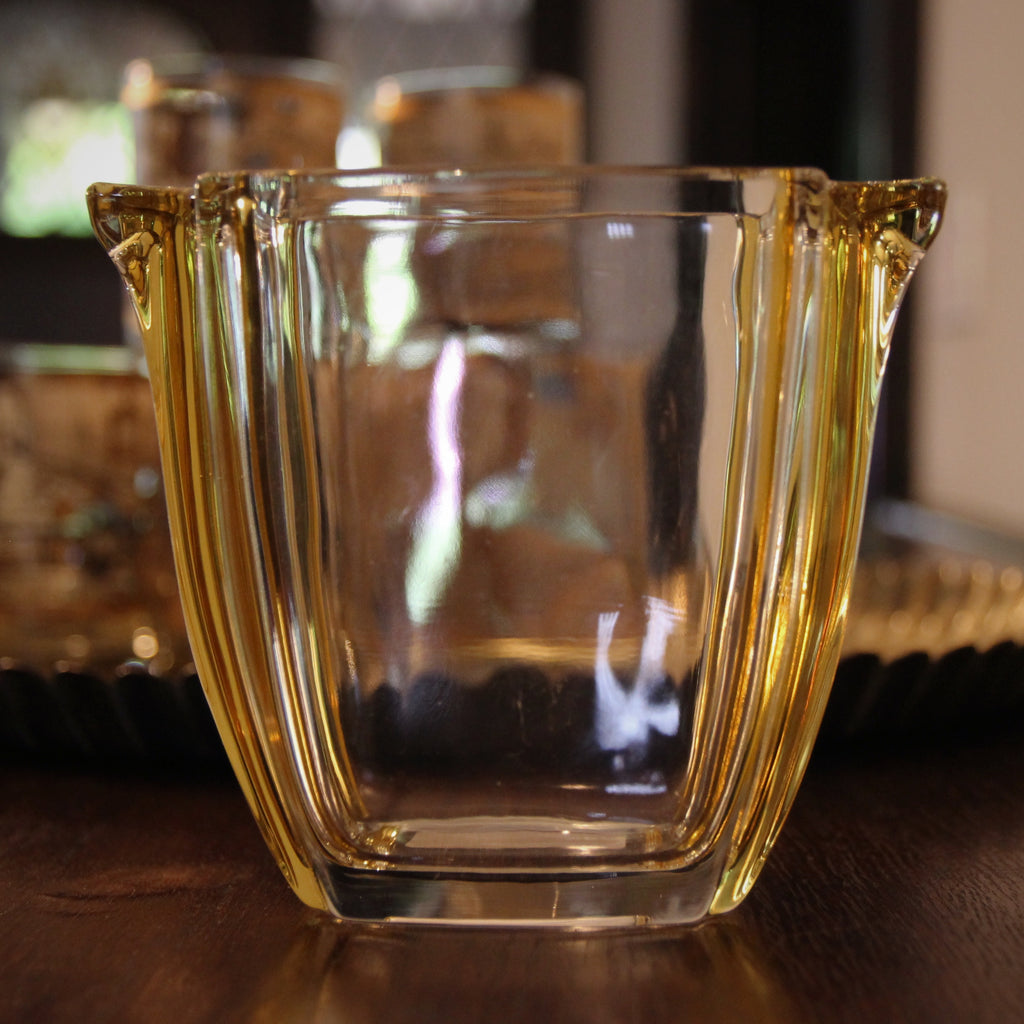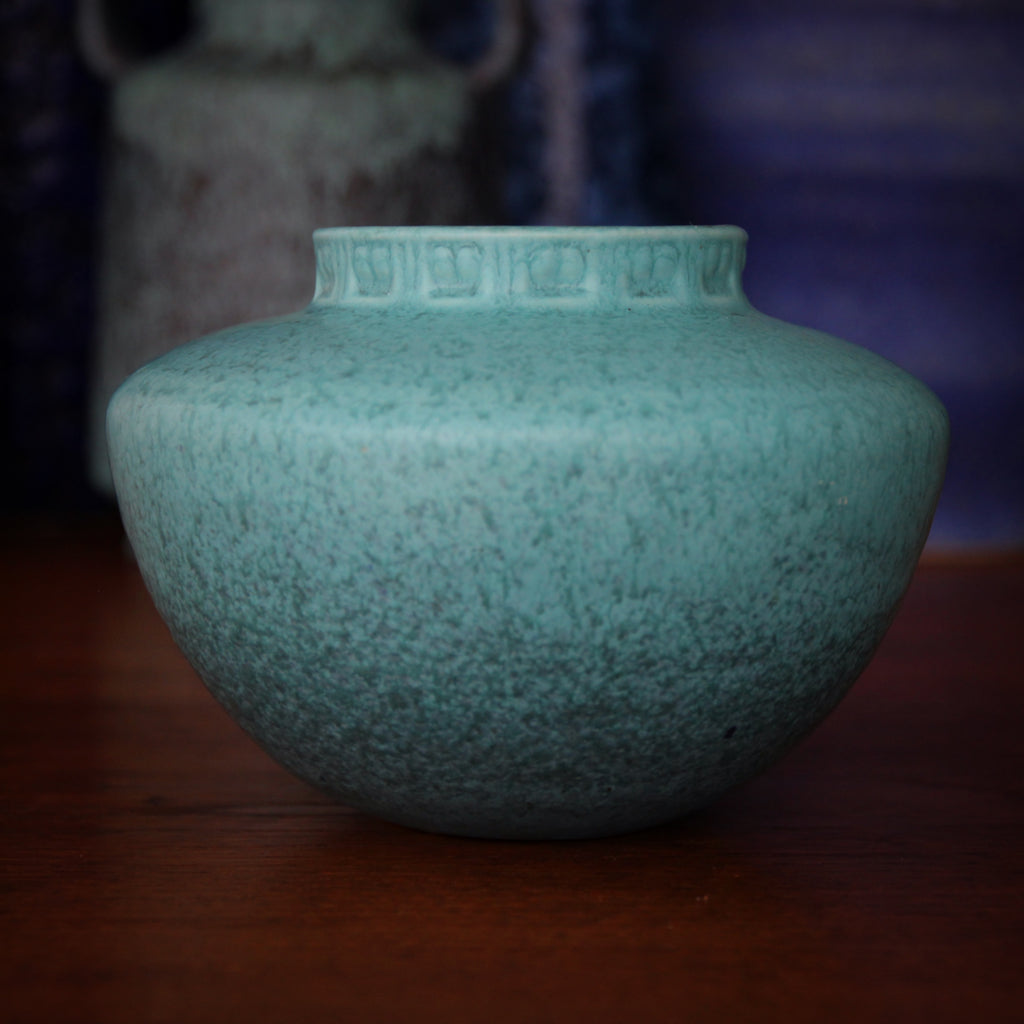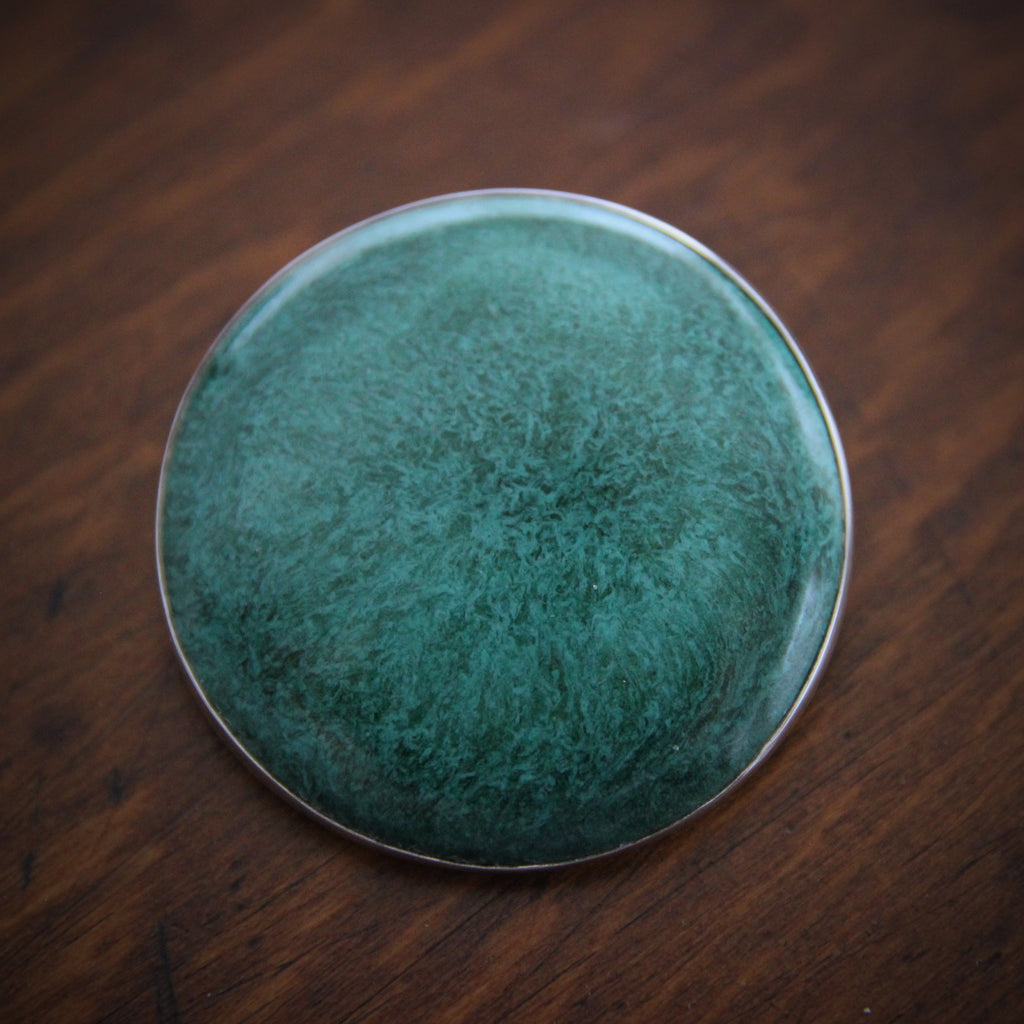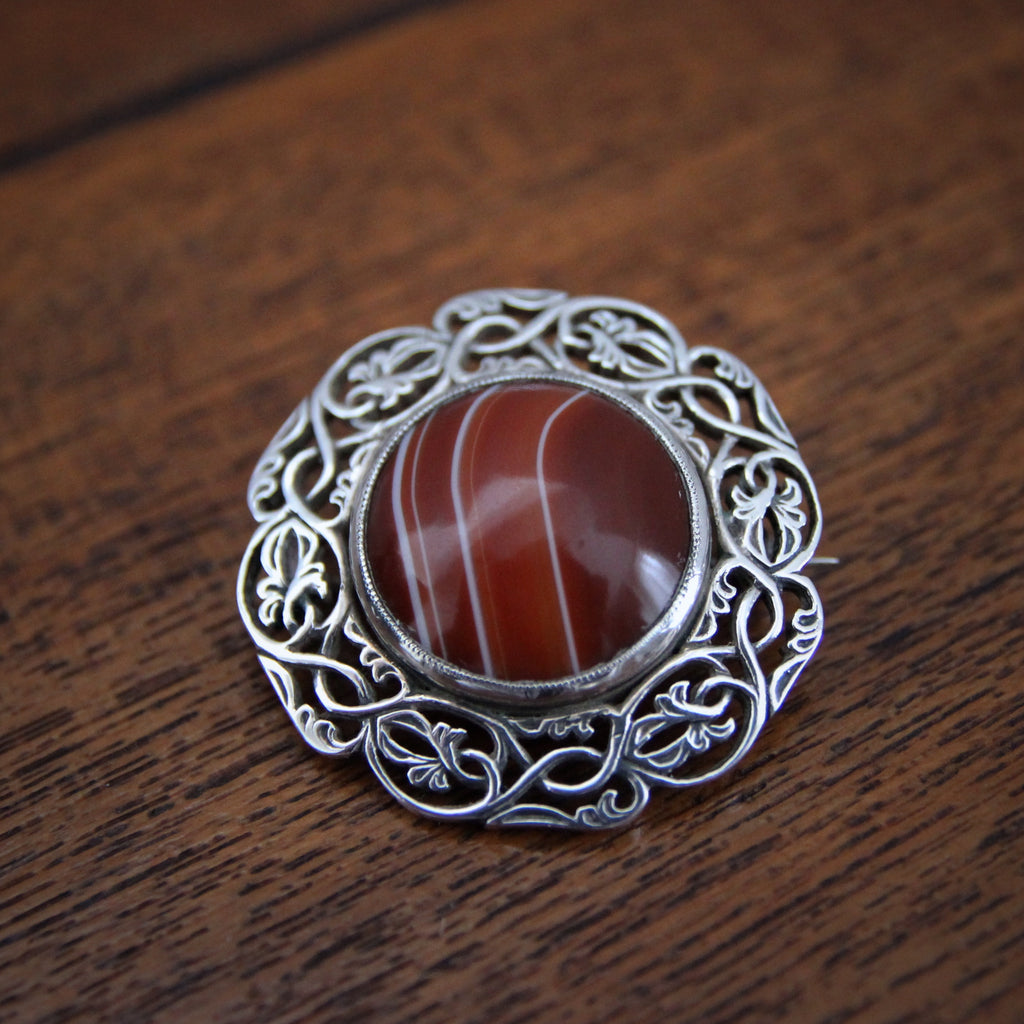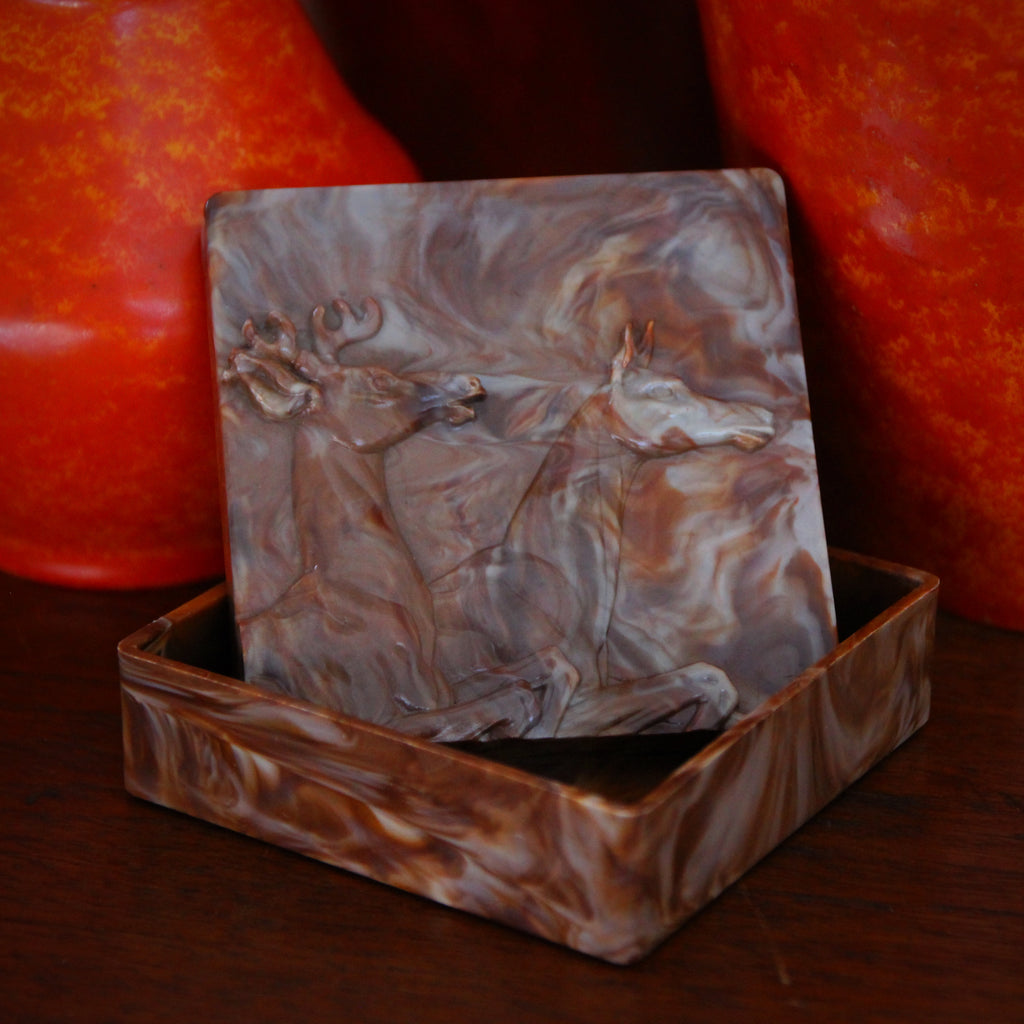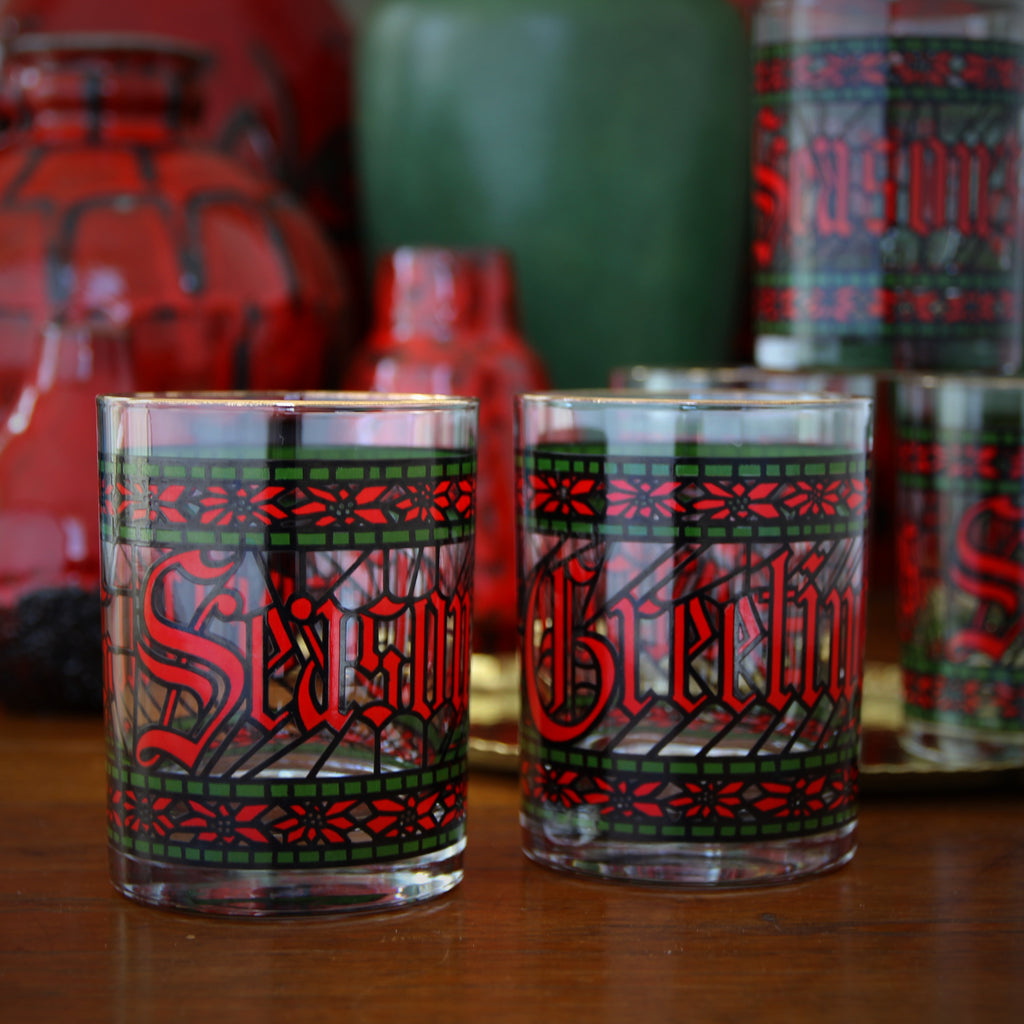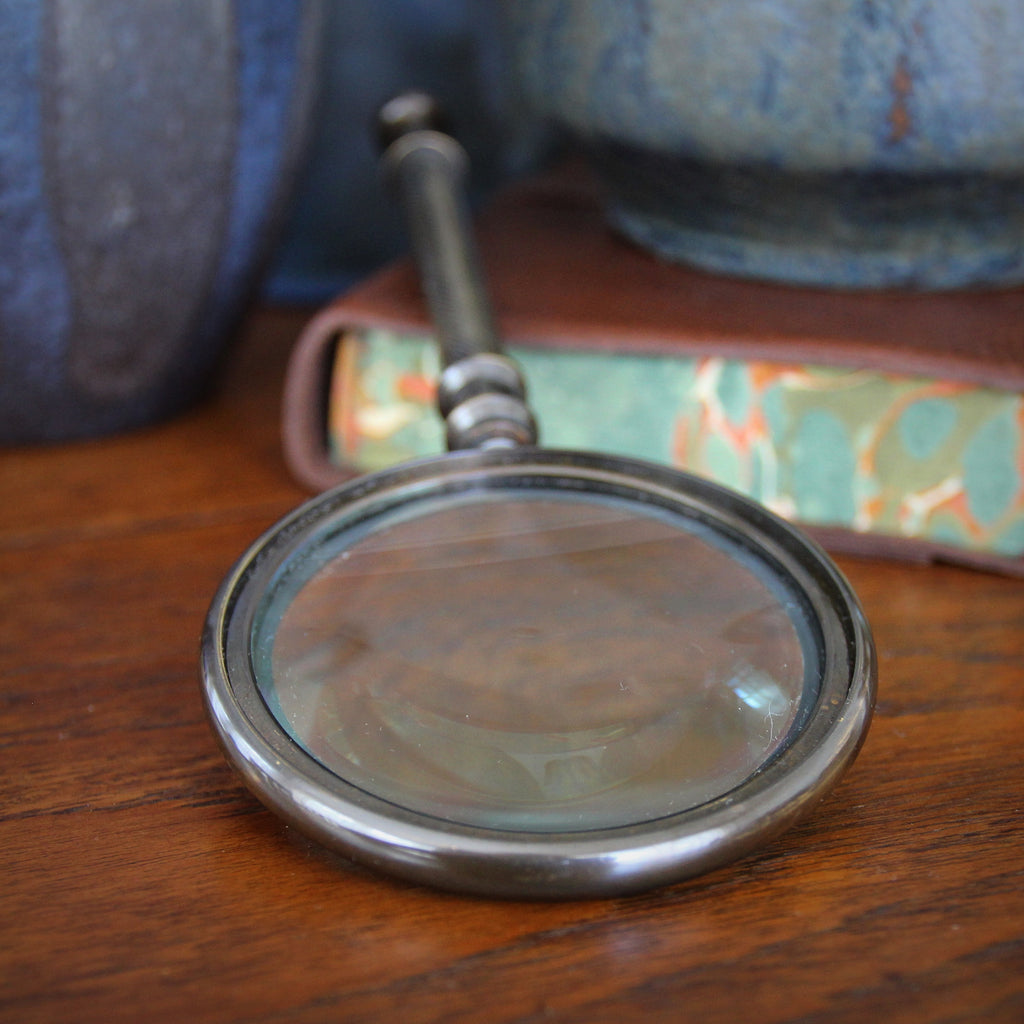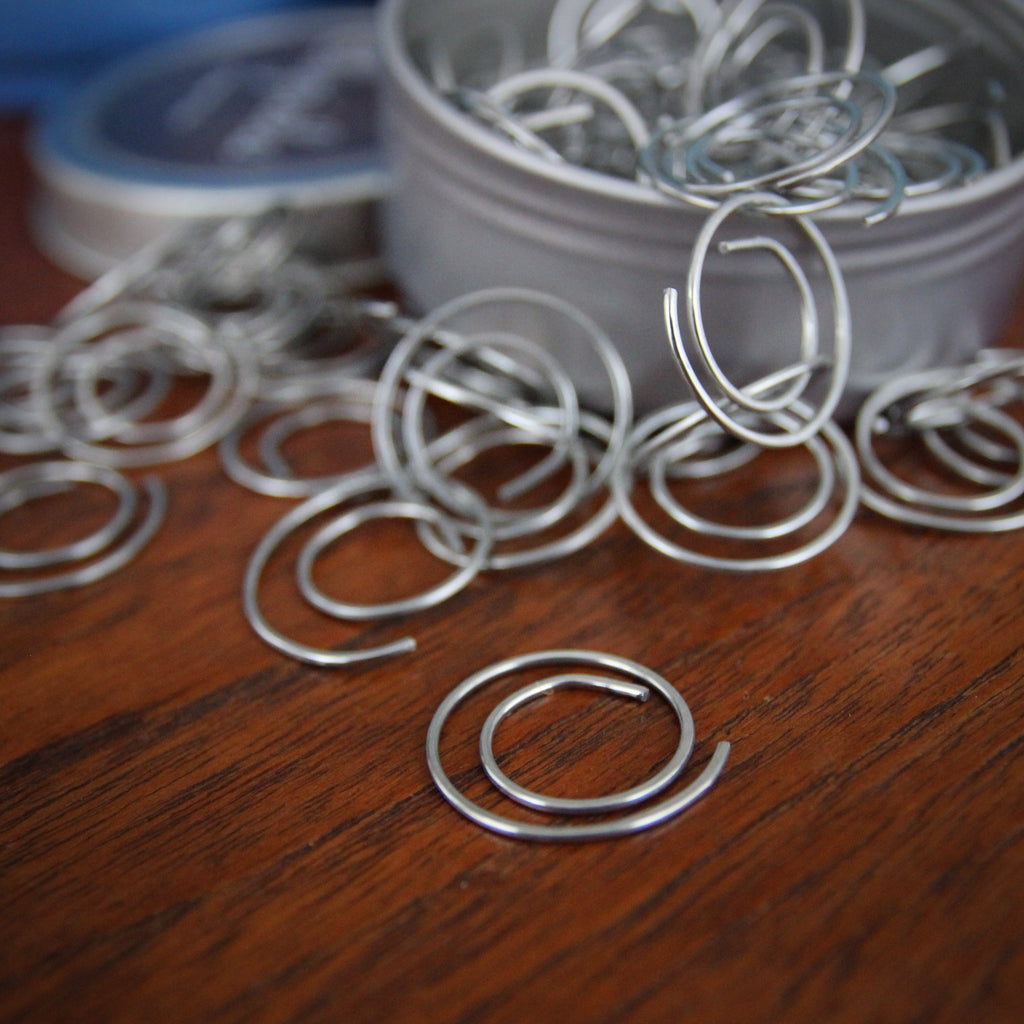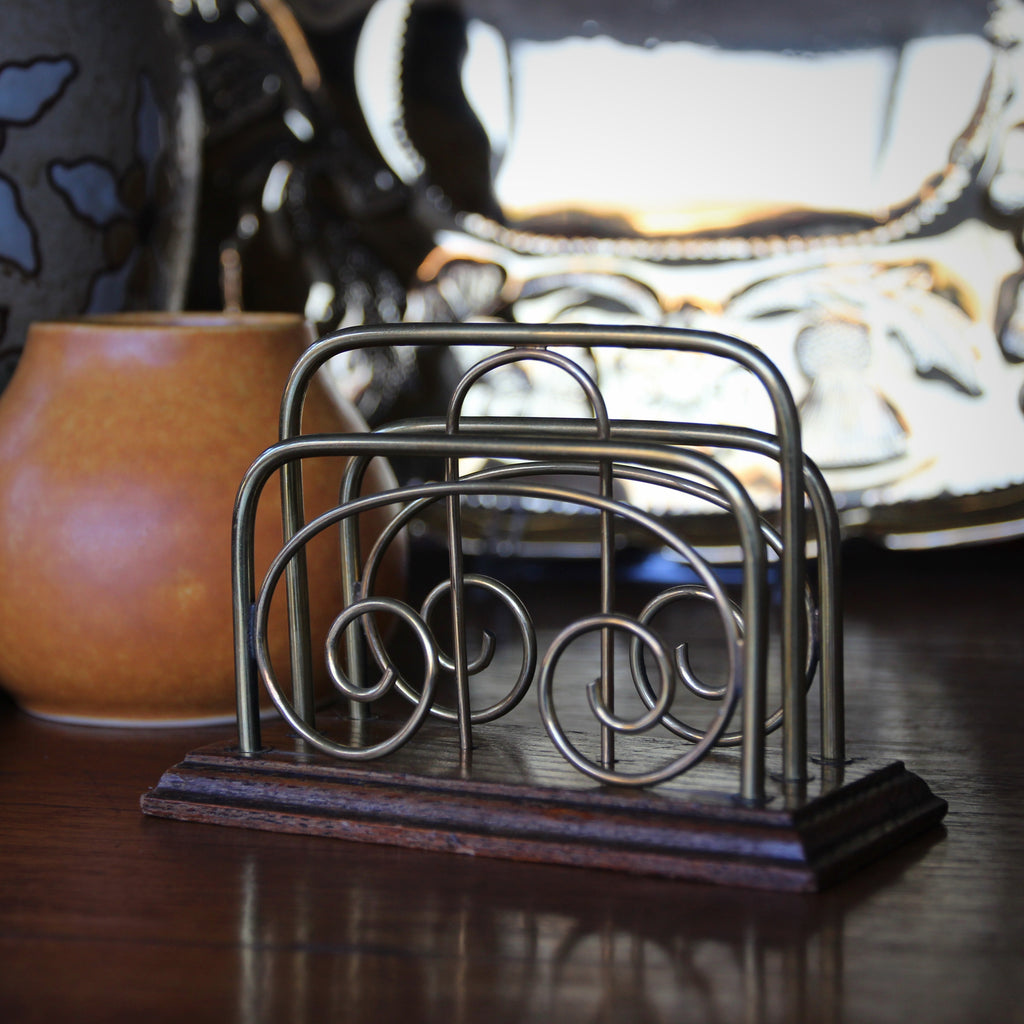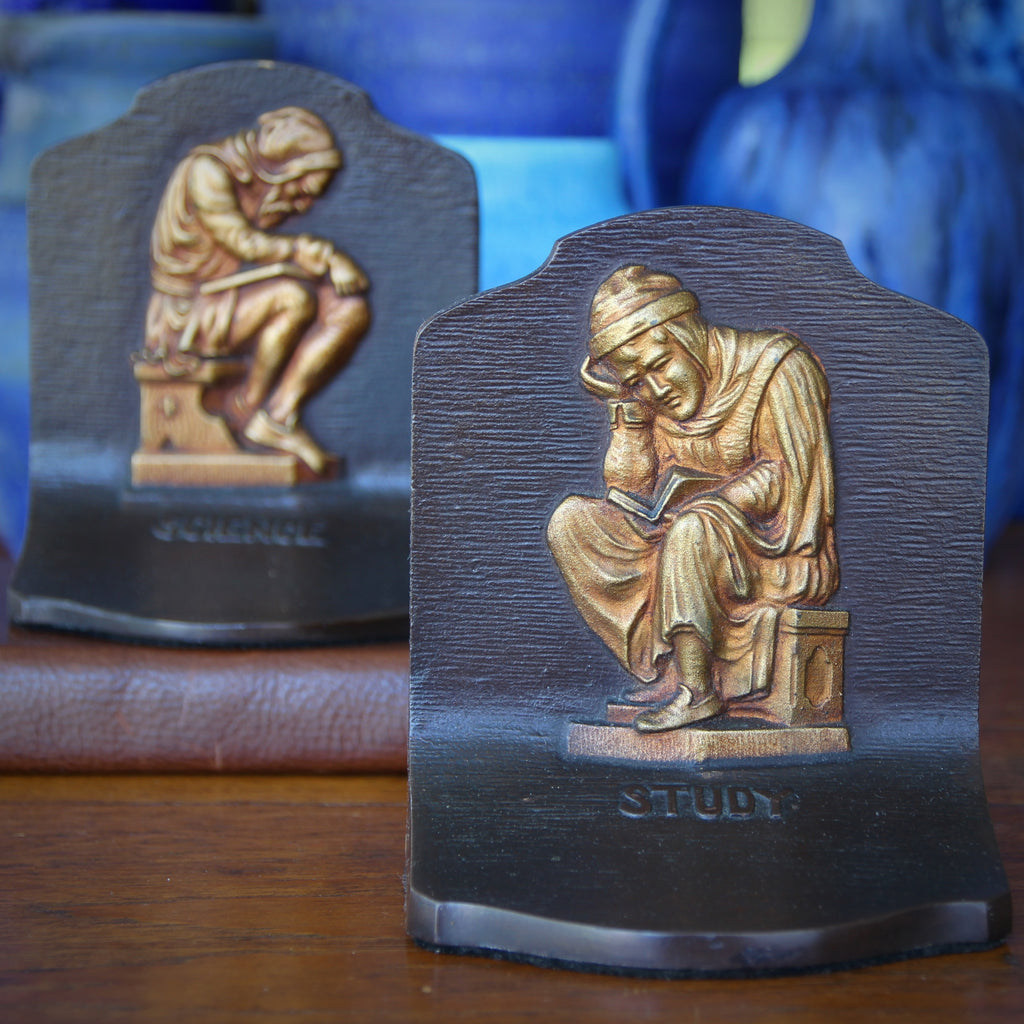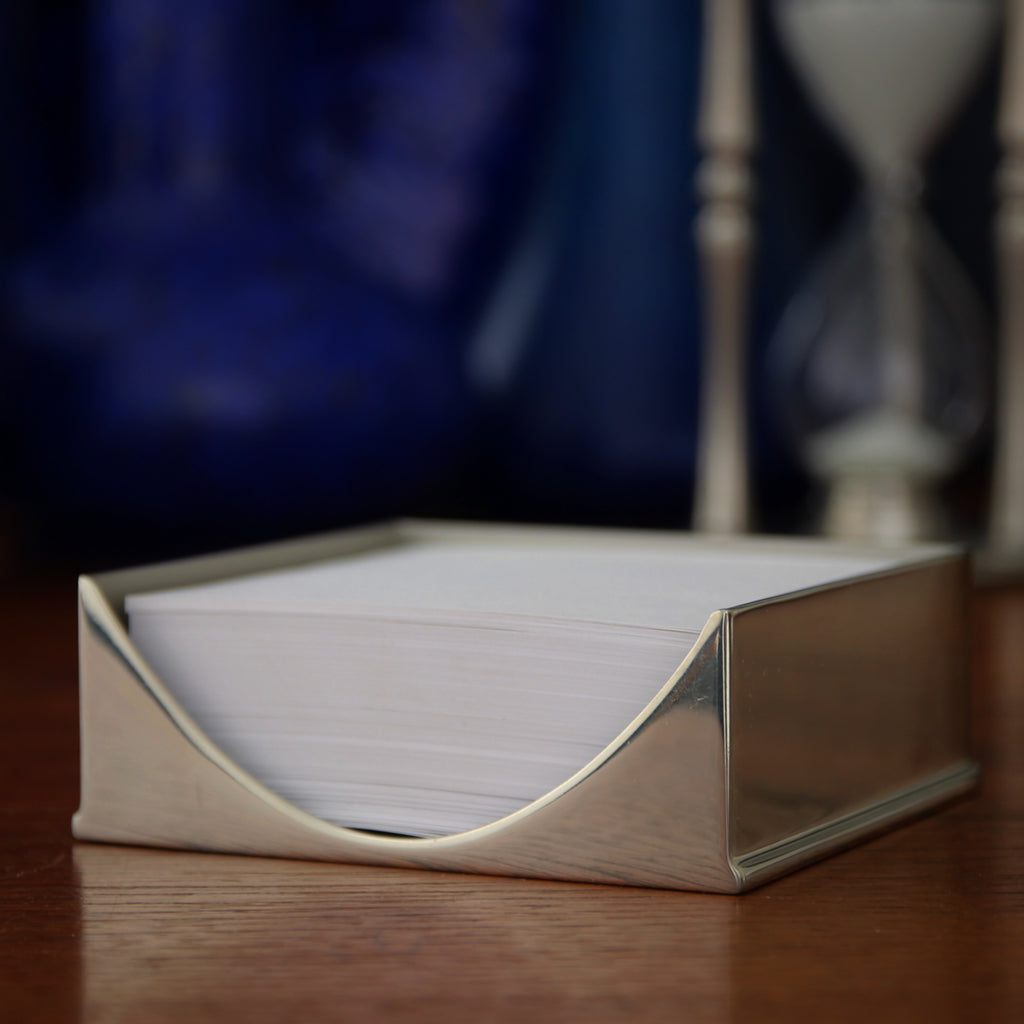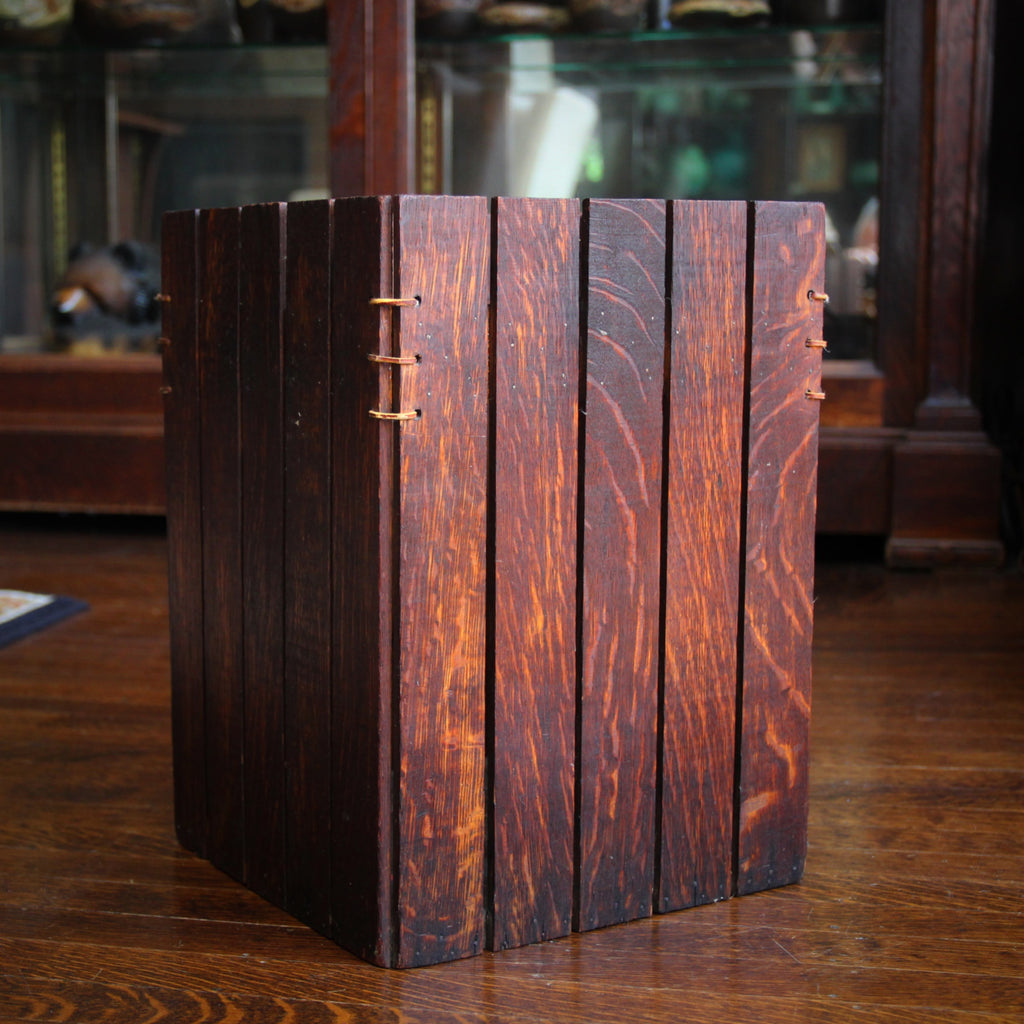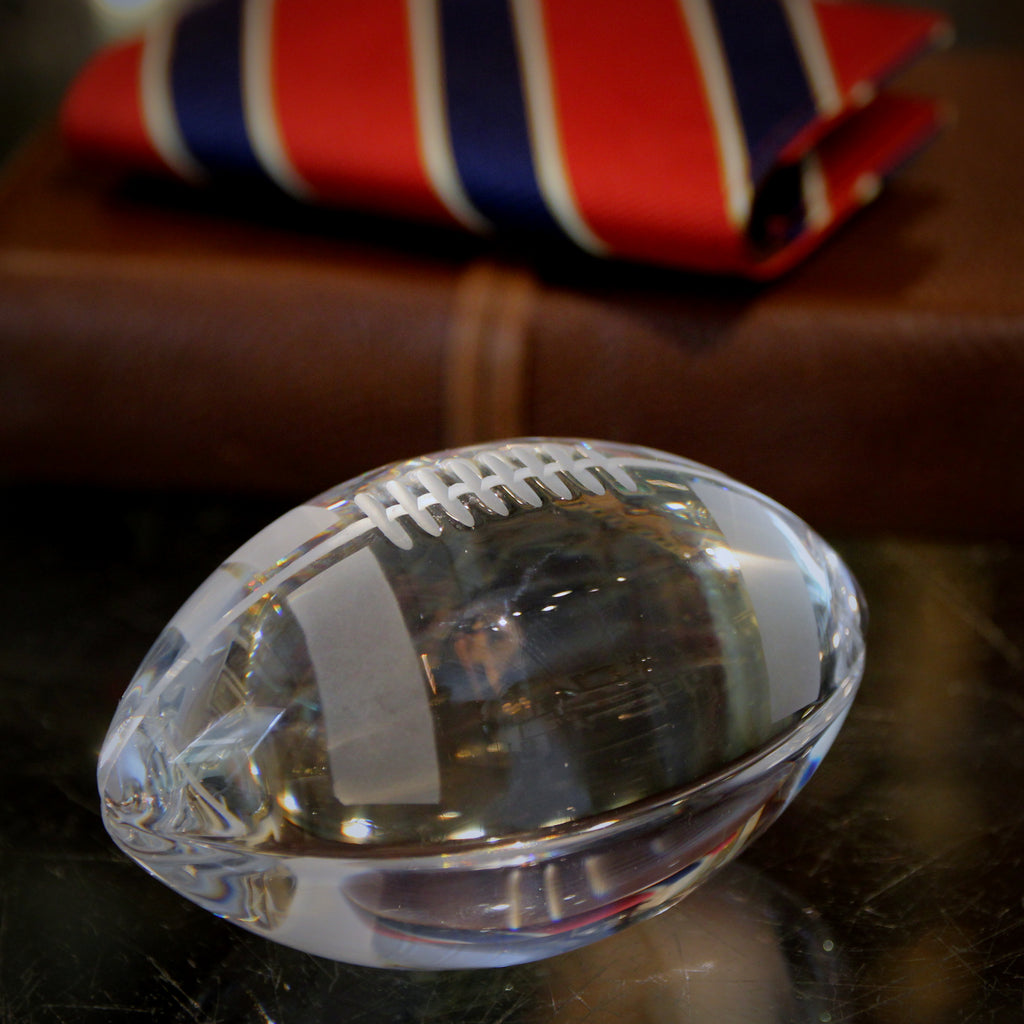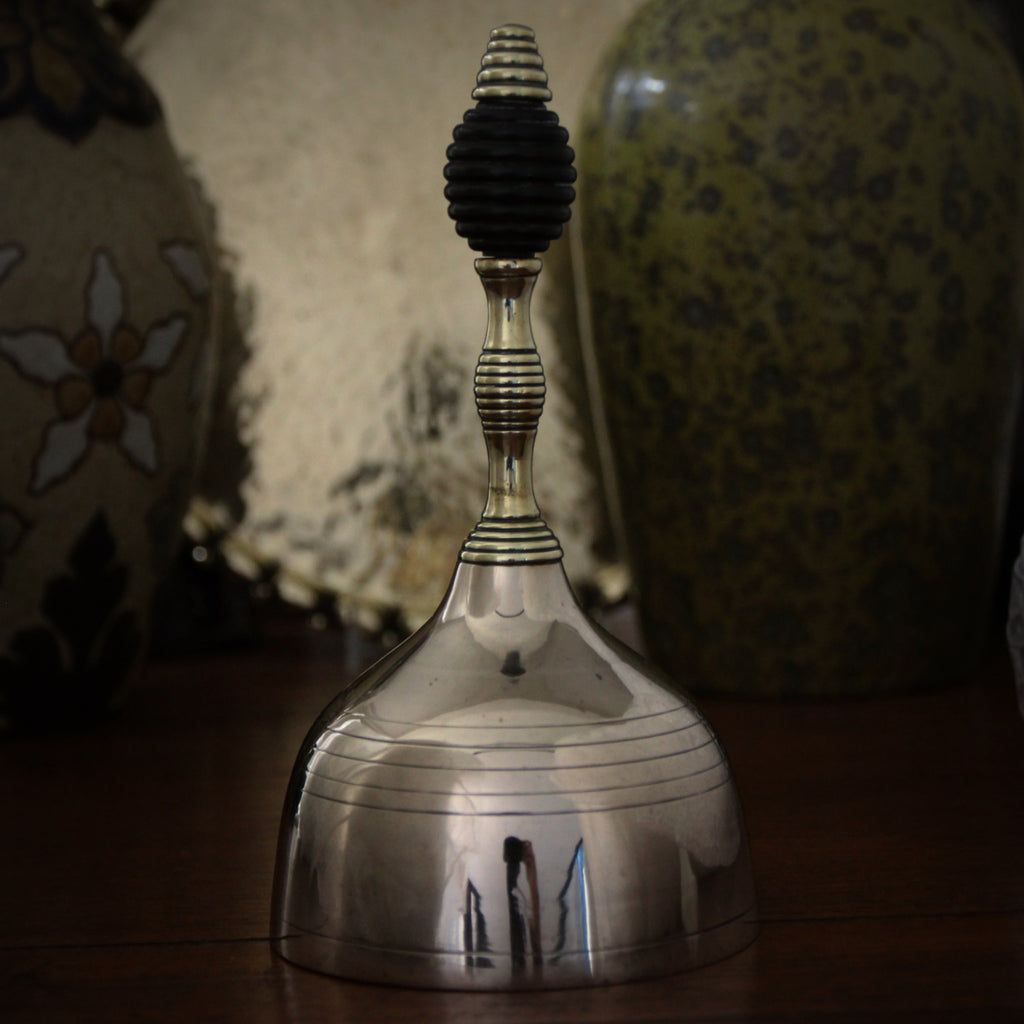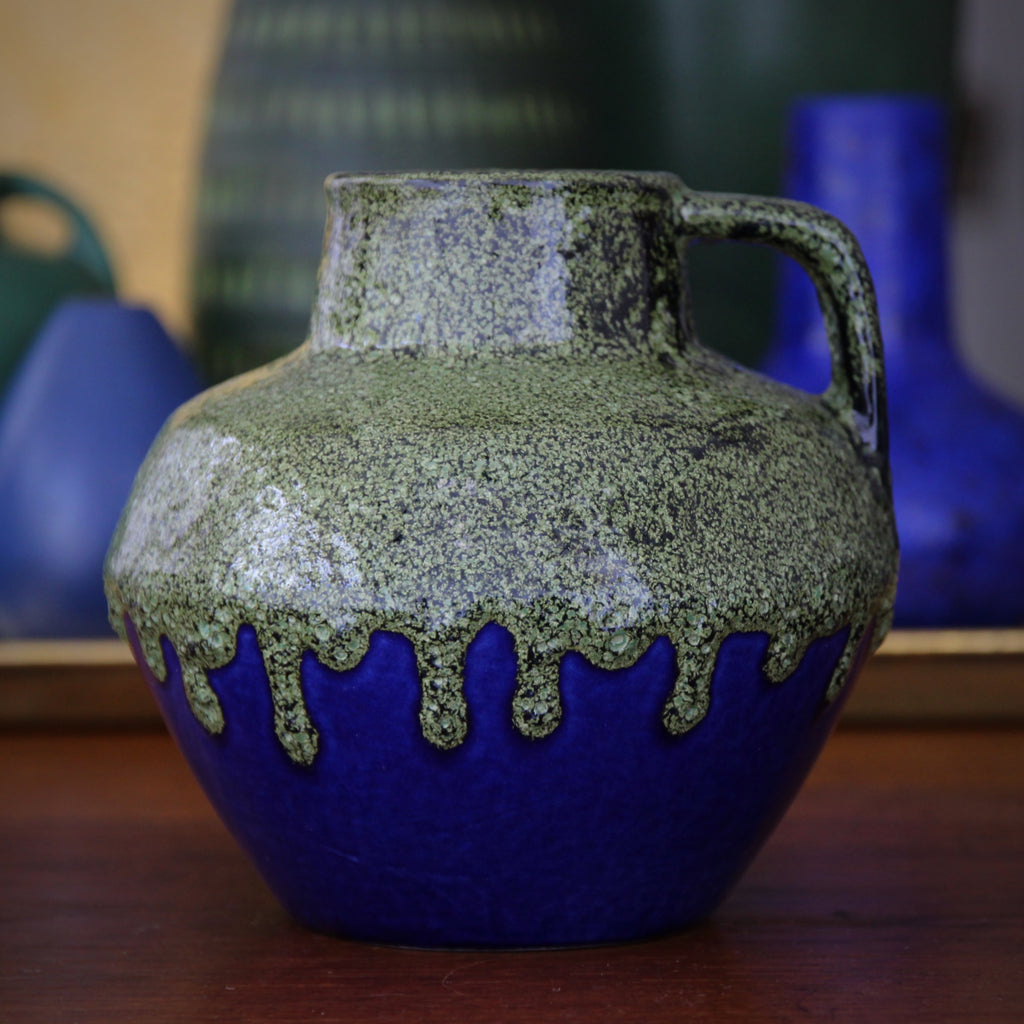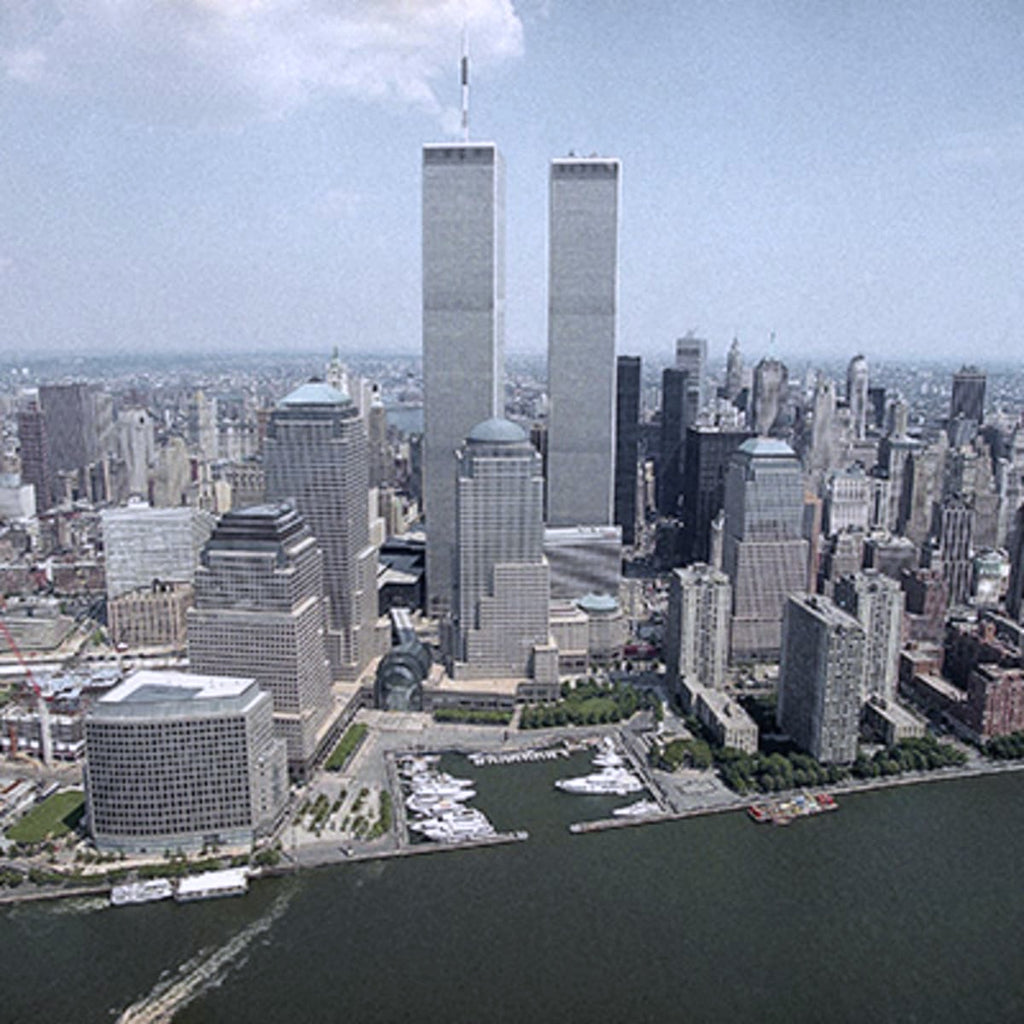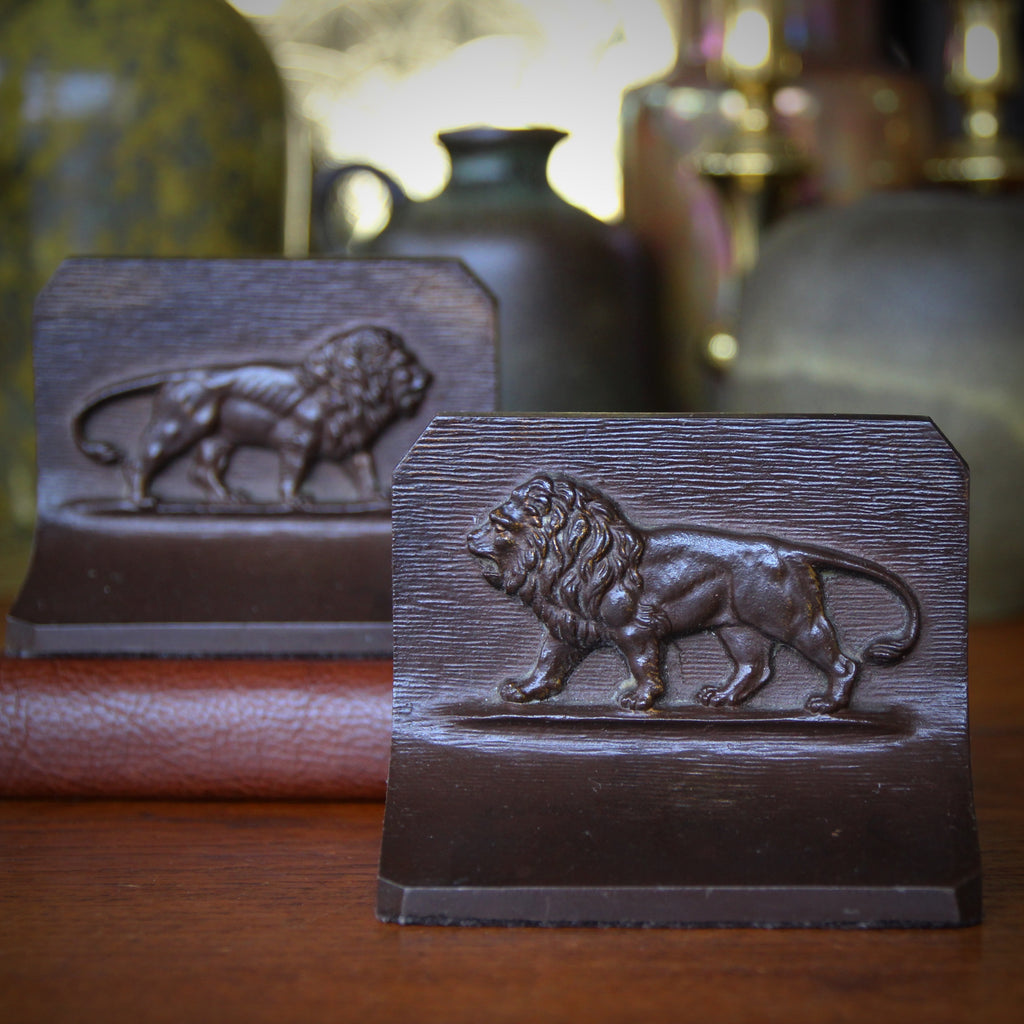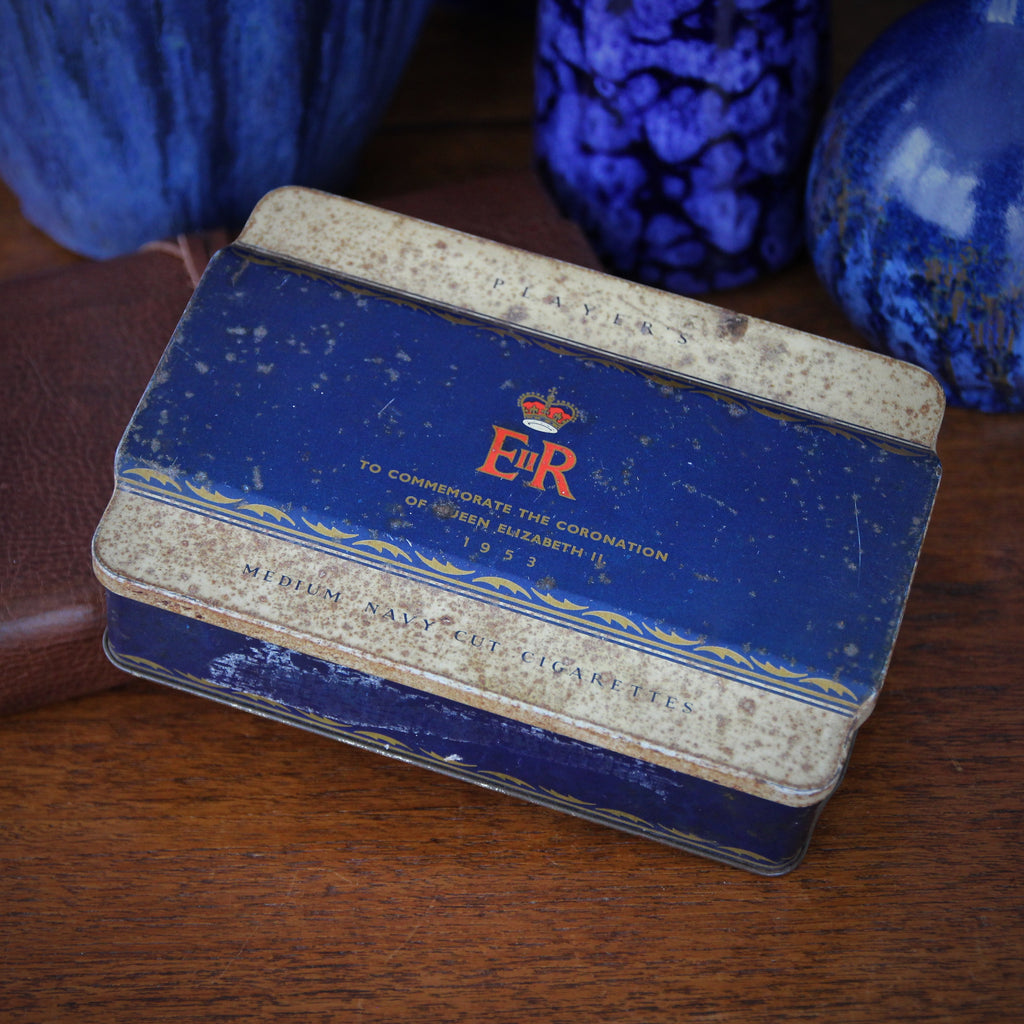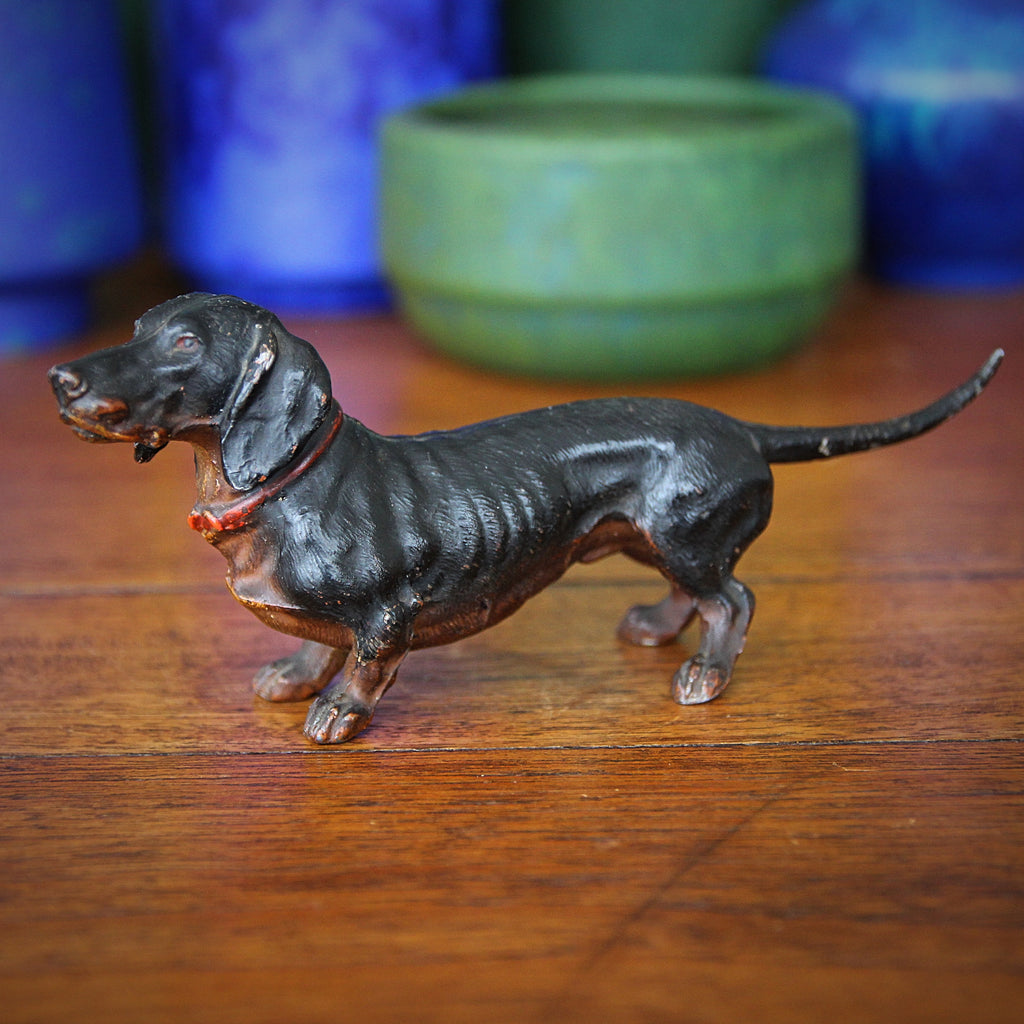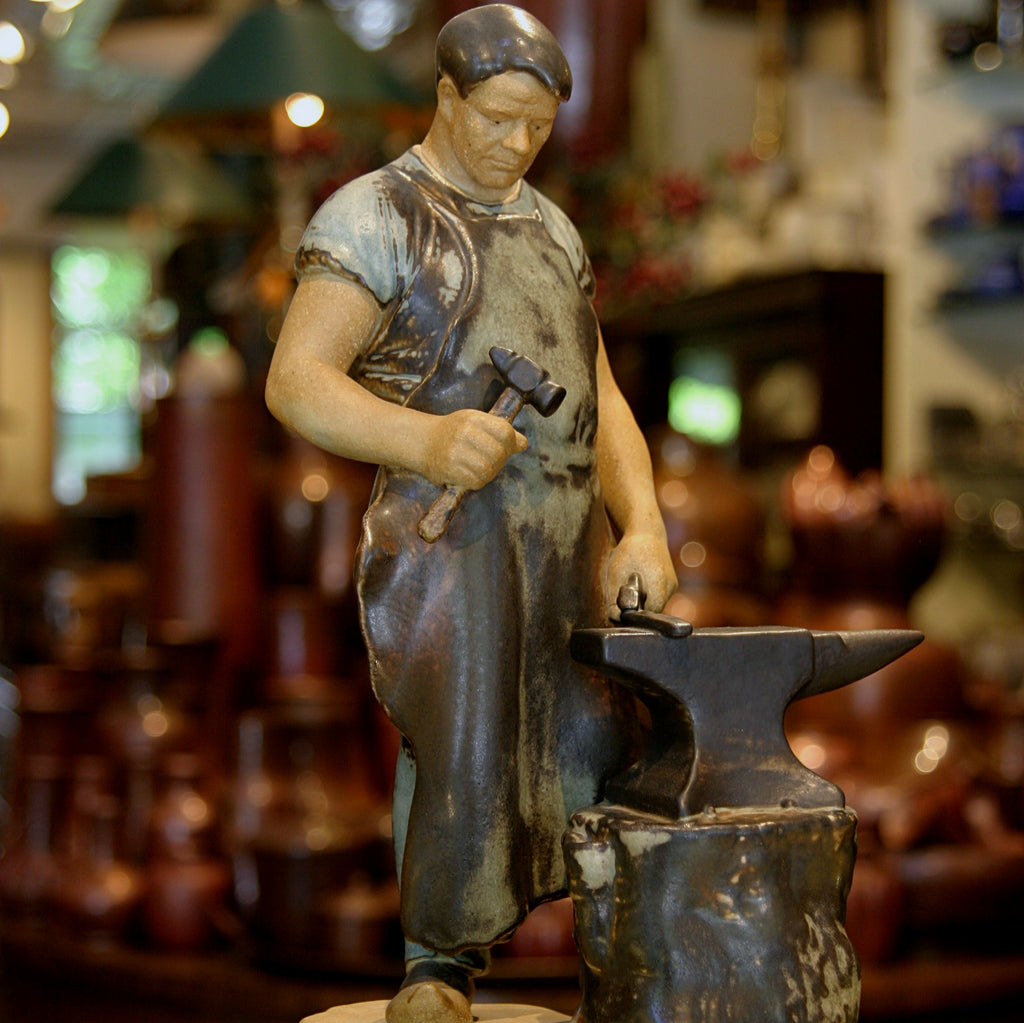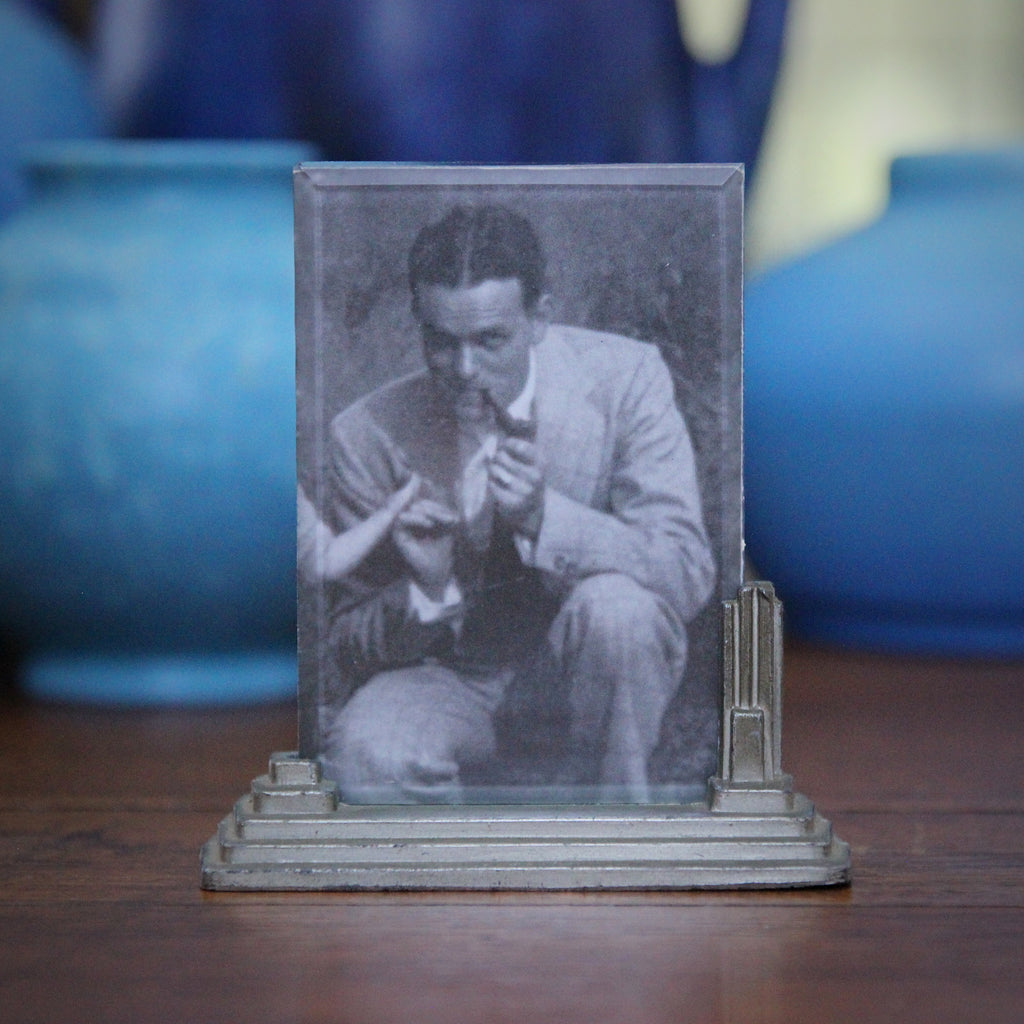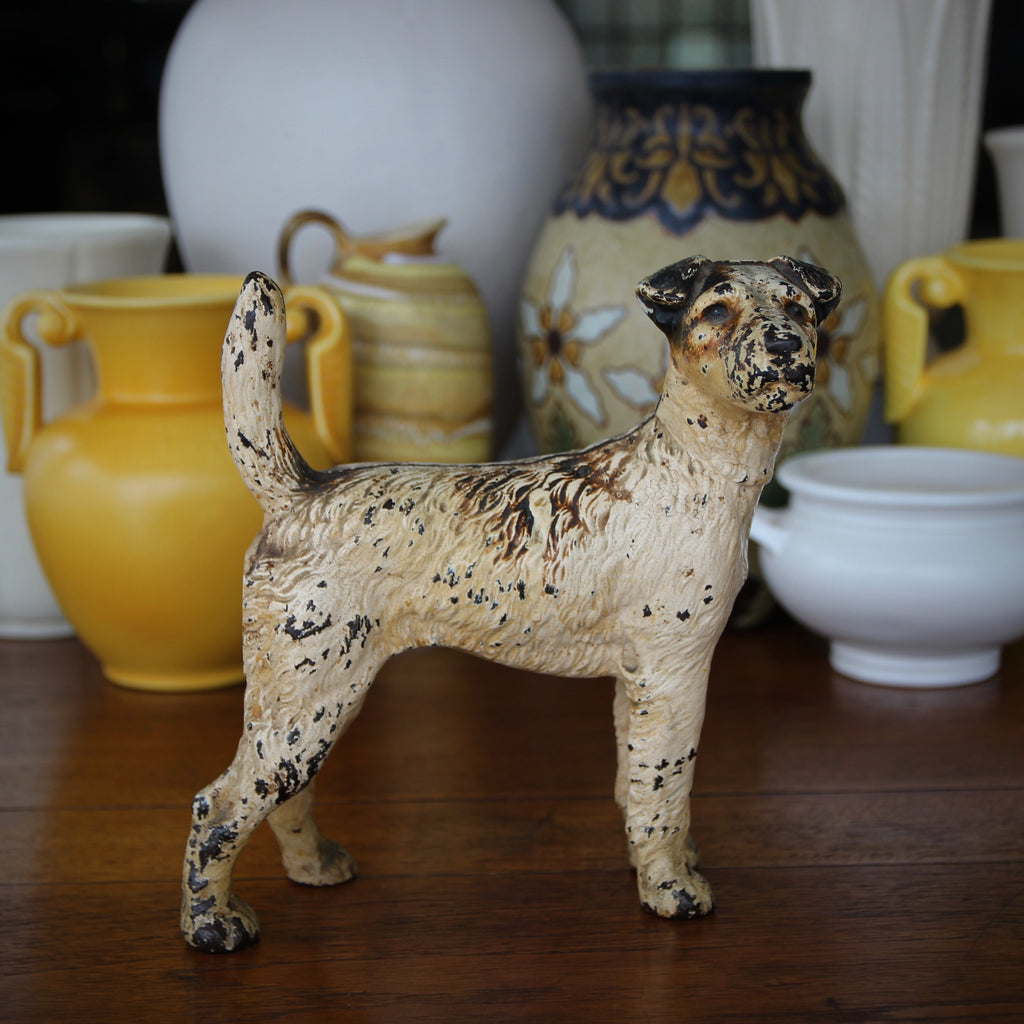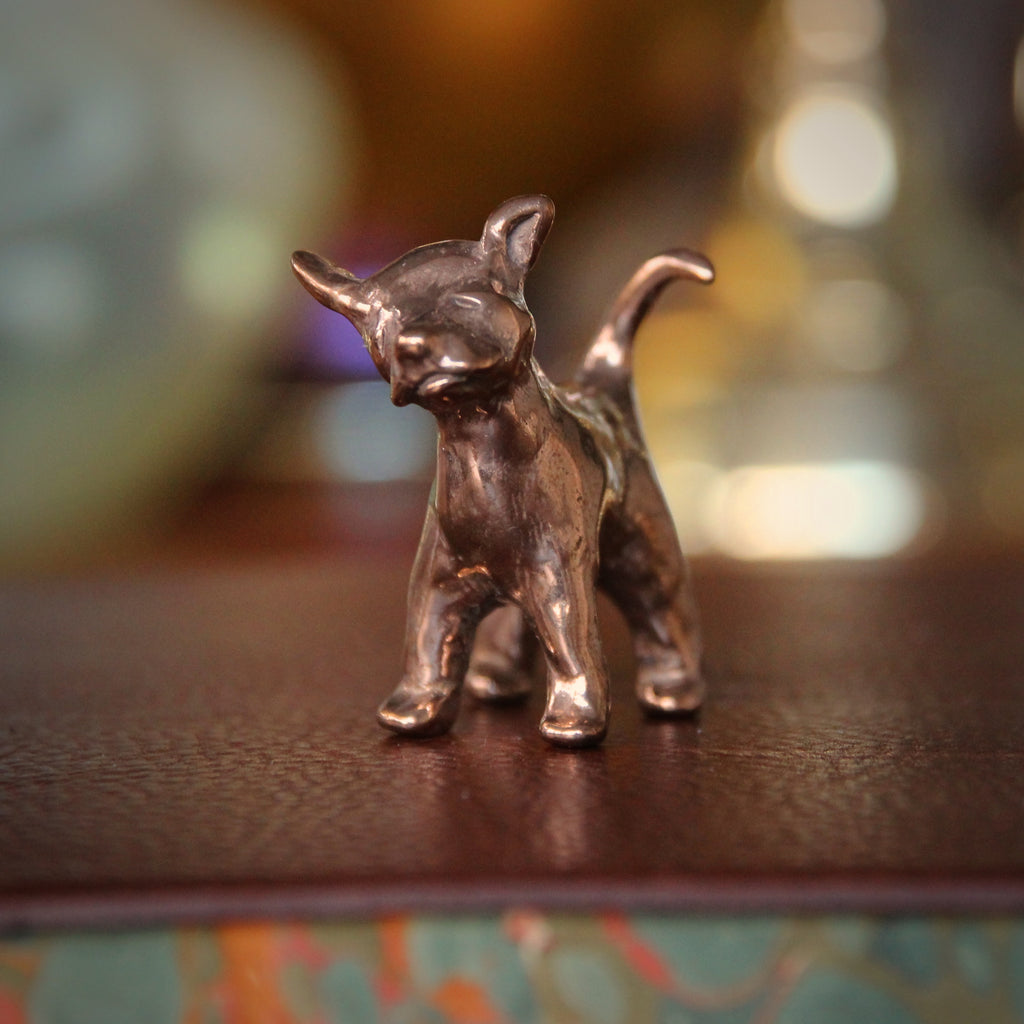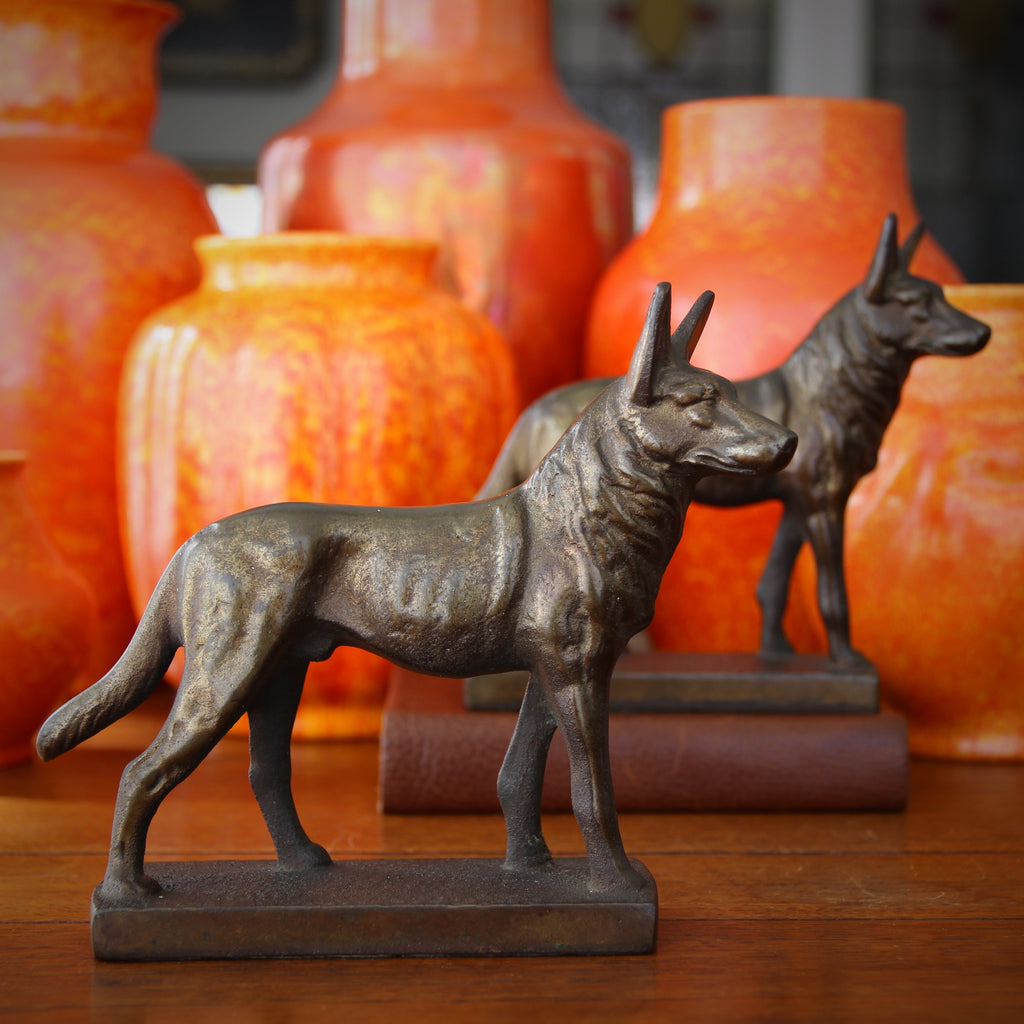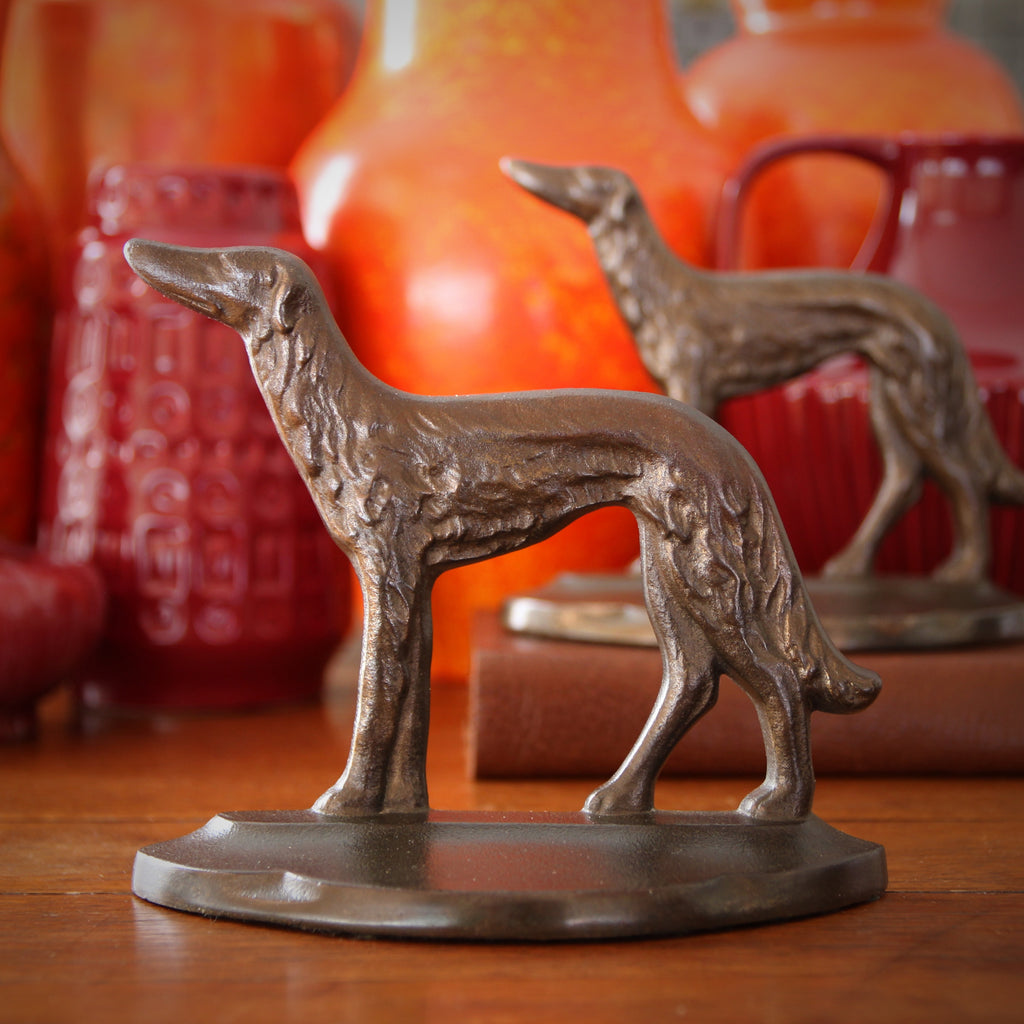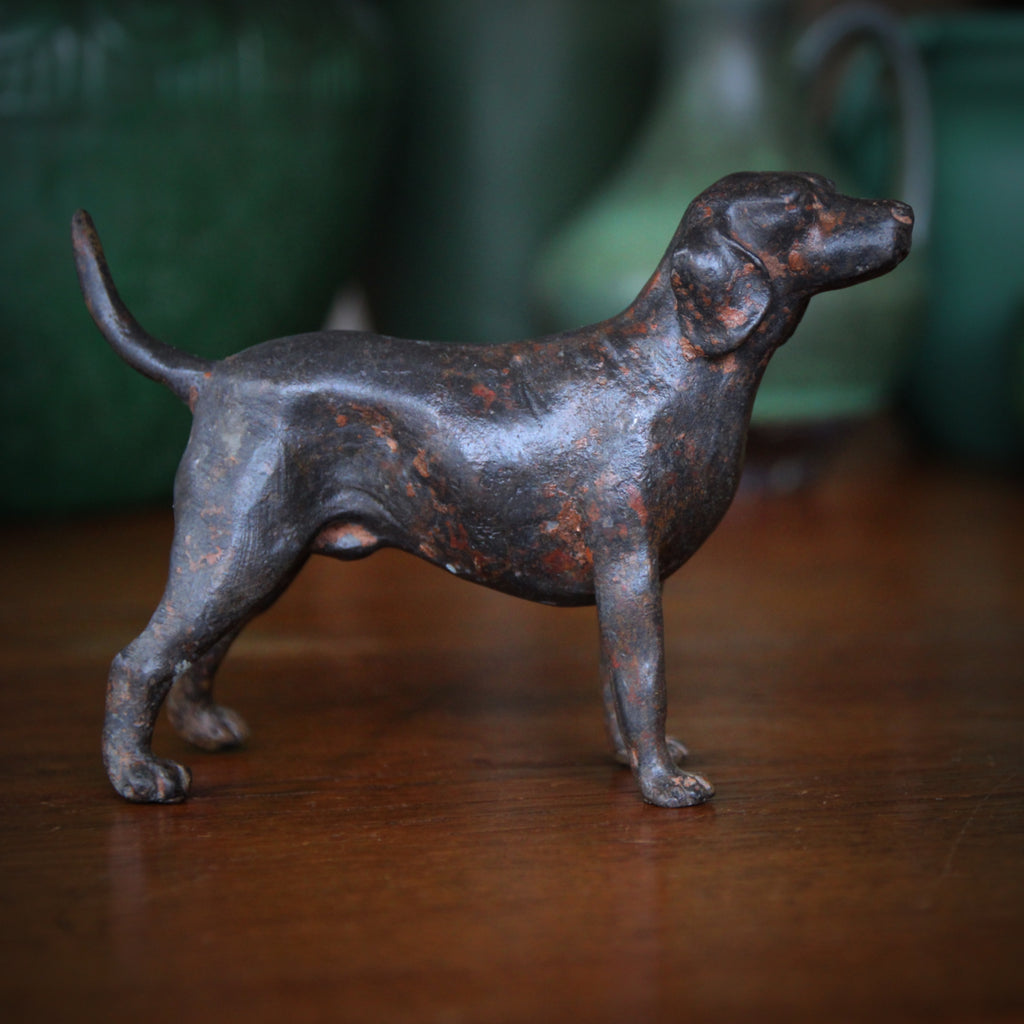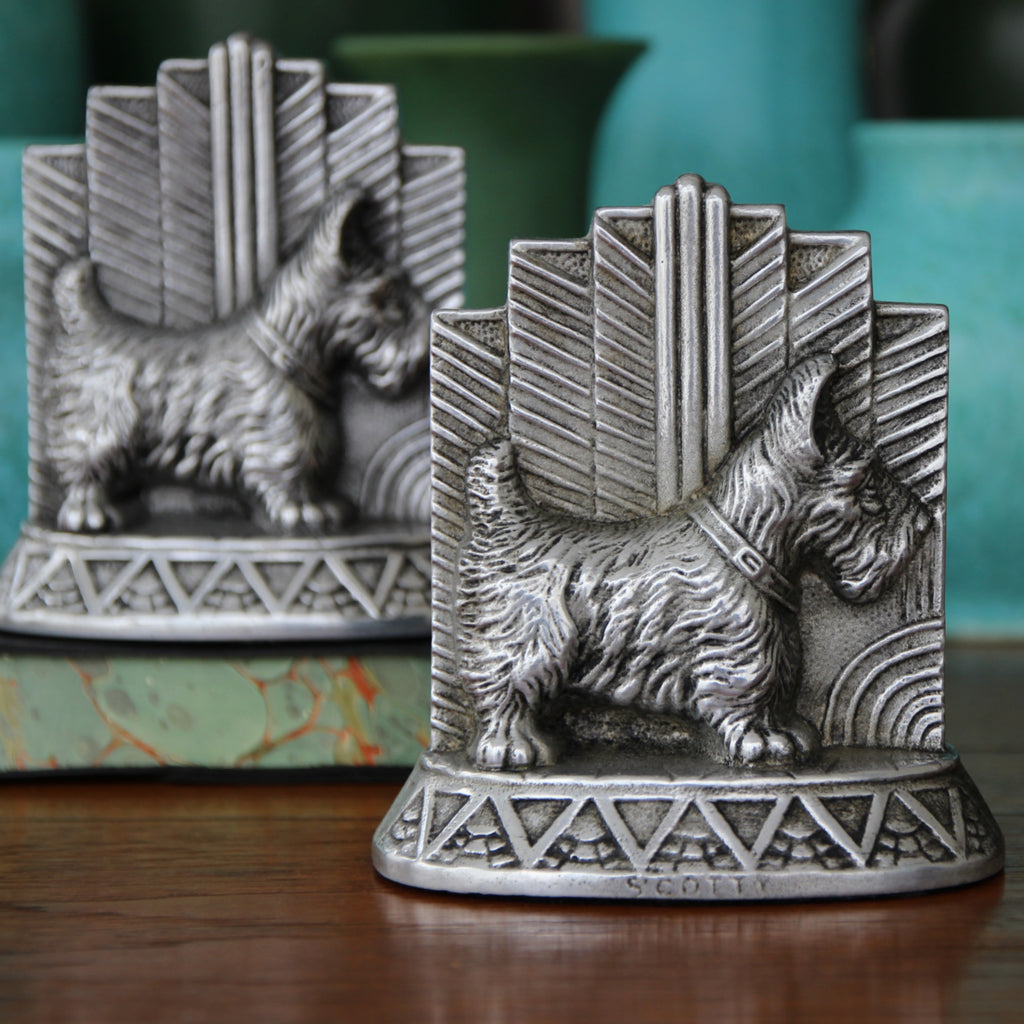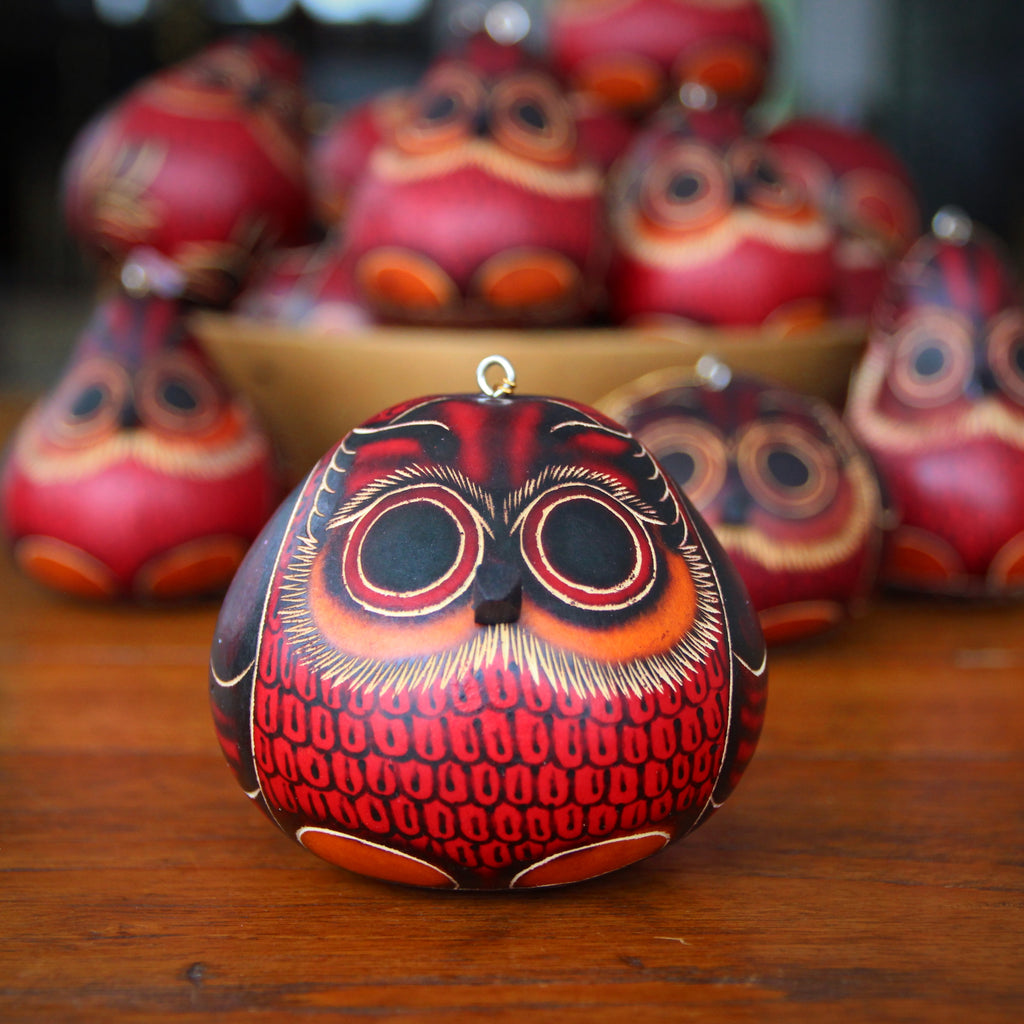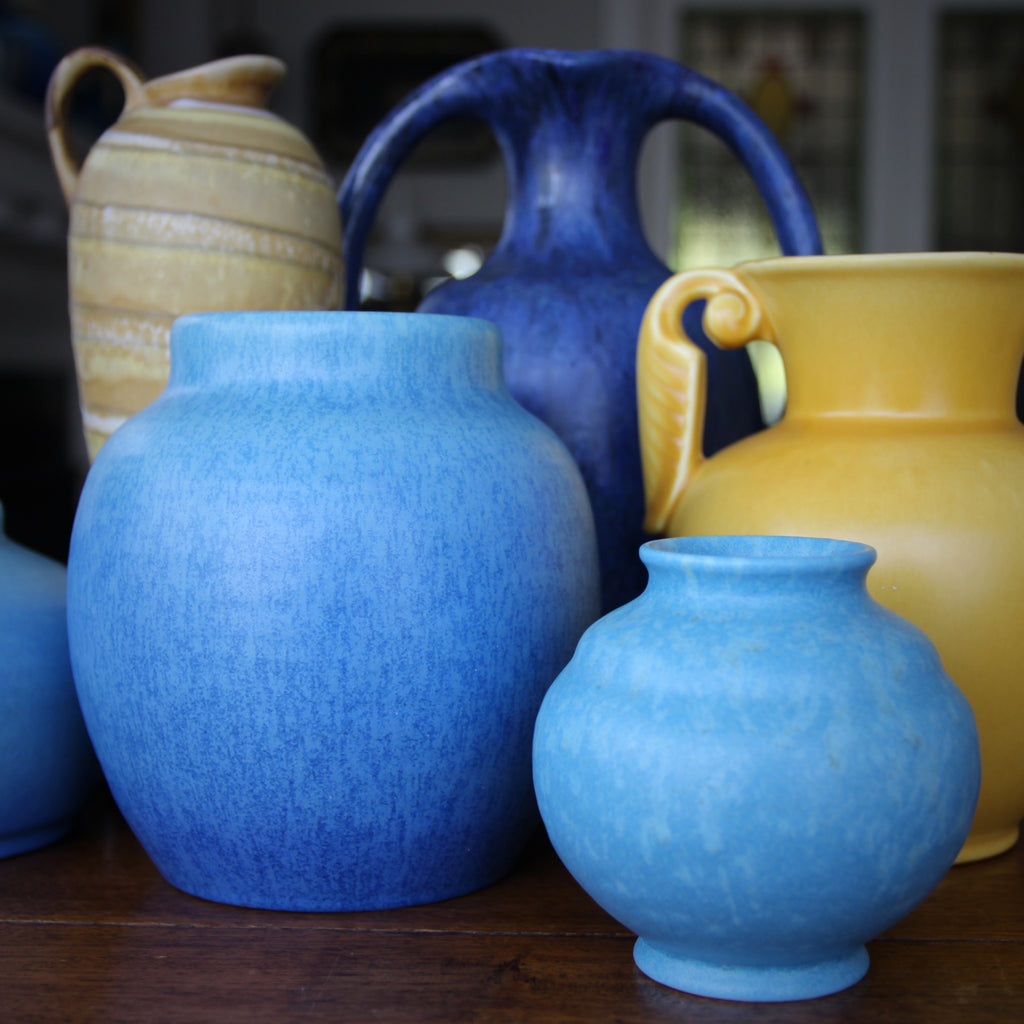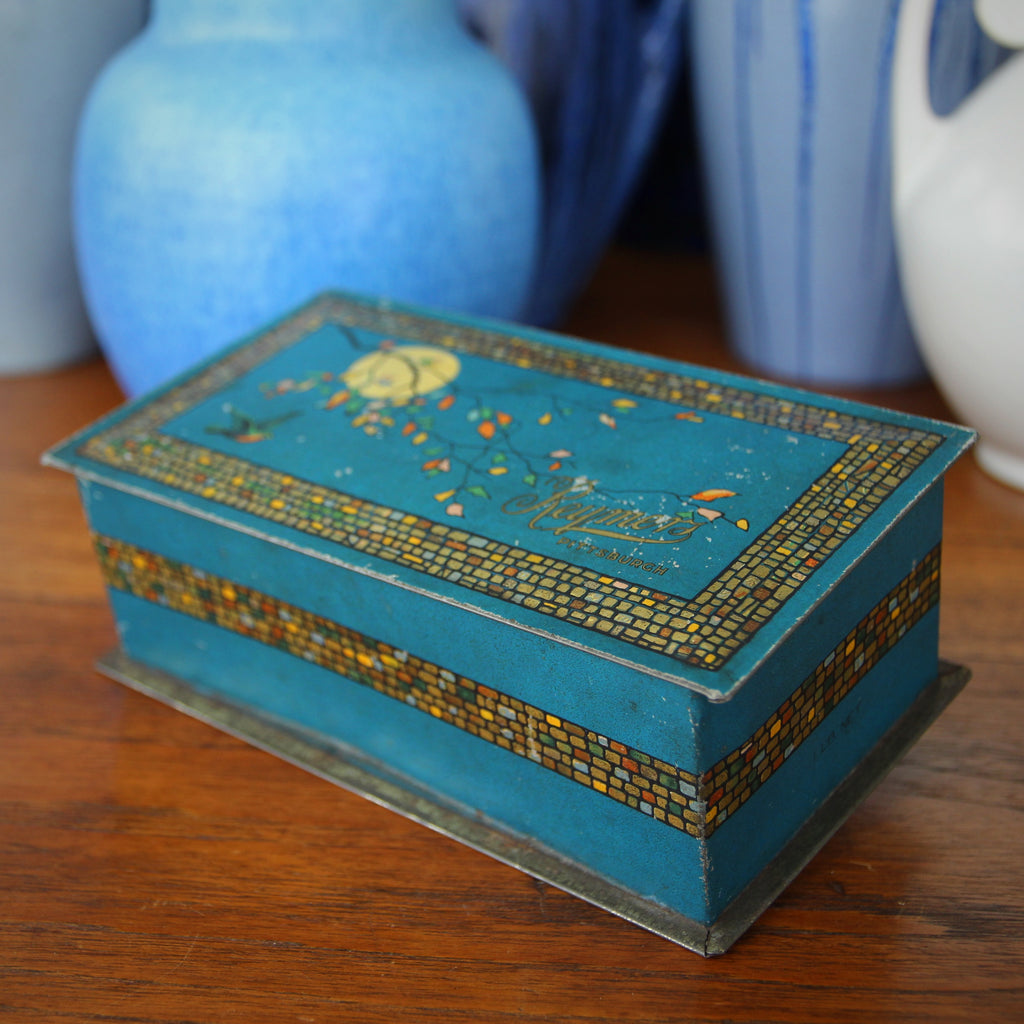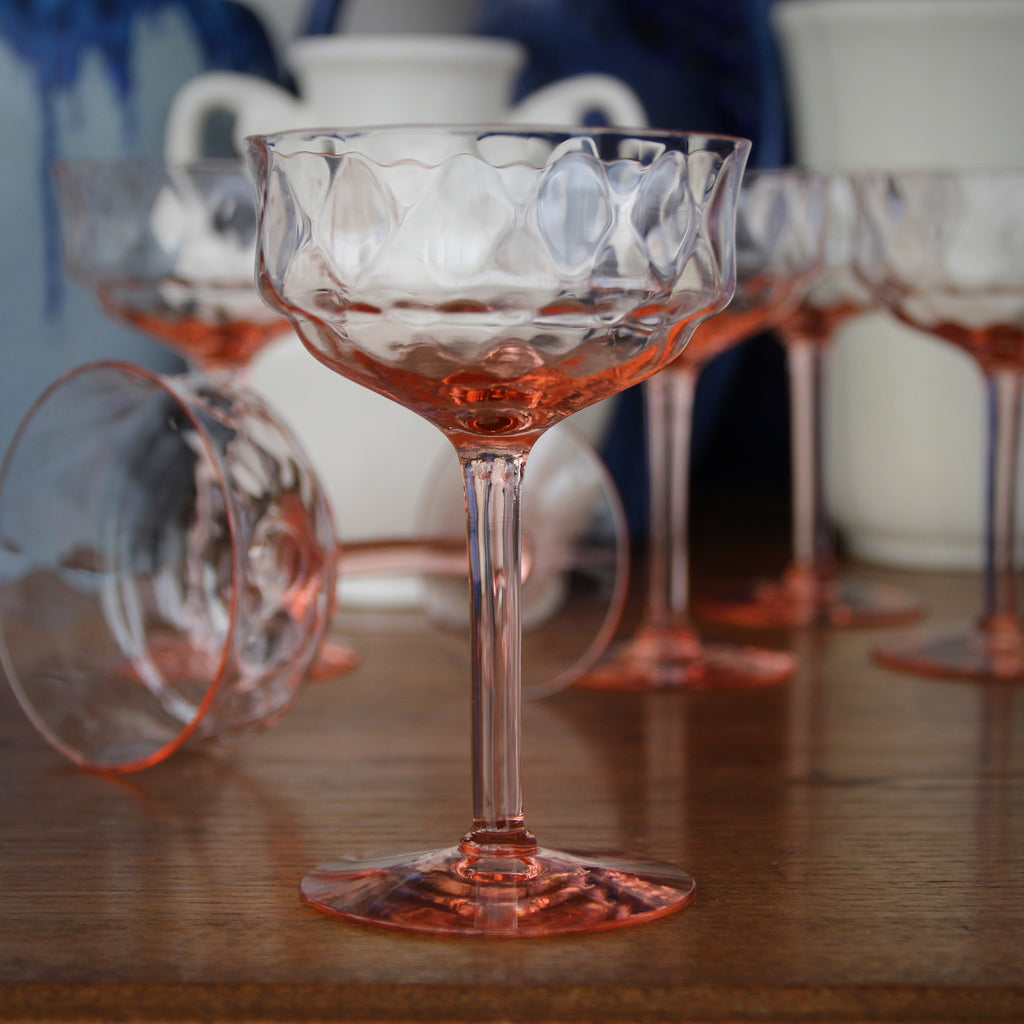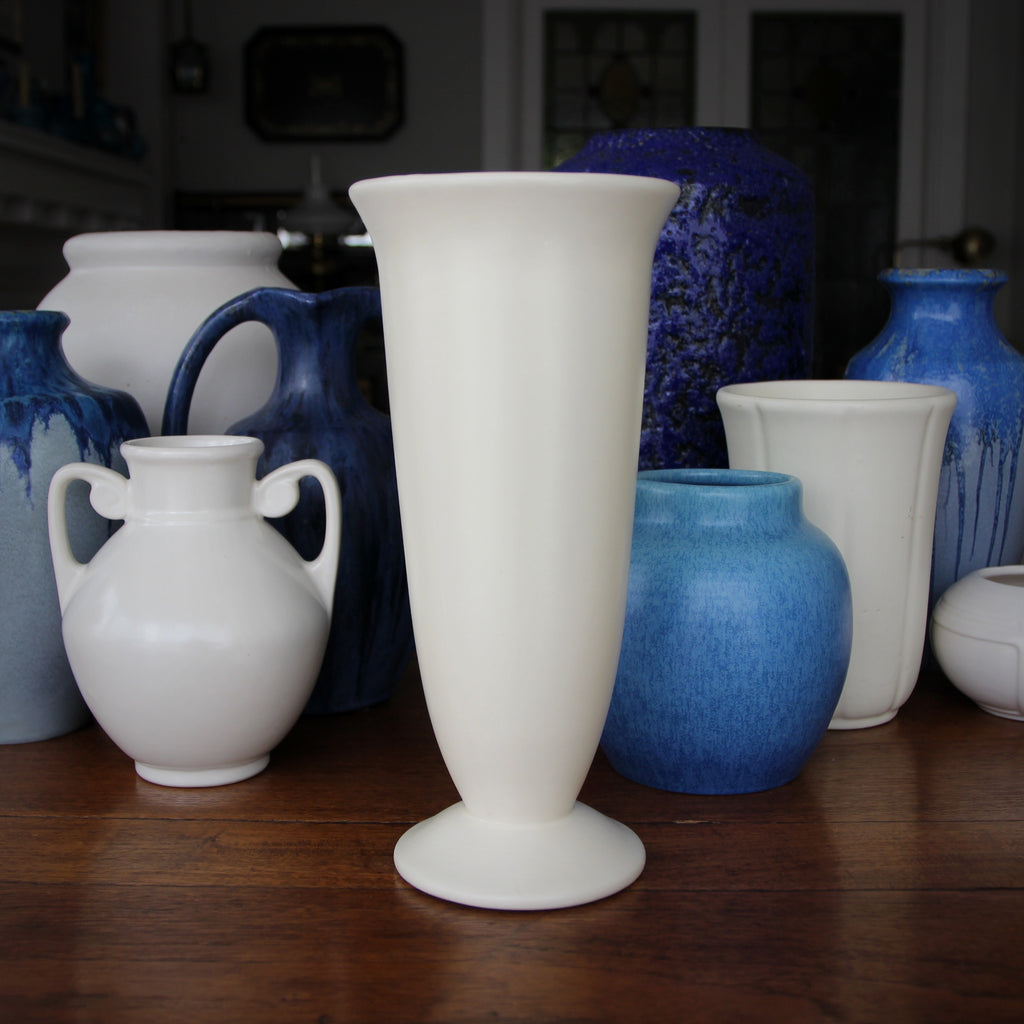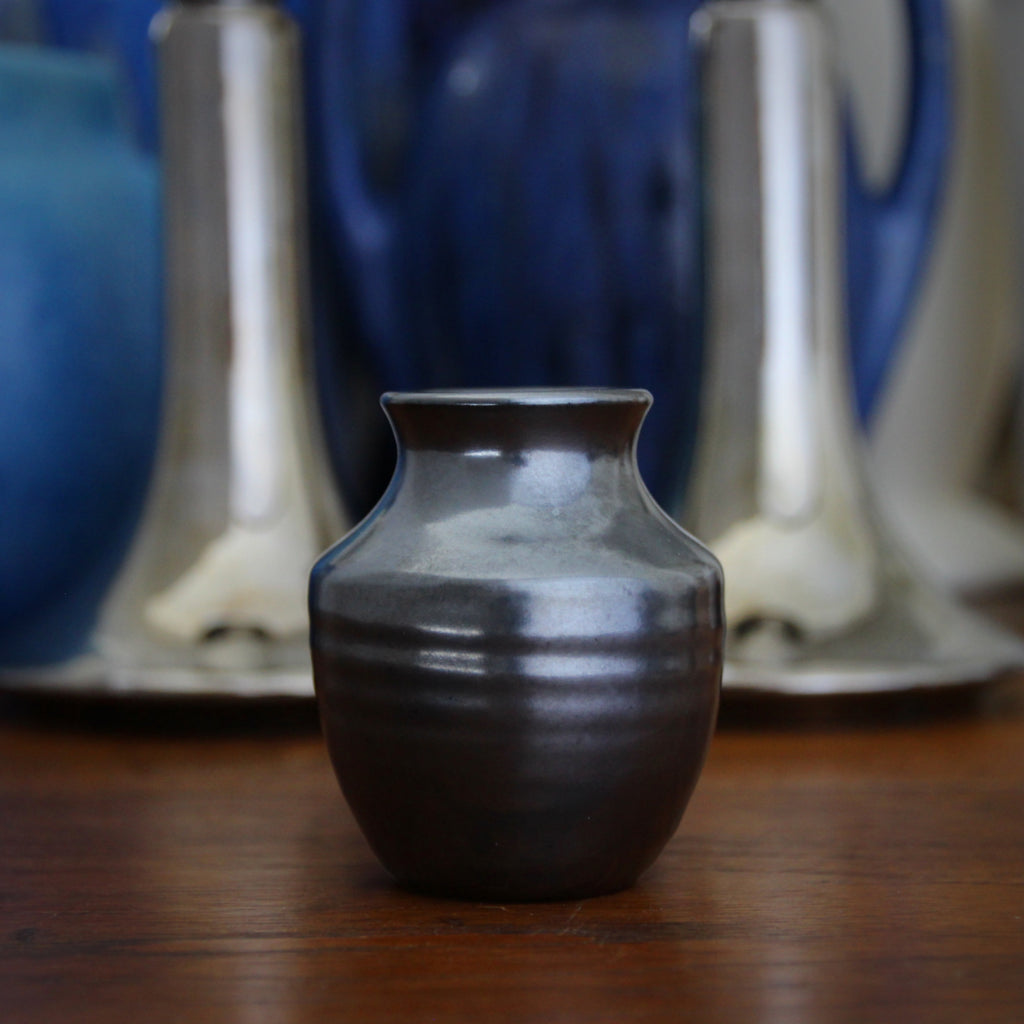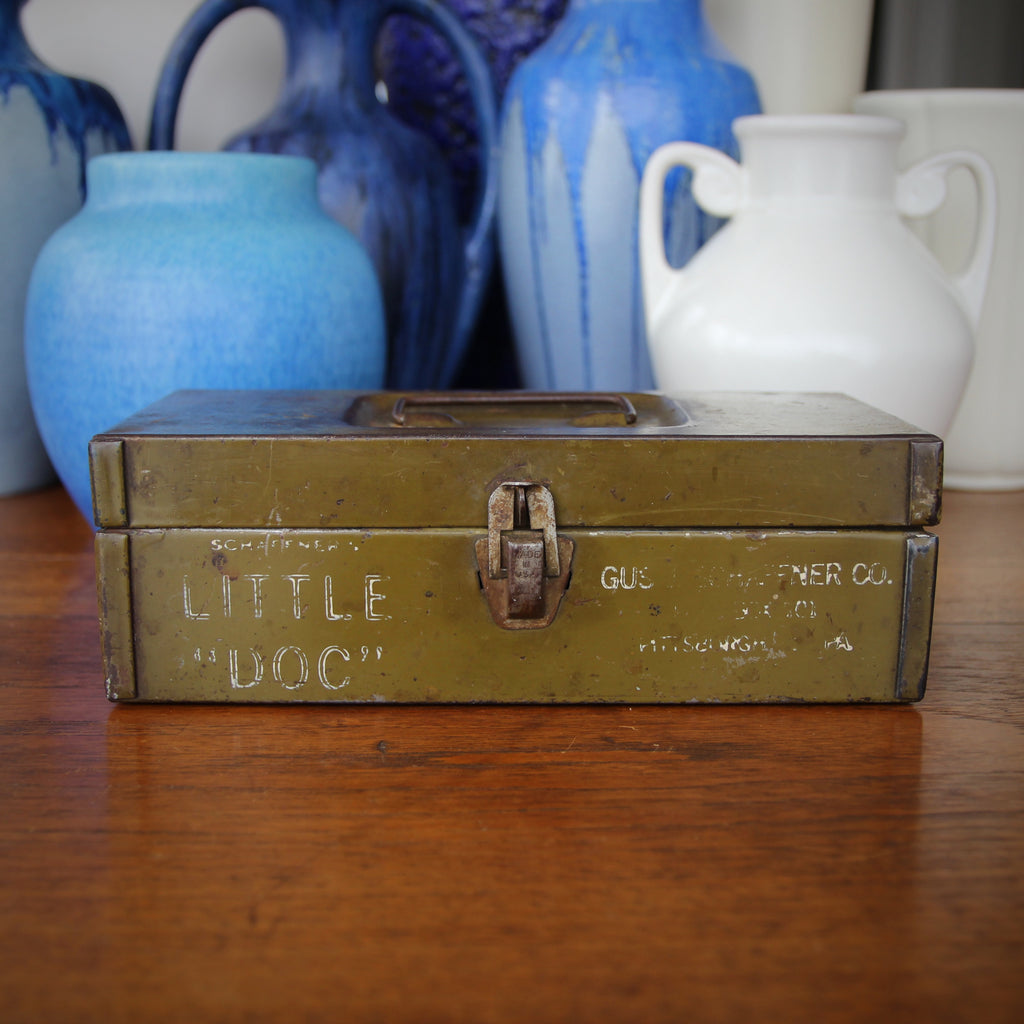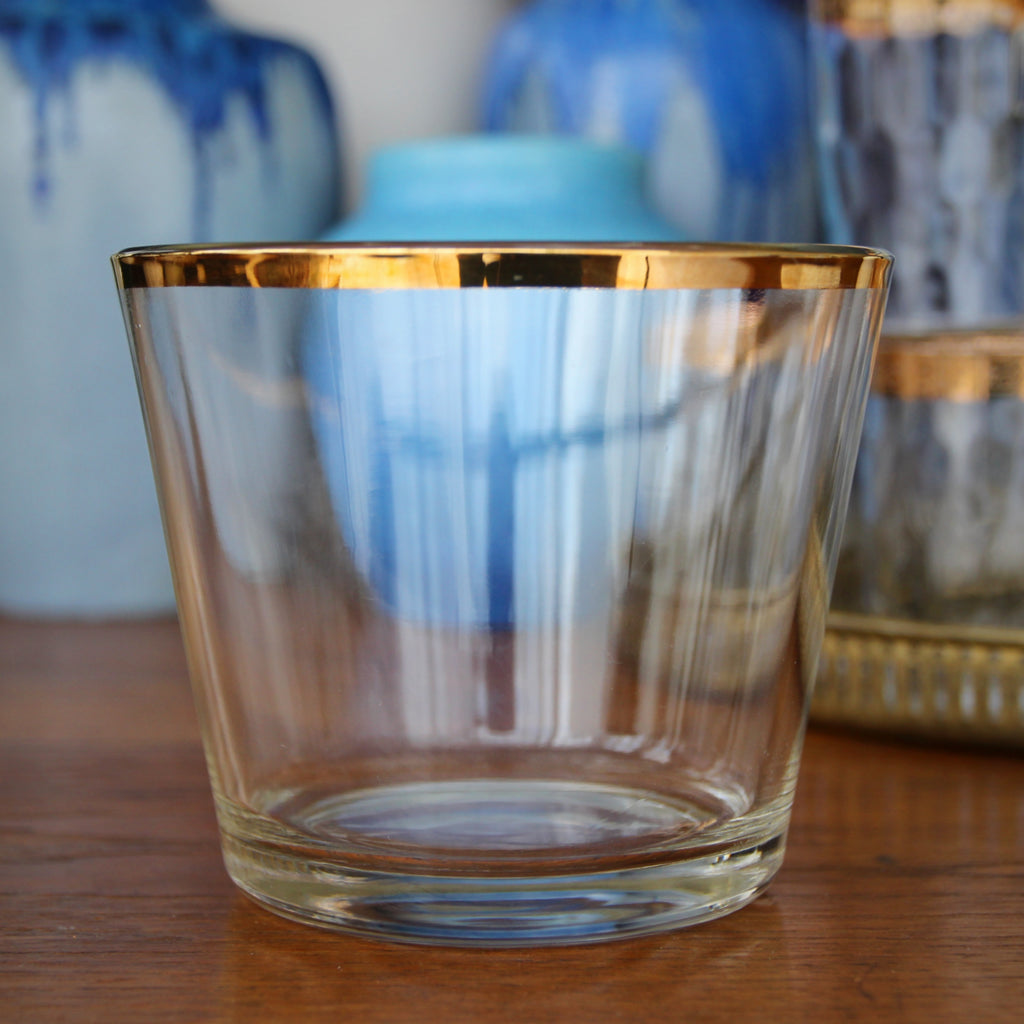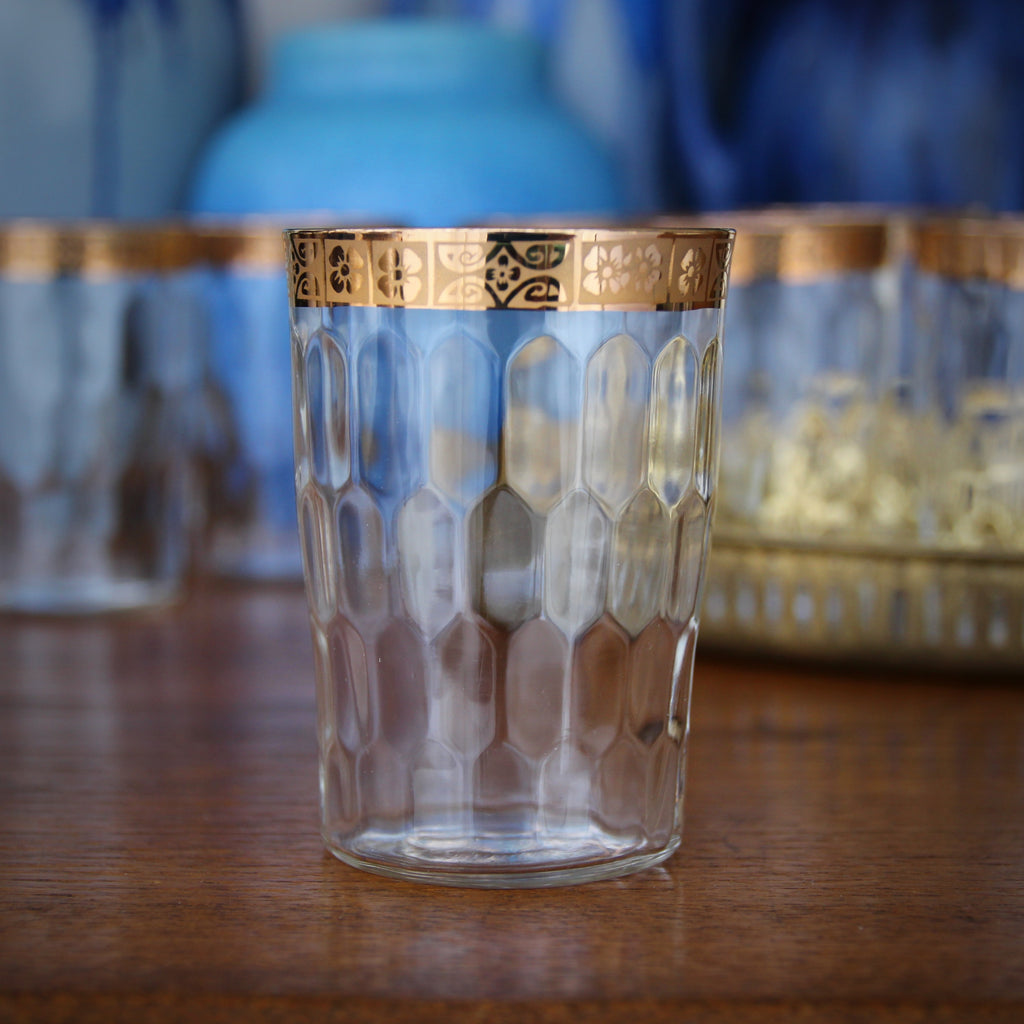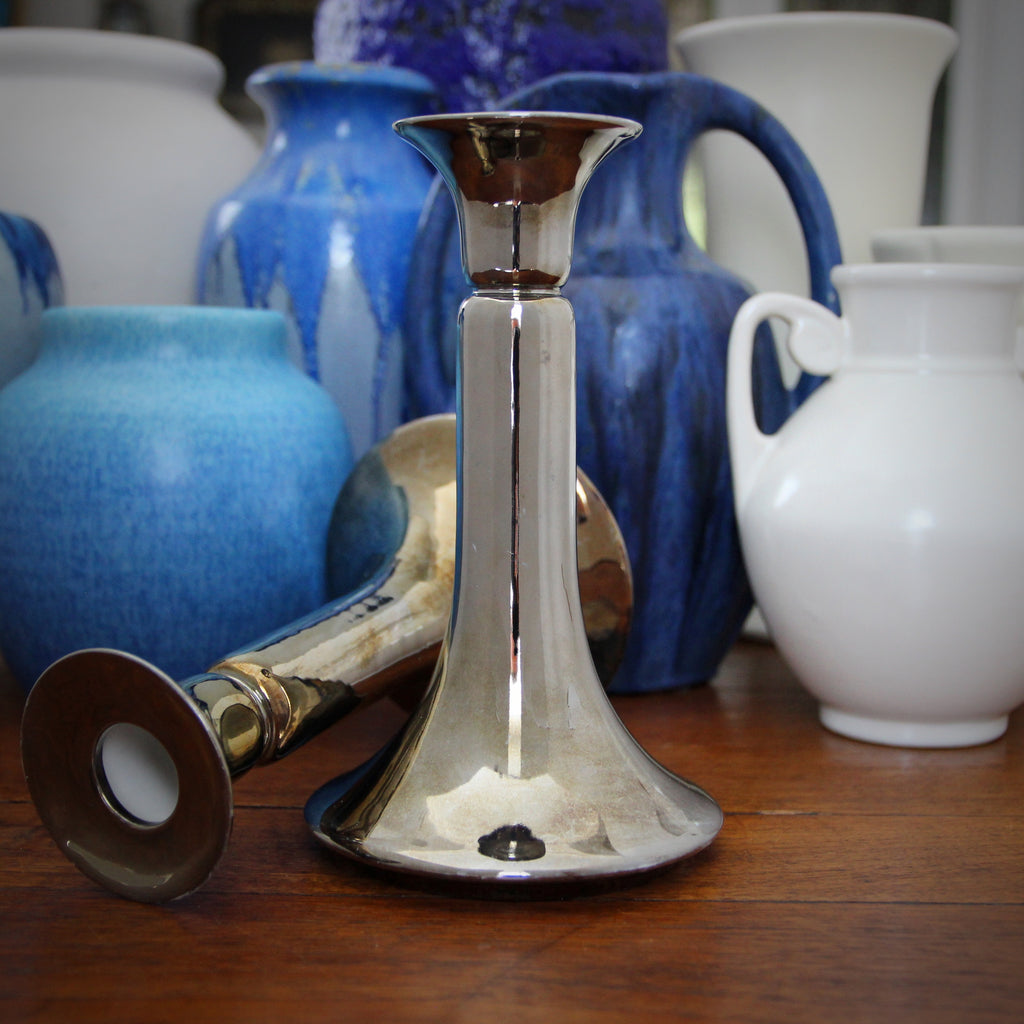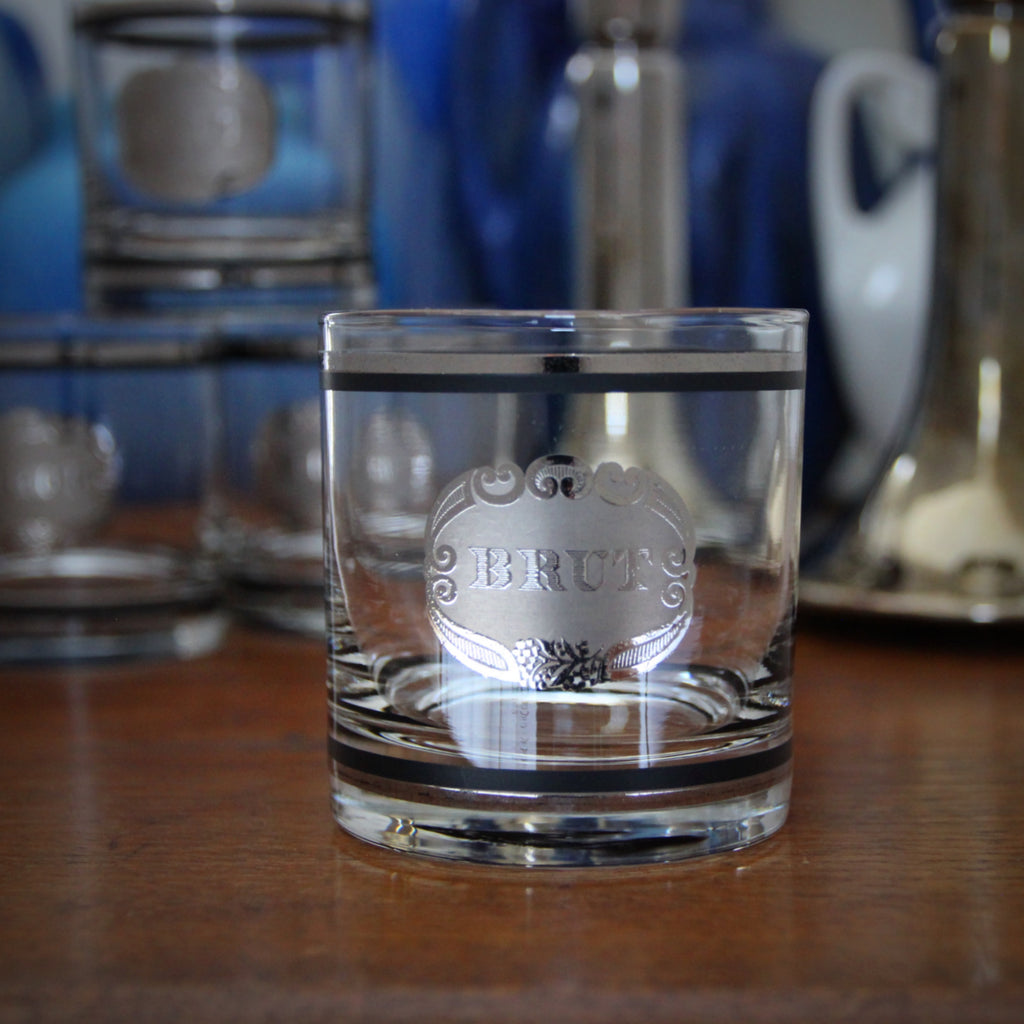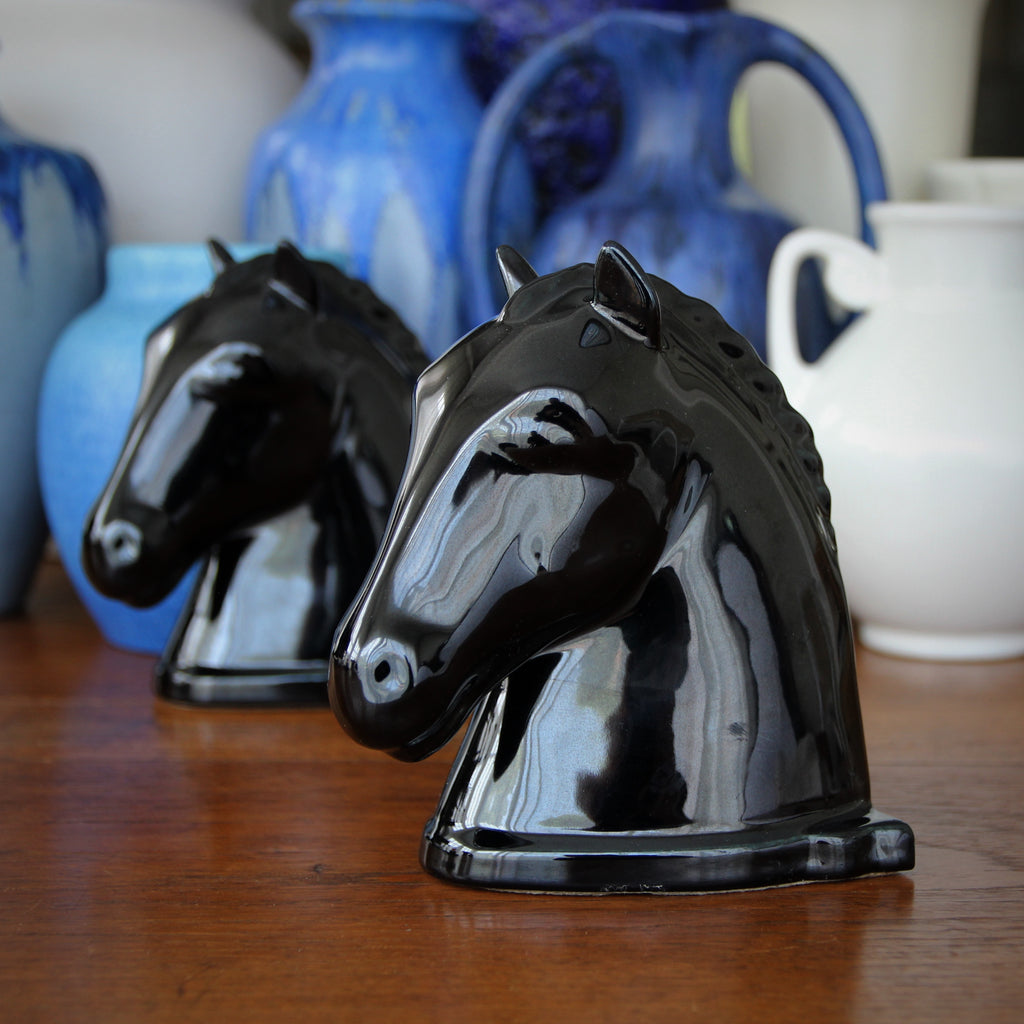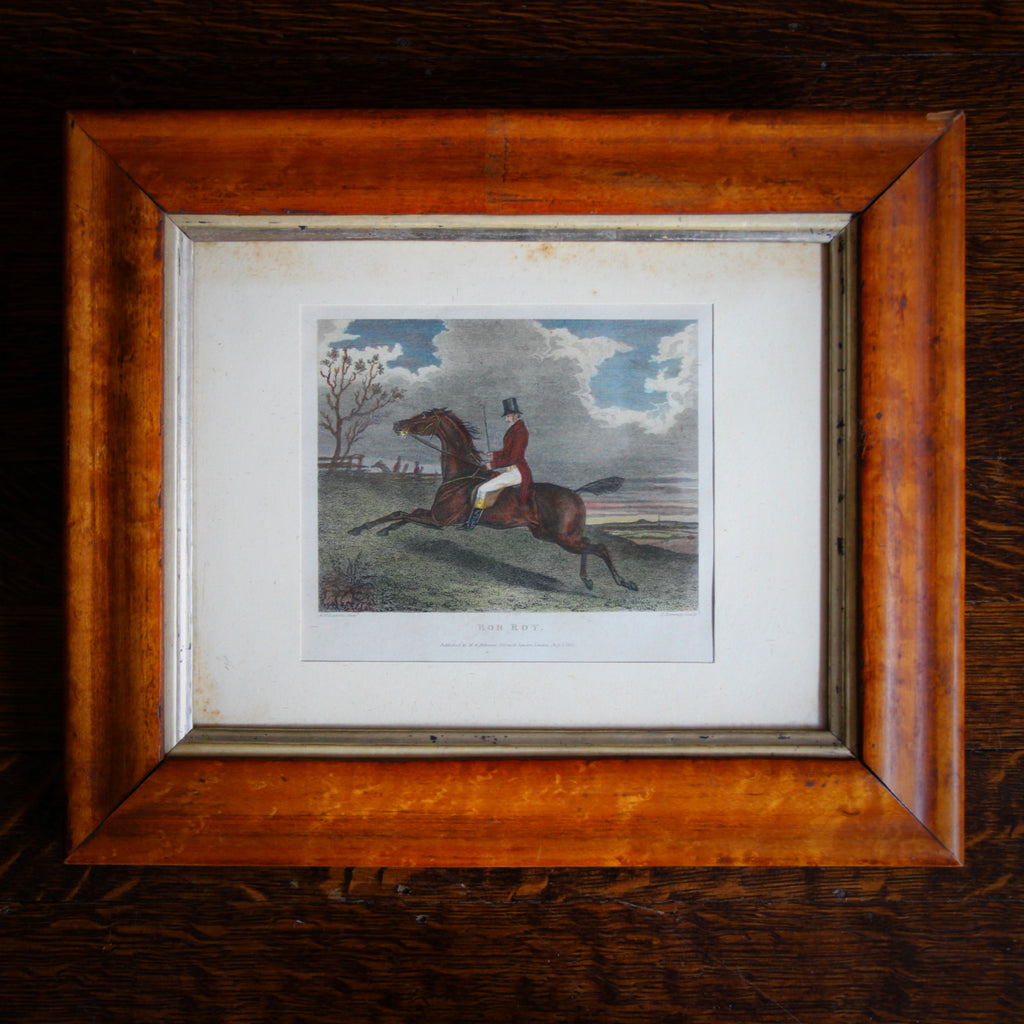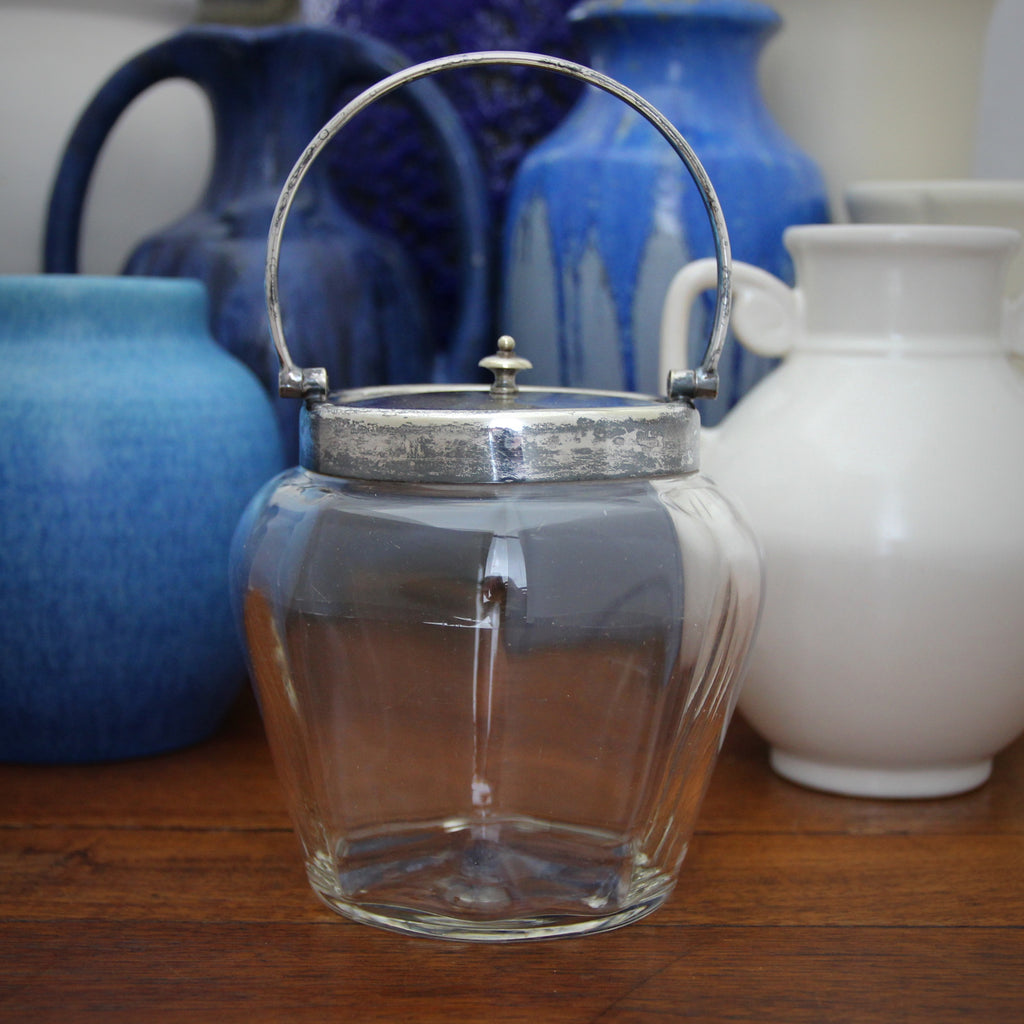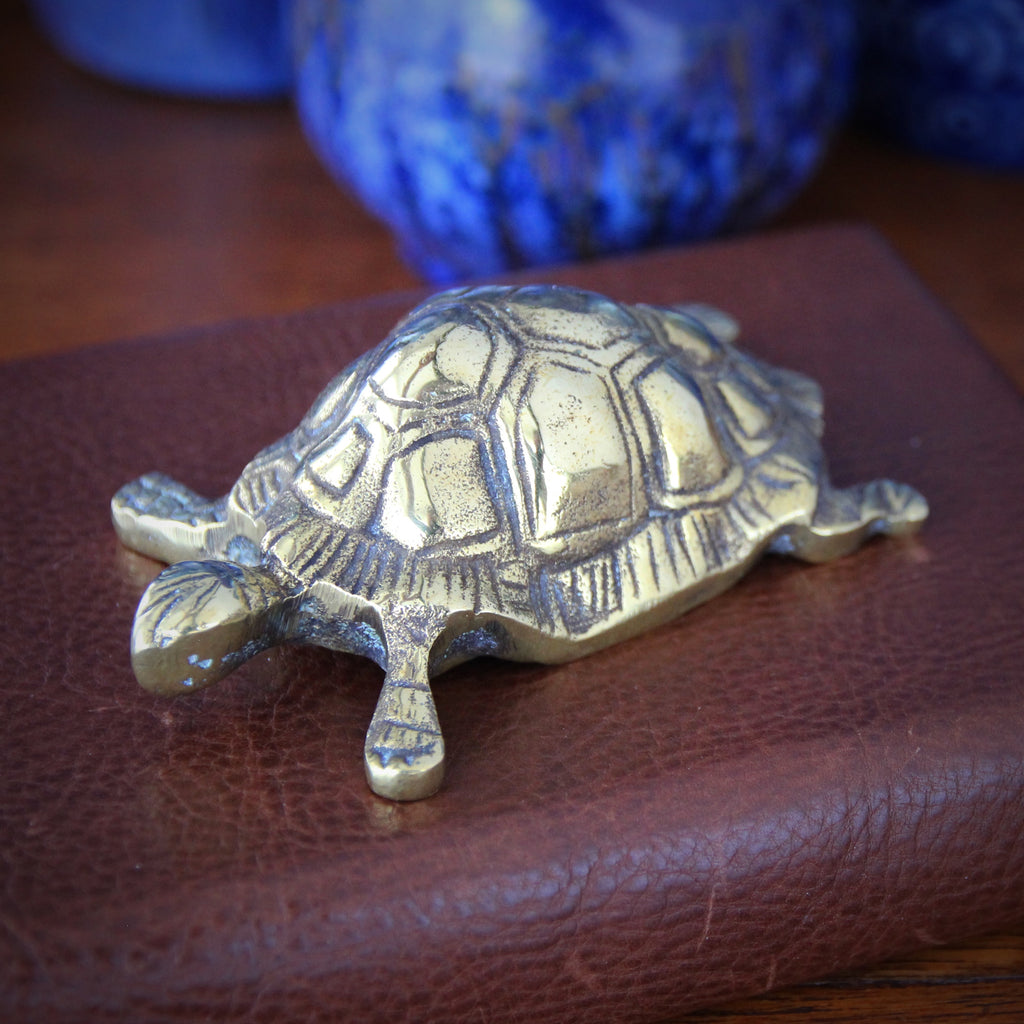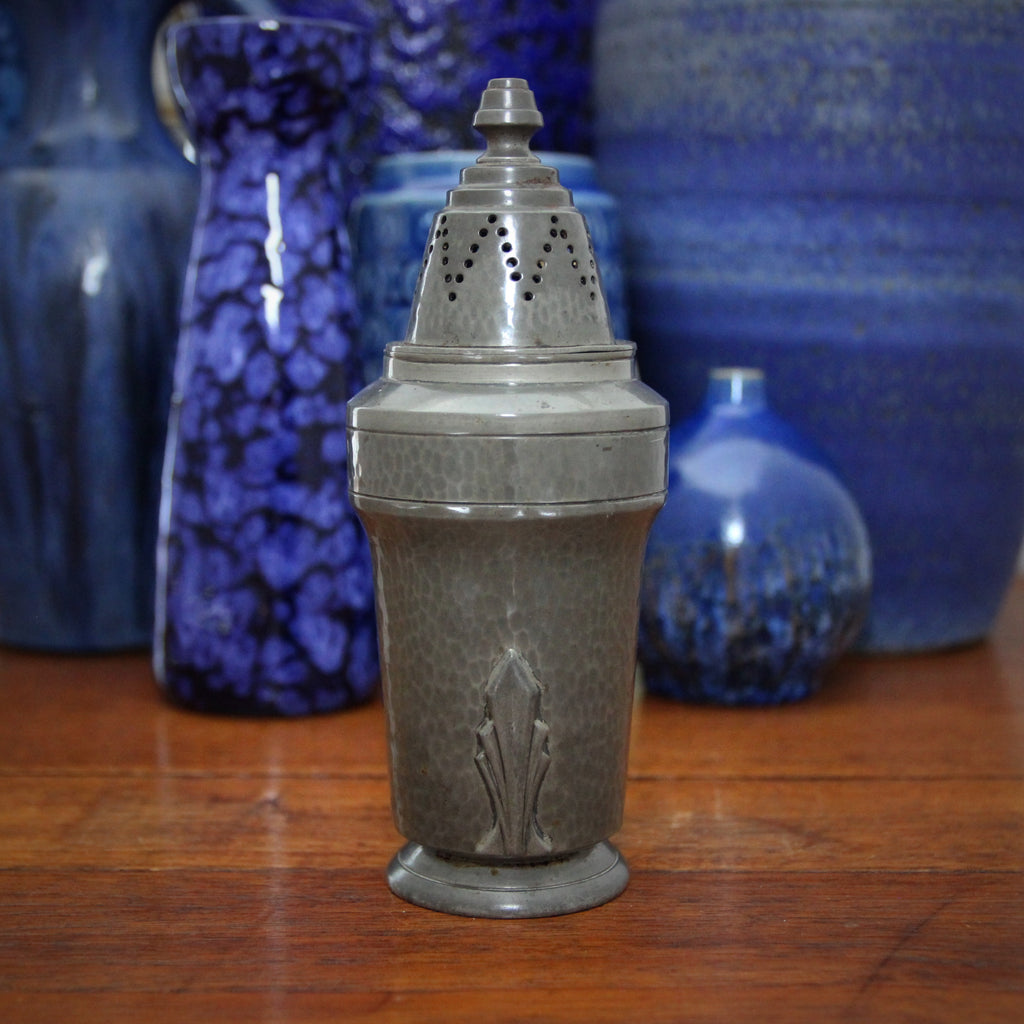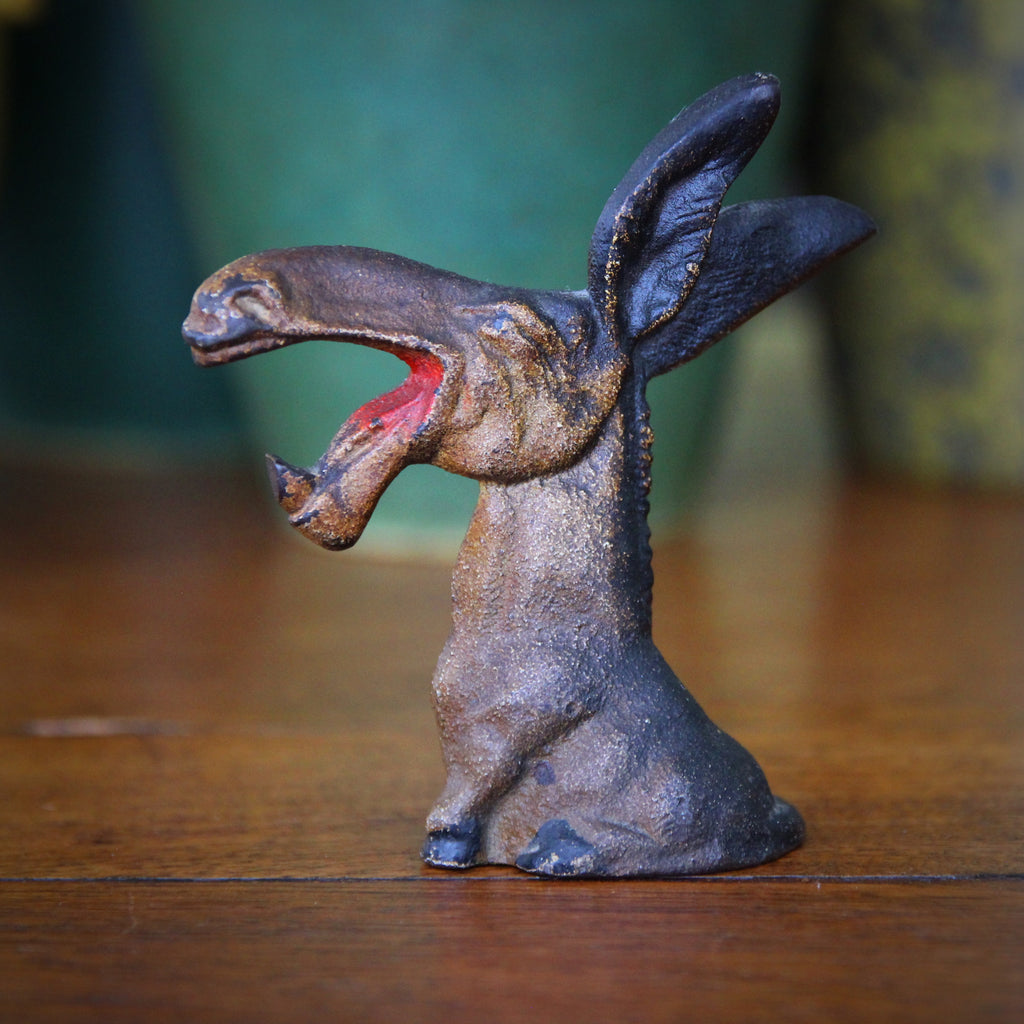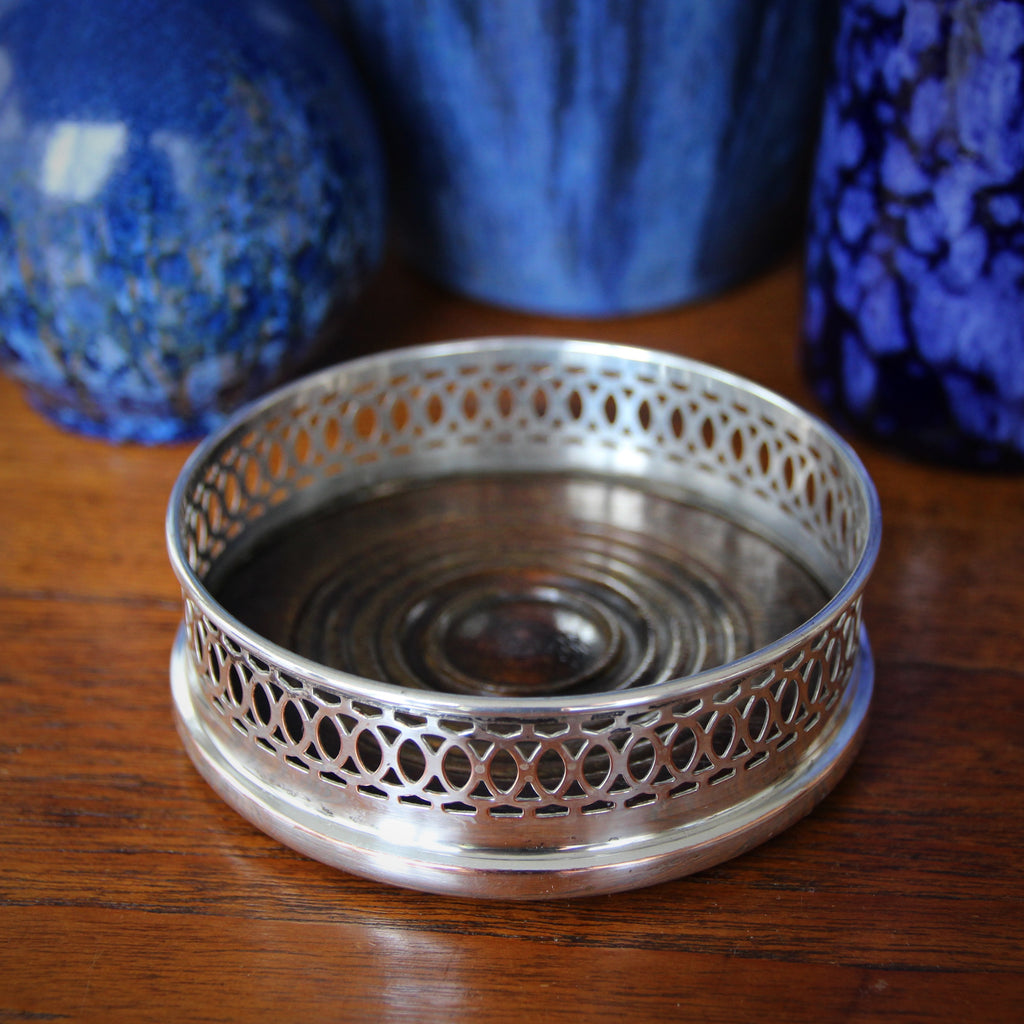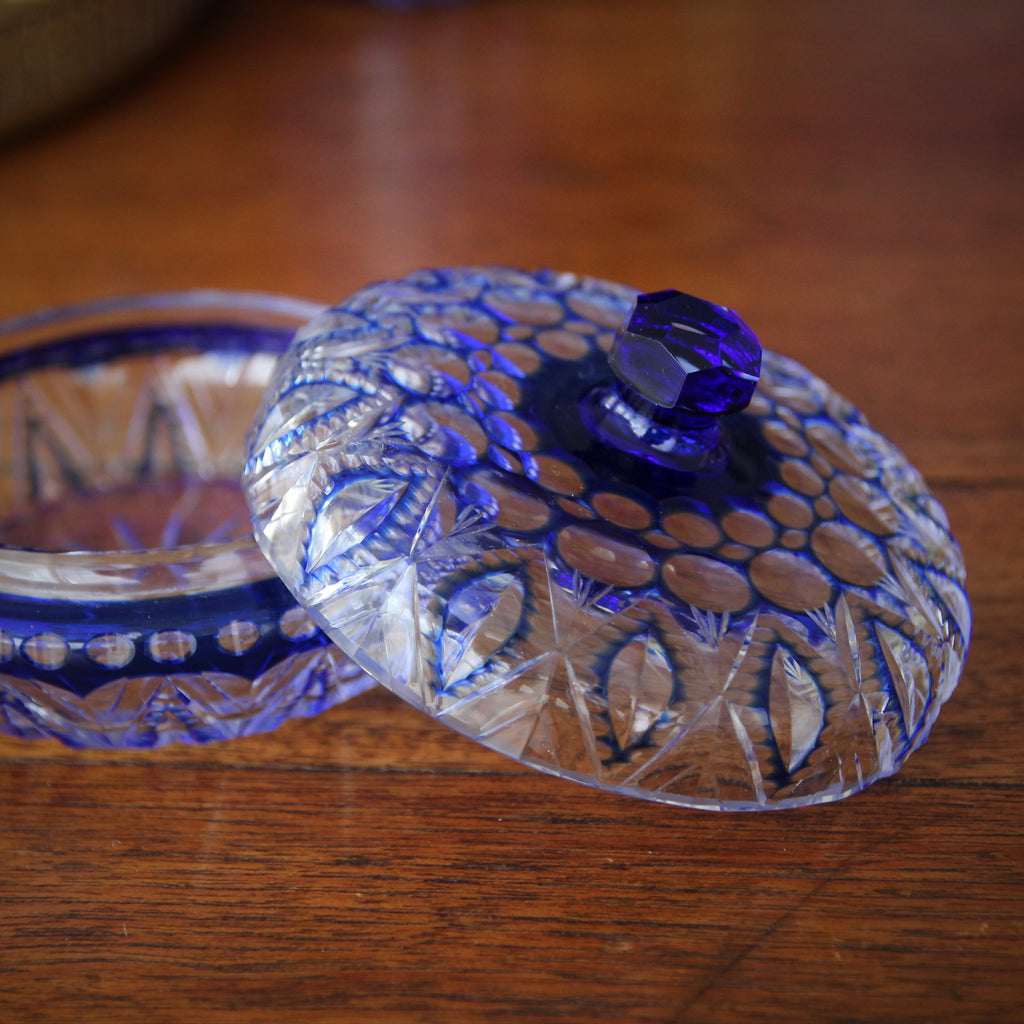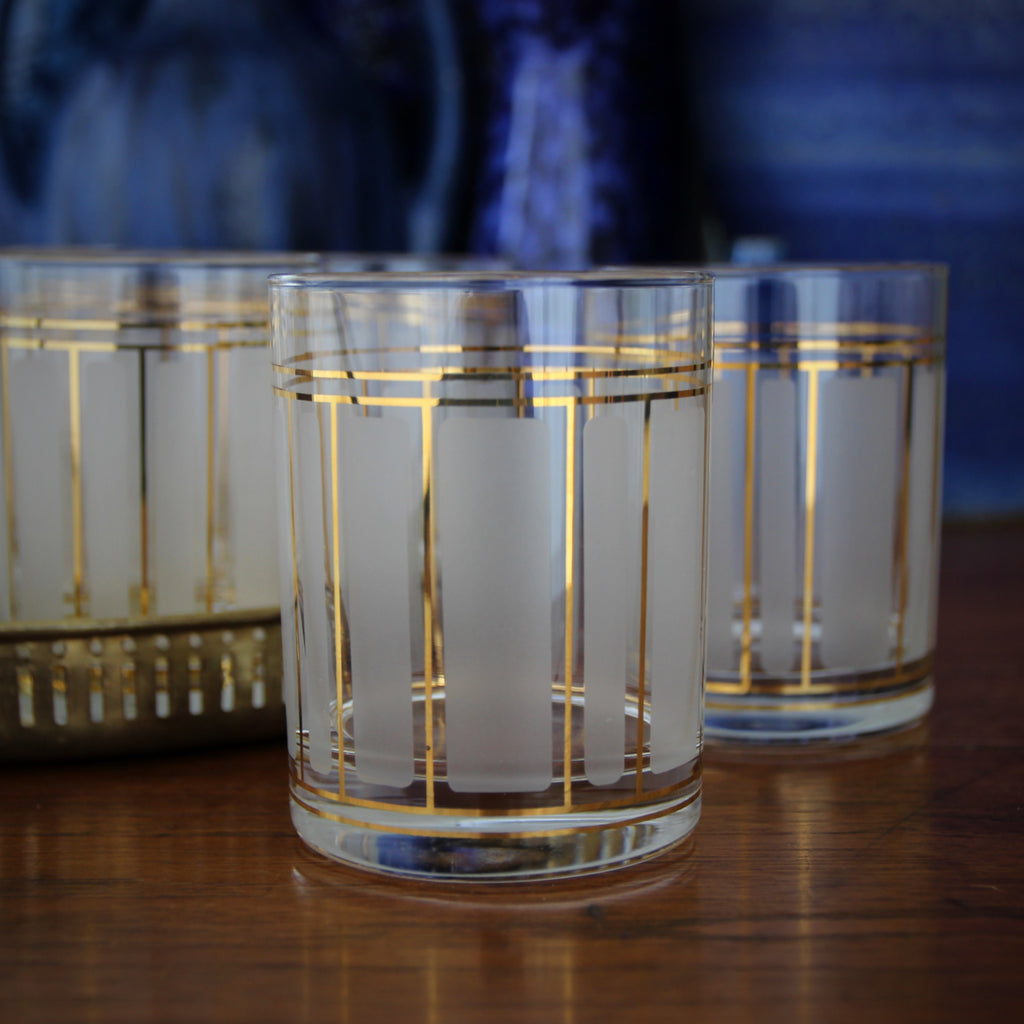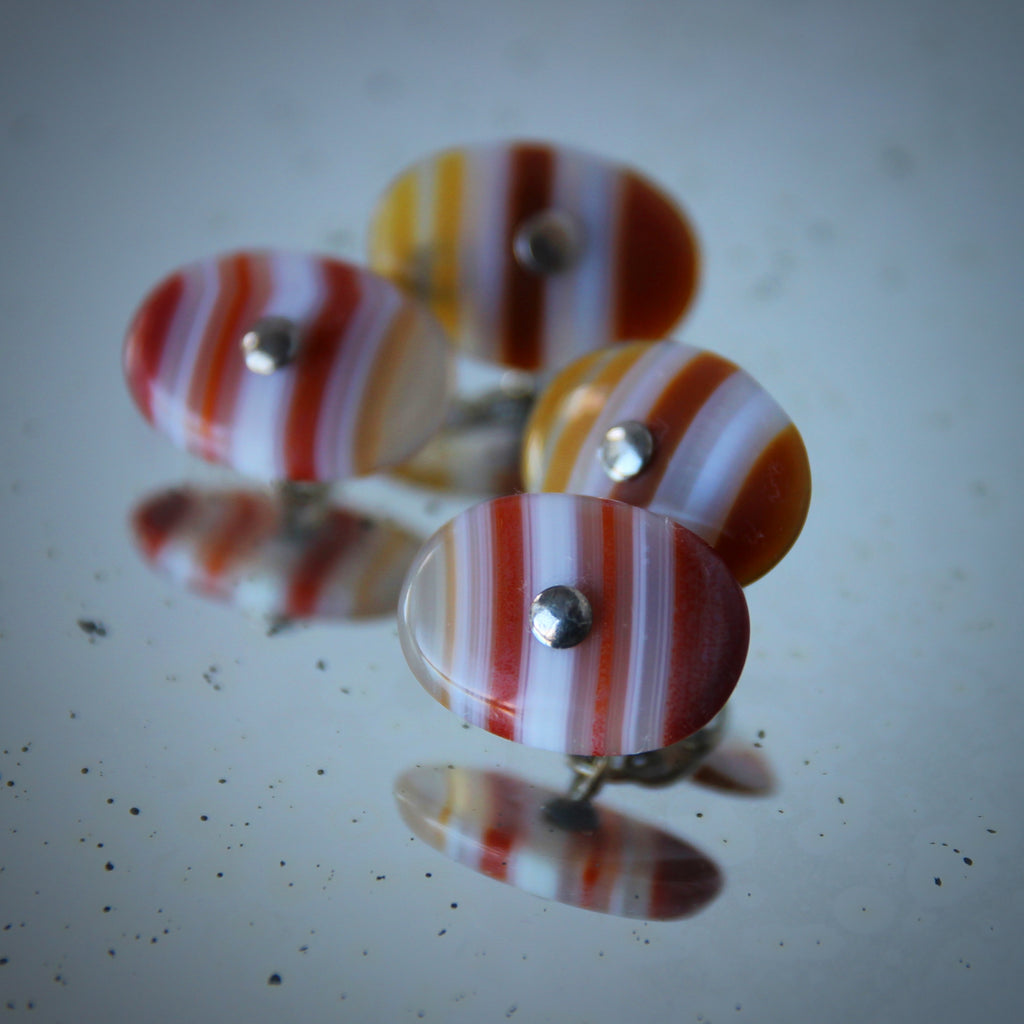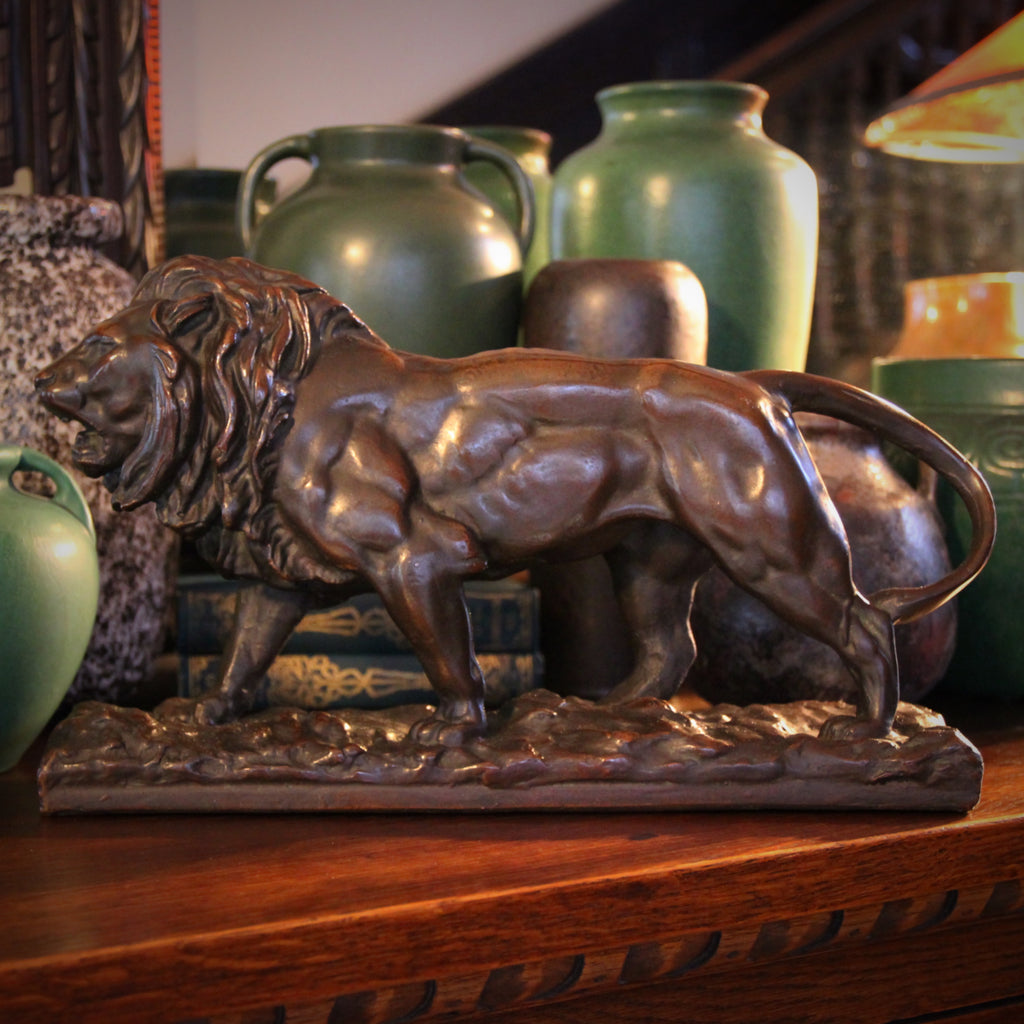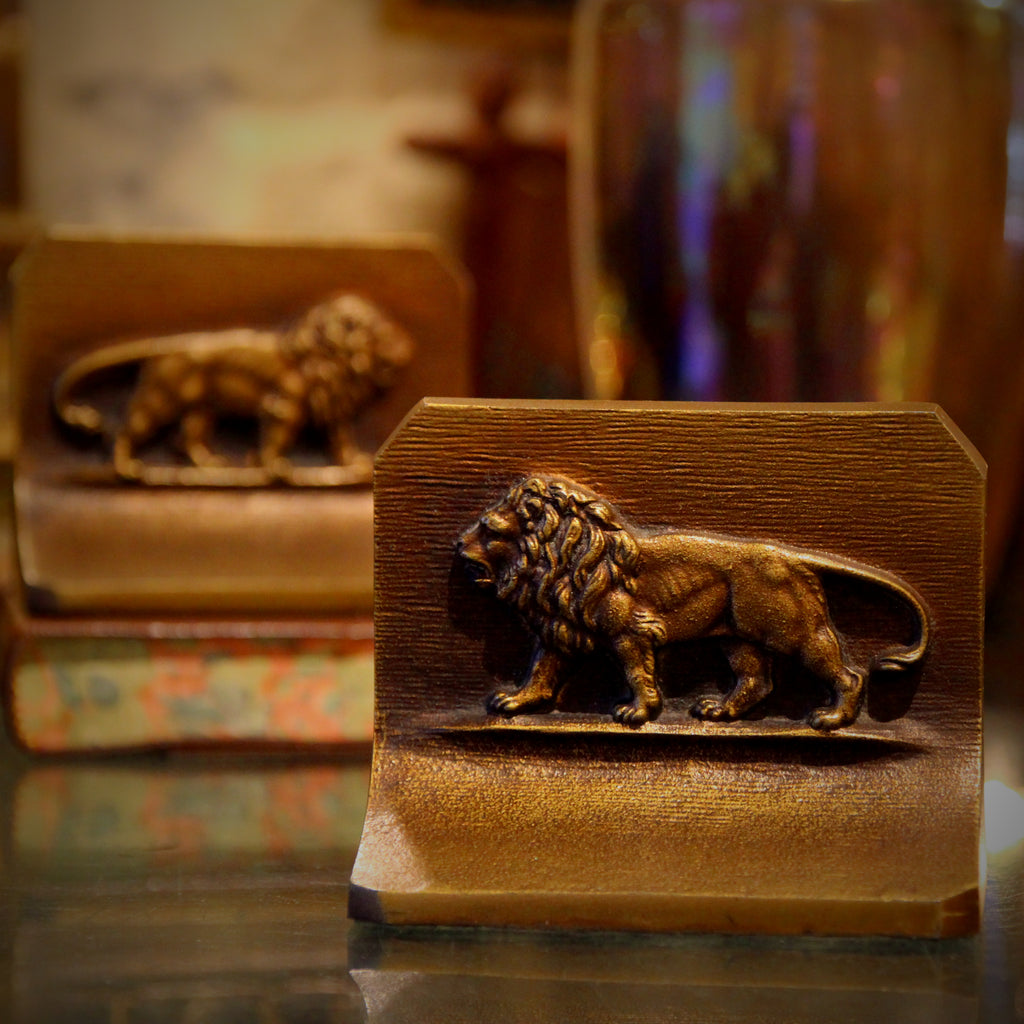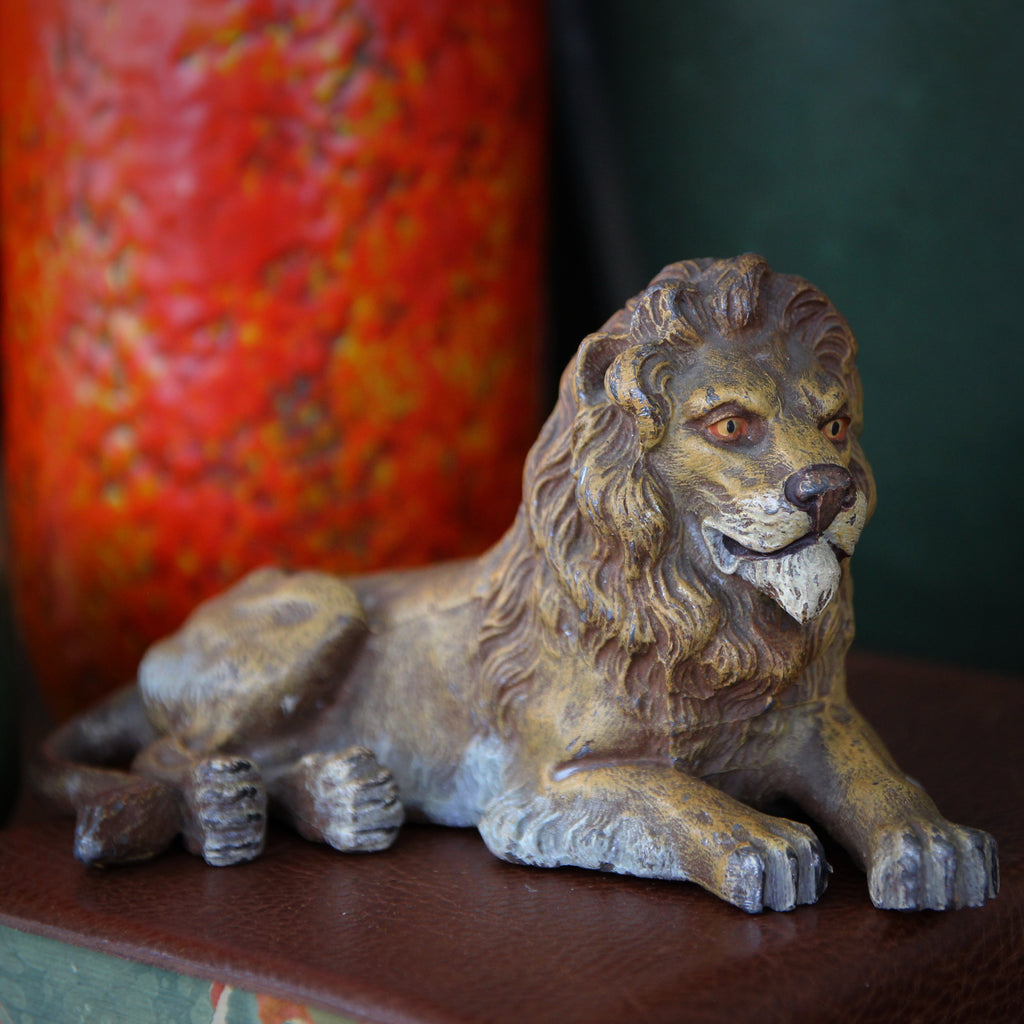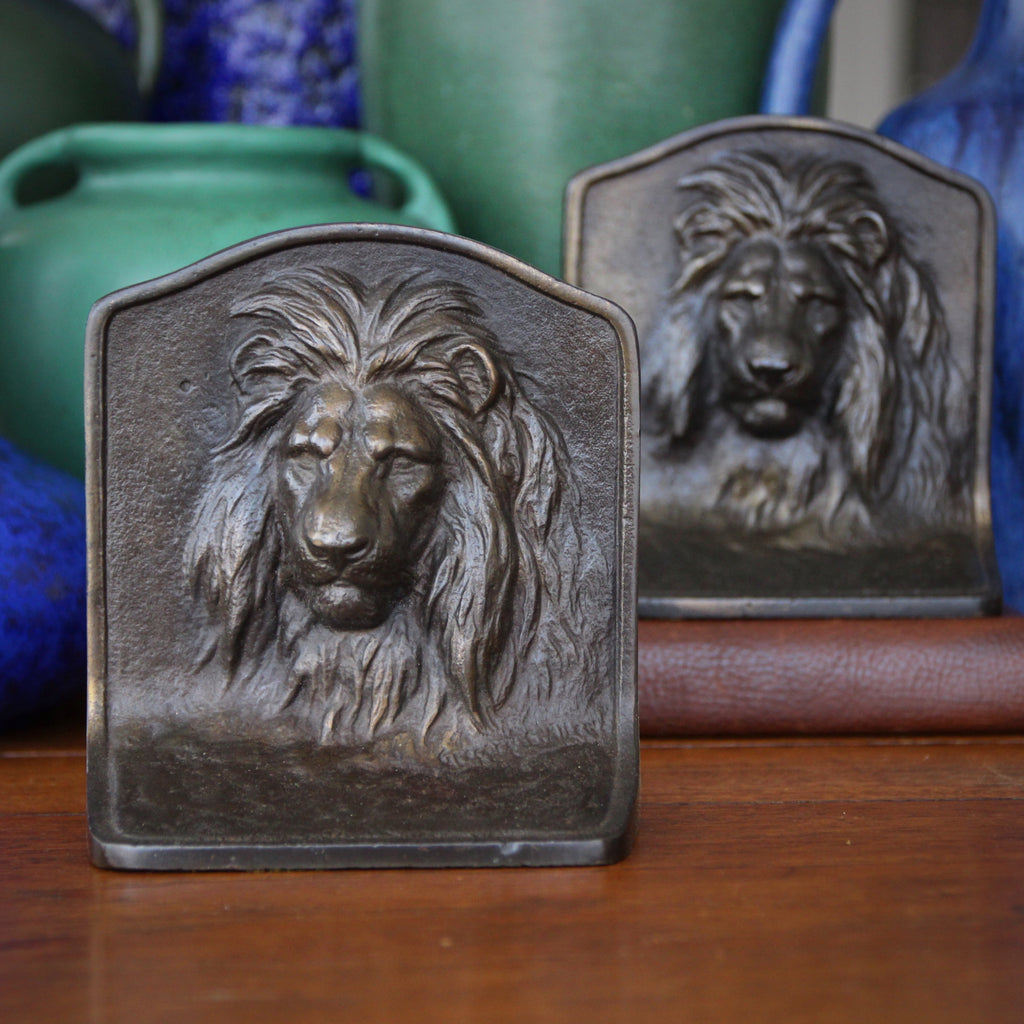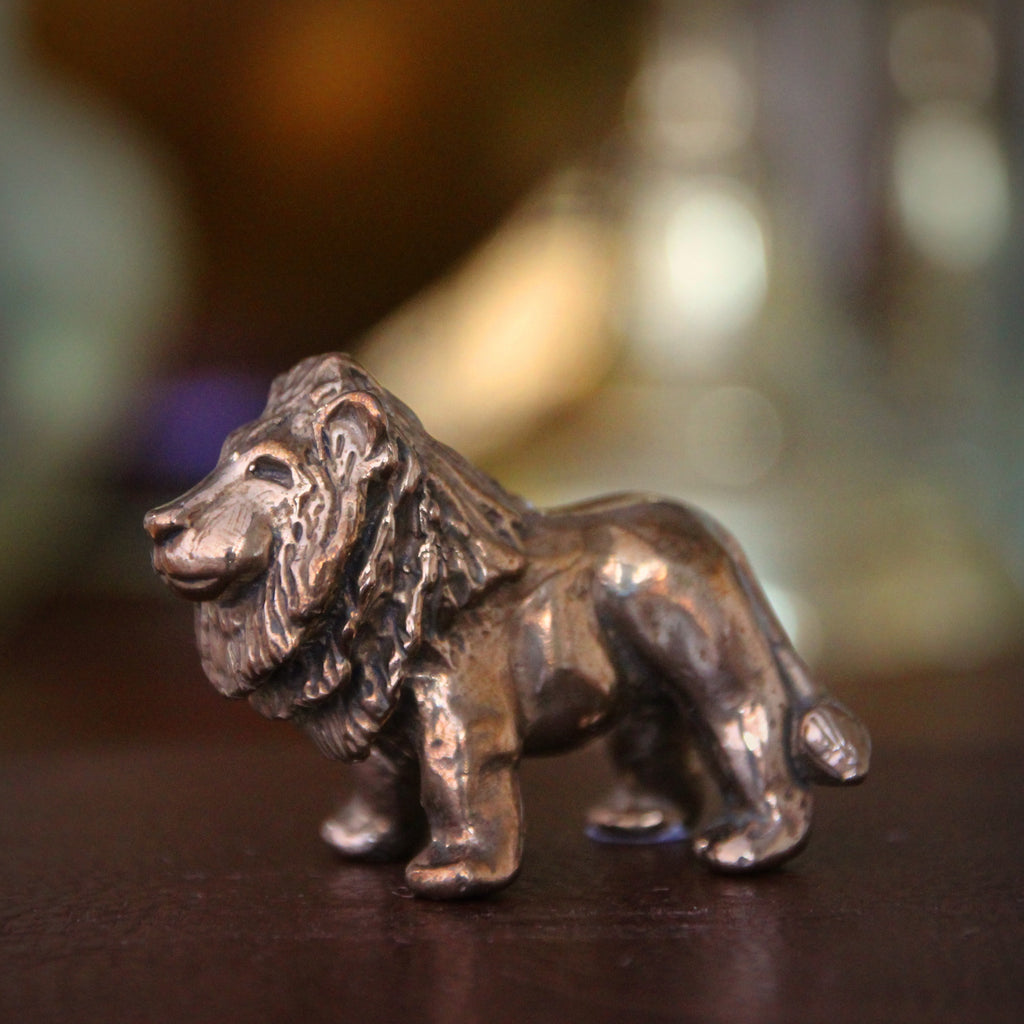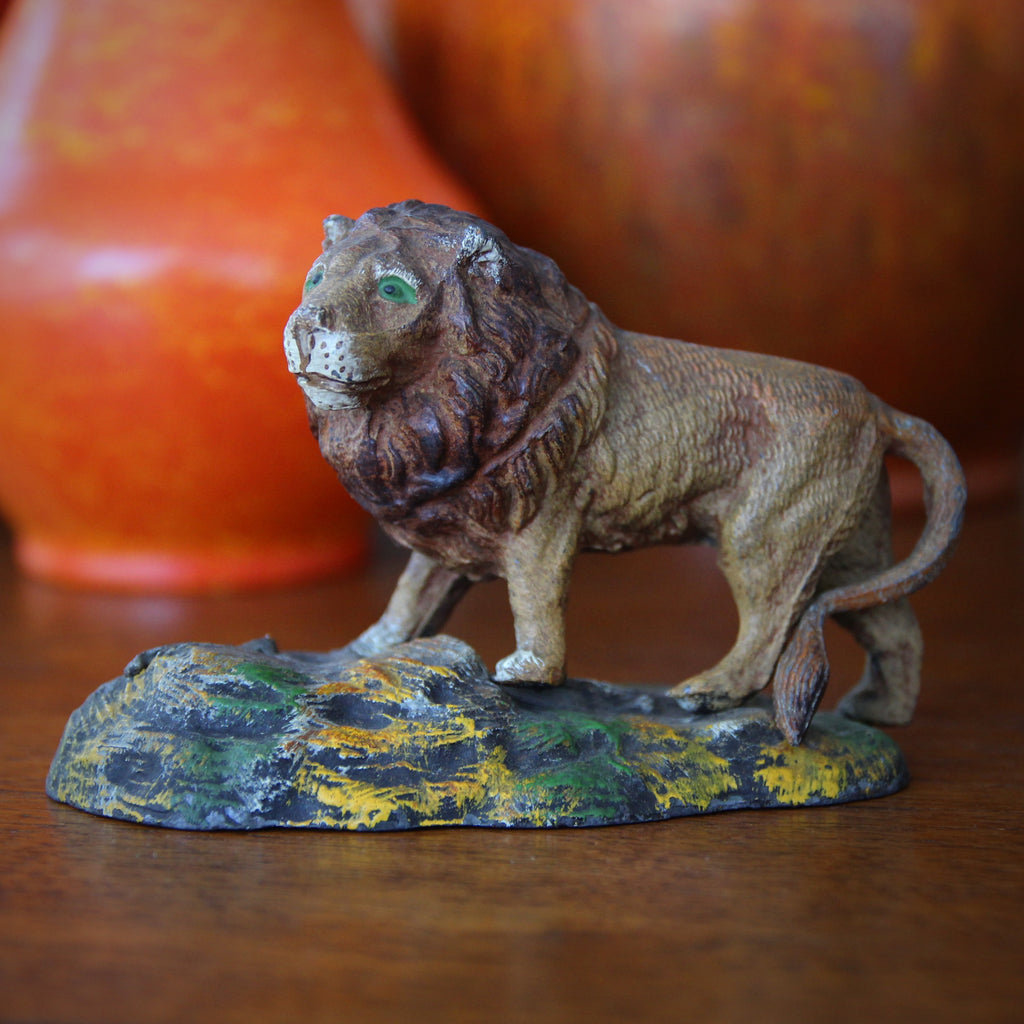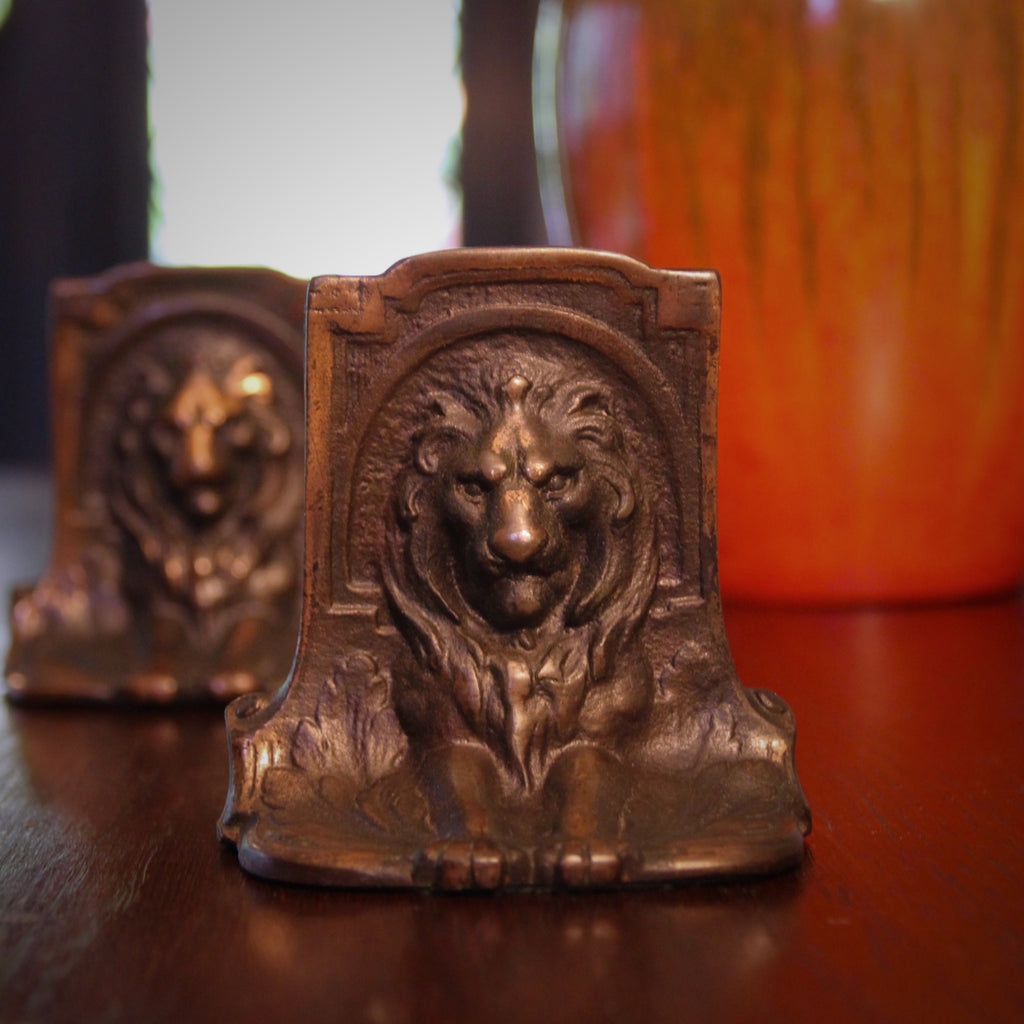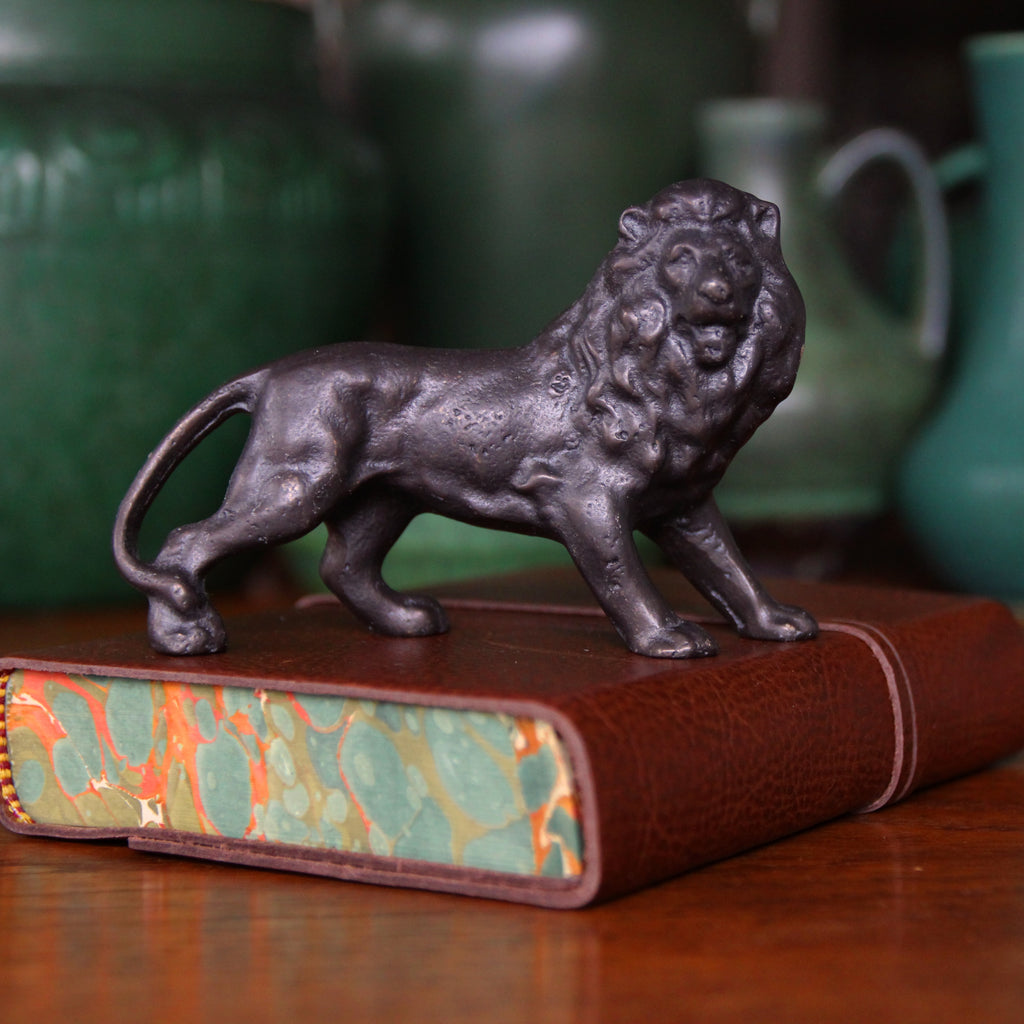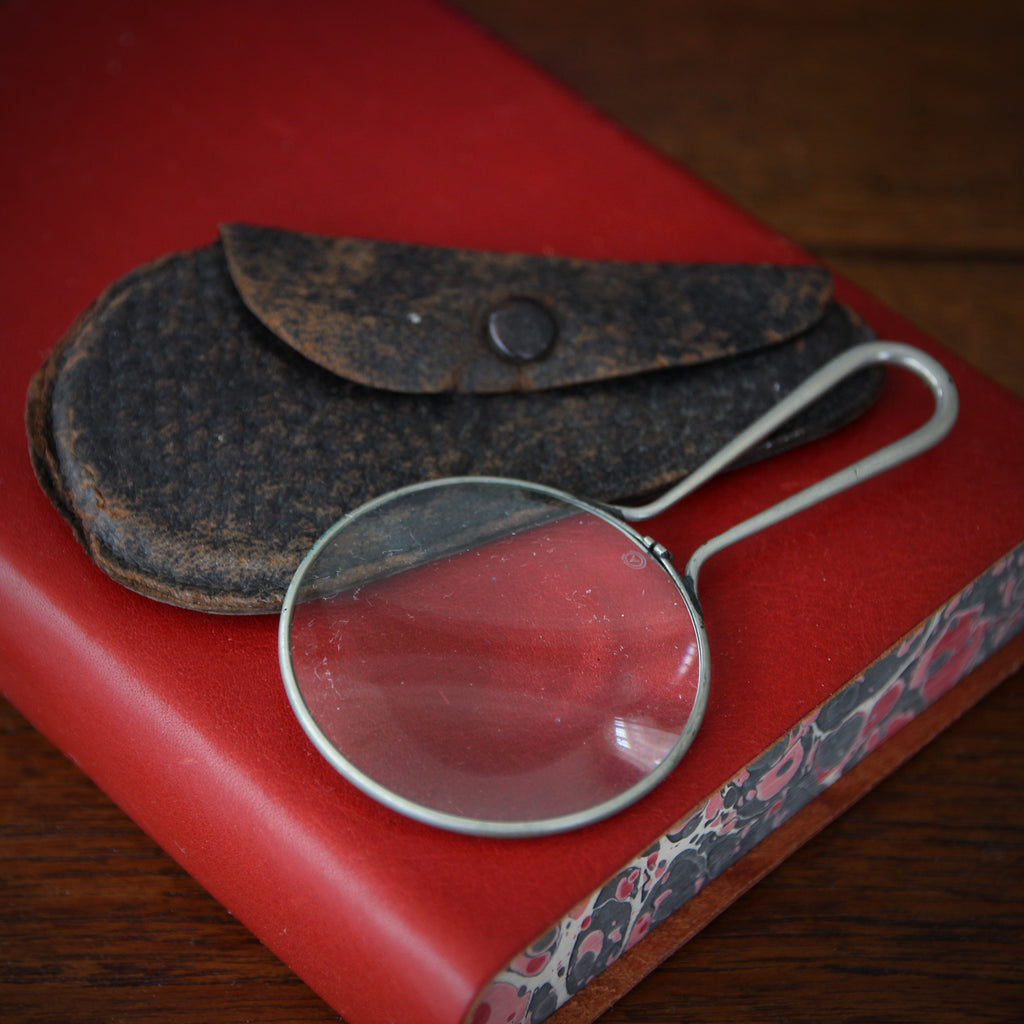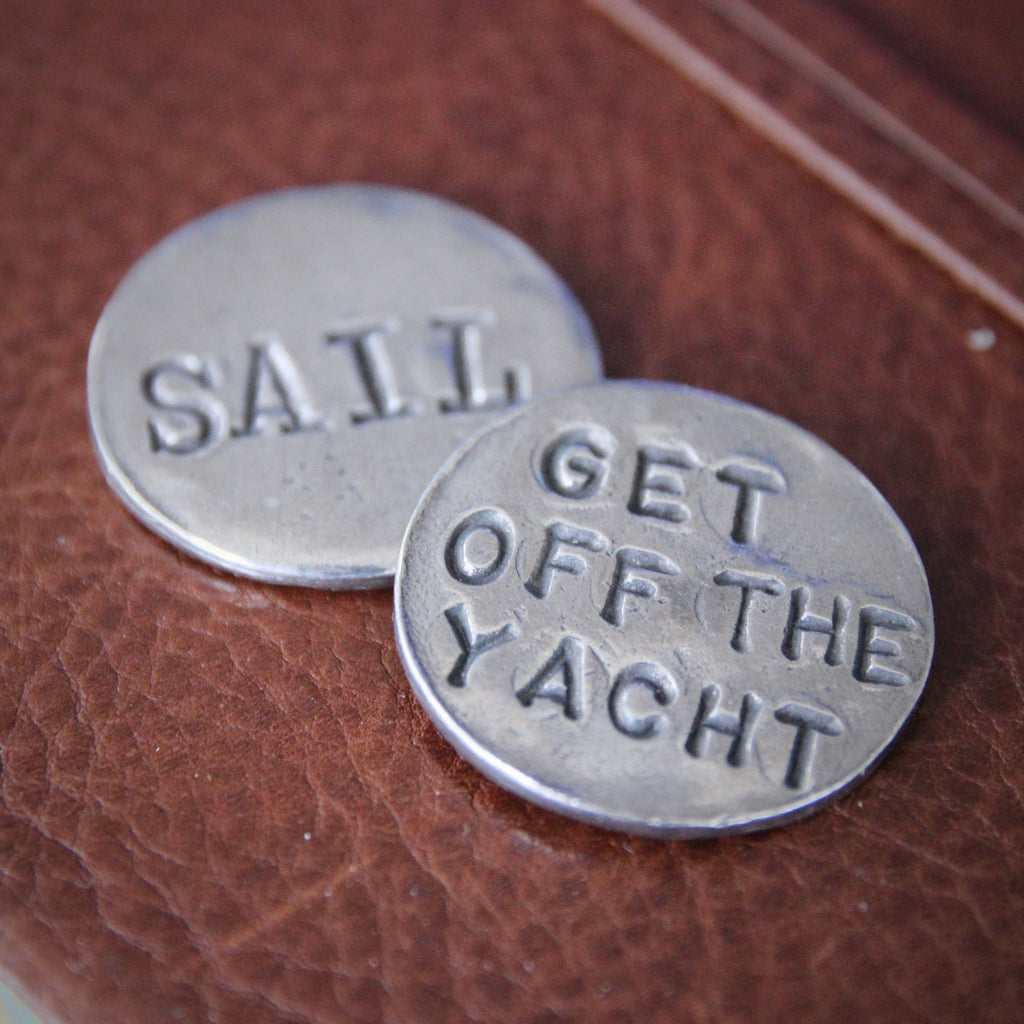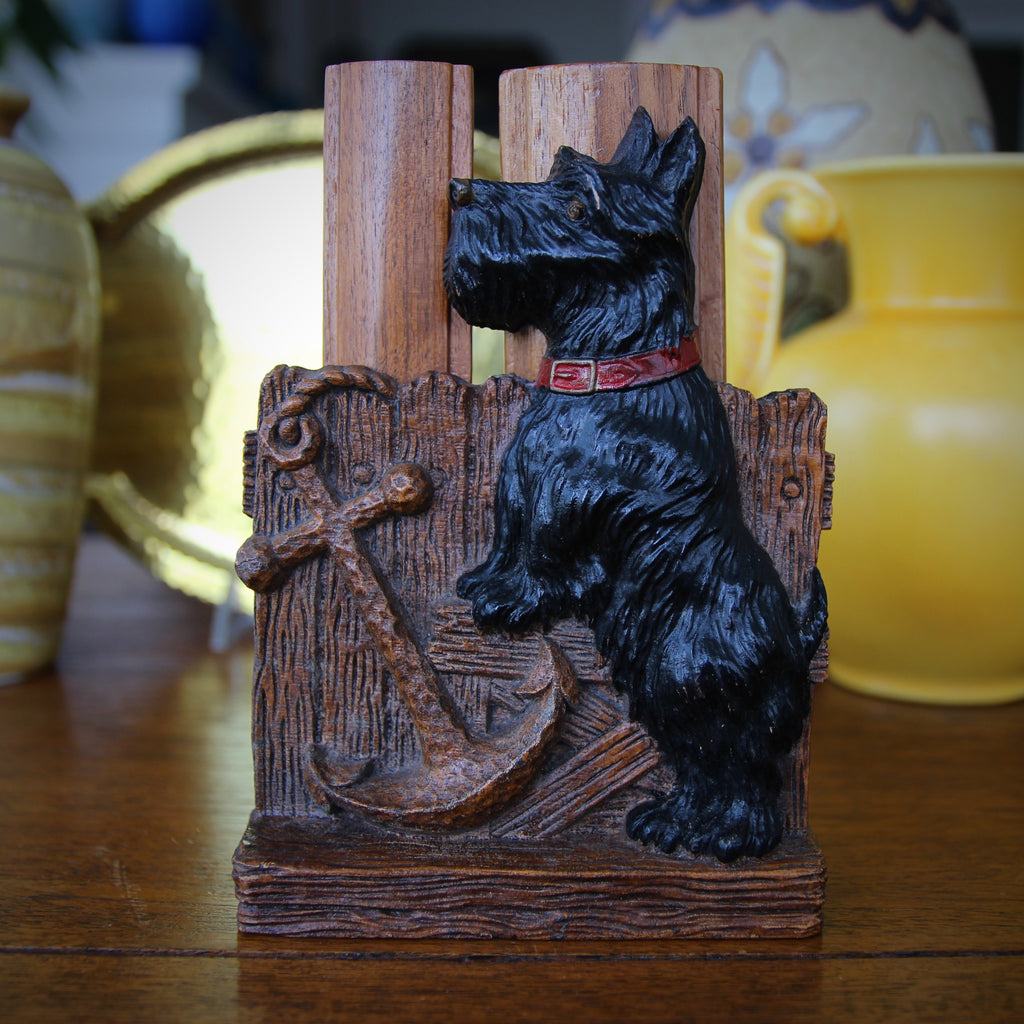JOURNAL RSS
Just in time for Holiday decorating, I've acquired a small collection of vintage, strung, multicolor mercury glass Christmas beads. They were made in the early Twentieth Century, likely 1900 - 1910's. The strings vary in length, bead shape and bead size. But they are all colorful and will provide a touch of vintage Christmas cheer. Each bead is like a small glass ornament. Several beads probably were blown together in a long, multi-bead mould—then separated into individual beads. Hang them on the tree. Or wind them around a wreath. They look nice in a bowl, draped over a mantel, swagged upon the arms of a light fixture, or incorporated into a center piece.
Fair Winds & Following Seas
Over the years, I've bought and sold a fair number of barometers—mostly from England (and most of those using imported German mechanisms). I never gave much thought to whether they were accurate or not. I always assumed they had already been "sprung," to coin a term. In truth, I didn't really have a method of accurately measuring their accuracy except when extreme weather happened to come around. So, when I purchased this nautical "ship's wheel" barometer, I assumed the status quo would endure. But now I have an iPhone—with a fairly sophisticated local weather app. Over the last two weeks, I've been monitoring the accuracy of this barometer (two or three times a day) and, I must confess, I've been...
Hand Feel
I love vintage glassware. And when I hunt for glasses, I keep a few parameters in-mind. Simplicity is key: embellishment must be handsome and understated. Sets must have at least six glasses (except when I find exceptional sets of four—and I can't manage to walk away). Age-appropriate condition is important. And the elusive (hard to define) "handfeel" makes all the difference in the world. I do not get precious about only acquiring "high-end" glassware (that is, glasses which were expensive on the day they were first sold). I am happy to pick-up more common, "middle-class" glassware—as long as it fulfills the other requirements, stated above.
Tea Time!
Tea is the national beverage of the United Kingdom. The British have elevated the serving of tea to an art form. Perhaps only the Japanese have managed to outperform the Brits in staging "the theatricality of the tea service." These days, tea is enjoyed from end-to-end of the UK socio-economic spectrum. I've seen (very beat-up) electric kettles steaming-away within the dingy security kiosks at the gates of British construction sites. But, once upon a time—when tea was an expensive, foreign luxury—the mistress of the house was likely to keep the key to her locked tea caddy tucked snugly within the folds of her bodice. An Eighteenth Century servant might only sneak a few sips from an unfinished teapot or from the bottom of an abandoned teacup. Tea was...
Welcome, December!
December is here—the final month of 2022! Before you know it, the New Year will have raced to take its place. December brings the shortest days, the Winter Solstice, and, of course, Christmas. It also brings Winter Sports on snow and ice. Shown here, a print titled "Skating" by Sir William Nicholson, RA. It's the December offering from his "Almanac of Twelve Sports" (published in London in 1898). The image depicts a woman—fully and beautifully dressed—learning to ice-skate while supporting herself with a chair. Nicholson began these prints as carved woodblocks. But, once the blocks were created, he would make an initial woodblock print and then use the more modern method of lithography to print-up the final works. After Nicholson...
Tlingit Beauty
The Tlingit People is comprised of numerous tribes of Native Americans who live along the Pacific Northwest—in the areas now called British Columbia (Canada) and Alaska. They are a matrilineal society; hereditary roles and property (which once included slaves) passed from mother to daughter. Genetically, they have relatives from Siberia, Russia, though older DNA shows a link to the Japanese Ainu people.
Even before I knew much about the Tlingit Peoples, I was mesmerized by their stunning graphic works—carvings, textiles and paintings—utilizing bold, stylized animals (often in reds, whites and blacks). I found the aesthetic bold, original and timeless; age-old designs look fresh and modern today.
Face-Off
The world, today, finds itself in a very tentative place. Amongst the big worries is the hair-trigger relationship between the United States and Iran, specifically Tehran's potential nuclear capability. Meanwhile, the streets of Iran are packed with young people demonstrating their dissatisfaction with their country's strict religious authoritarianism. Naturally, I feel supportive of Iranian youth struggling for freedom, human rights and modernity. Alas, many are paying a horrific price for their activism. It goes without saying, therefore, that today's big football match—the US vs. Iran—bears more weight than your typical Tuesday afternoon sporting match. In their first match at this World Cup (vs. England) the Iranian team remained silent while their national anthem played. They refrained from singing the lyrics. This act...
Cyber Contrarian
It's "Cyber Monday." Of all the manufactured "holidays," this one seems particularly crass, to me. Particularly manufactured. Particularly self-serving. And, although I do make (part of) my living by selling on-line, I cannot bring myself to cheerlead the event.
Instead, I will find and present the oldest, "least-techie" toy in my possession—no screens, no electricity, no internet connection. It's an early 19th century wooden cradle, made to hold a little doll, fastened with old, square nails.
Which makes me think: how many modern toys last 200 years? I have mobile phones and laptops which are obsolete after 15 years!
For those who cannot help themselves, have a Happy Cyber Monday.
A Silvery Shiver
This winsome Christmas tree ornament—sculpted and cast in pewter—will add a cool and wint'ry folk art touch to your Holiday decorating. It was hand-made in California and also could be used as a stylish (and seasonally appropriate) candlesnuffer.
And We're Off!
We officially have entered the Holiday Season. Perhaps you're not quite ready to plunge into the retail fray. But you may be up for a little festal decorating. A jolly parliament of owls is ready to alight upon your doorstep. These endearing ornaments—each one has a distinctive personality—are hand-crafted from natural gourds. Artisans draw, paint, flame (burn with a candle) and etch the gourds by hand—all before attaching a little beak and a golden hanger. Each gourd varies in shape (round, pointed, fat or slim) and the artist's decoration contributes to a one-of-a-kind appearance. They will provide a happy pop on your Christmas tree or look good (all year 'round) hanging in your window. They'd make a nice little gift...
Black Friday
It's Black Friday. And it's one month 'til Christmas. Time for action! Many moons ago, when I first began my retail career, the term "Black Friday" seemed to be used solely within the industry—by the people who worked in the shopkeeping business. All retailers (then and now) hope that Black Friday, which marks the start of the Holiday selling season, will be the day when the shop's ledgers will be transfigured, like magic, from red to black (from loss to profit). While it's true that November and December enjoy greater sales than most other months, Black Friday rarely marks a definitive turning point—the precise moment—when the bookkeeper dips his quill into a different pot of ink. Today, the term Black Friday commonly is recognized and used by...
Gratitude
To cultivate an "attitude of gratitude" is to make the best of life. It certainly makes a person more attractive. And it may even improve one's health. It certainly makes one feel better!
For what am I thankful? My faith. My health. My family, husband and dog (Benji). And the loyal LEO Design customers who have allowed me to pursue this unique and wonderful vocation—seeking and acquiring Handsome Gifts and home furnishings which bring pleasure and beauty to my customers' homes.
Tomorrow is Black Friday, the traditional start of the Retail Holiday Season. I will continue to share more new items with you—as I find them—and endeavor to ship promptly to get them to you in-time for the Holidays.
Happy Thanksgiving!
Just in the Nick of Time!
After three weeks of building-out my booth space, I am ready-to-go! Just in time for Black Friday and the Holiday Shopping Season. I look forward to holding more merchandise, naturally, but I am also keen to restart my acquiring of furniture, artwork and lighting. Please stop by, should you ever find yourself in Canonsburg, PA.
Expansion Plans
When I closed my Greenwich Village shop in January of 2017 (nearly six years ago!), I never imagined opening a replacement store—least of all in Pittsburgh. Well, I haven't. And I do not plan to. Not really. Instead, I am in the process of expanding my space within the Antique Center of Strabane in Canonsburg, Pennsylvania (about 20 miles south of Pittsburgh). For the past five years, I've rented a small showcase in this multi-dealer antique shop. When a booth became available, I decided the time was right to "upgrade" to a bigger space. It's been five years since I've bought larger items—furniture, mirrors, lighting—and I am looking-forward to getting back into this business. Of course, the space will be much...
Kickin' Ass!
Today is General Election Day 2022! I will be spending a healthy sixteen hours at my home polling site—the Soldiers & Sailors' Memorial Hall—where I am a volunteer poll worker. I am to report-in at 5:45 am. Then I'll be home by 10:00 pm, ready to flip-on the telly.
Pennsylvania, my new home state, will be the pitch upon which America's political contests will be played-out—possibly with national consequences. May the better team win!
These glass tumblers, from the 1950's, show a Pennsylvania donkey kicking and "Rarin' to go!"
November is Here
Welcome, November, and your birthstone the Citrine.
The Citrine is a pale yellow variety of quartz. It owes its sunny color to the presence of iron within the chemical structure of the gemstone. And Citrine's sunniness was not lost on Greeks—who first used the stone around 300 BC—who believed that the gemstone could help alleviate depression. At the time, Citrine was very rare, thus expensive, opulent and luxurious. As larger deposits were later discovered and mined (notably in Brazil), the gemstone became more common and fell within reach of more and more admirers.
Last Few Minutes at the Beach
Today is our last day in Hawaii and, naturally, we spent a few hours at the beach. In the town of Kailua—on the Windward side of Oahu, near my hometown of Kaneohe—sits the small, quaint beach called Lanikai. It's a tiny little spit of sand (with even less parking) but it has the gentlest, most beautiful water imaginable. Across Kailua Bay one can see planes taking-off and landing at the Kaneohe Marine Corps Air Station. And a little island, 100 yards off shore, tempts one to swim across to it (though I never have). What this beach lacks in solitude and spaciousness, it makes-up in atmosphere and loveliness.
The Backdrop to My Youth
I grew-up in two Hawaiian towns: Kaneohe, on Oahu, and Kapaa on Kauai. I moved back-and-forth during my school years: from grade school to middle school to high school. Oahu (where one will find Honolulu and Waikiki) was, by far, the more developed island. At the time, 80% of the state's population lived there. And although Kauai was generally quainter and more beautiful, Oahu was home to one of my favorite mountain ranges in the world: The Koolau Mountains. Today, the Koolau Mountain Range stretches 37 miles long, along the Windward (Northeastern) Coast of Oahu, and tops-out around 3000 feet high. Although it seems large and dramatic—deep crevices run seemingly vertically from ground to summit—what one sees today is only...
Good Morning, Pacific Ocean
Different people have differing ideas of what makes a beautiful beach. Some people love the bustle and people-watching of Miami Beach. Others like the cold, rugged beauty of Cape Cod. Mediterranean beaches can be nice, too. As for me, I like three things: 1. Being able to see the water and a steep mountain backdrop at the same time. 2. Seeing minimal evidence of human building or encroachment. And 3. To be (mostly) alone at the beach—just me and my loved one(s). With these criteria in mind, my favorite beaches in the world are to be found on Kauai.
Back Home
After three long years, I've finally made it back to Kauai—to my family home. It's nice to see my 87 year old father; I value every moment we share together. And it's great to see my younger brothers and their broods of children—now growing into young women and men. I love the view, shown above, of the distant mountains as seen from my brother's front deck. On the left, Mount Waialeale, called "the wettest spot on Earth." On the right, Makaleha, Waialeale's younger sister. Even in darkening light, I always try to take-in this view as soon as I land on the island. It takes me back to my middle school years, when I lived on this spot. Today my father...
Welcome, October
At one time, back in the Ancient Roman Period, October was the eighth month of the year. This is readily apparent because the prefix "Octo-" refers to the number eight. At the time, the year had only 10 months. September was seventh, November was ninth and December was tenth. Then, around 713 BC, January and February were added to the calendar, in an attempt to lengthen the year—to better represent the actual length of time required for the earth to encircle the Sun. (This "elongated year" at 354 days, was still incorrect. It takes 365.2422 days for the Sun to complete its Solar circuit. This is why nearly every fourth year is designated a "Leap Year.") Those born in October—mostly Libras and...
Bevy of Brooches - IV
People who follow my journal writings know that I repeat often the founding precepts of the Arts & Crafts Movement. One such tenet was the "revival" of ancient cultural elements—aesthetic, historical or literary references which had resonance for the people in that community, at that time. Another principle was the elevation of beautiful, common materials to the aesthetic equal of more precious elements. This English Arts & Crafts brooch ticks both of these boxes.
The brooch shown here was made in the very early Twentieth Century. Its silver-fronted face is embellished with meandering, Celtic-inspired graphics. Set within the brooch's face are five art glass cabochons—crafted with the appearance of Persian Turquoise.
Bevy of Brooches - III
Queen Victoria's beloved husband, Prince Albert, died in 1861. The Queen still had four decades left in her reign—a long period during which she remained in-mourning. Queen Victoria wore black every day for the rest of her life. And while her jewelry needed to be attractive, it also had to be appropriately understated—if not melancholy. The Queen set the fashion for the rest of the nation; for forty years, the entire nation observed some measure of mourning alongside their Queen. Thus, the English jewelry from the last third of the Nineteenth Century tended to be stately, serious and handsome—not whimsical, sunny or frivolous.
Bevy of Brooches - II
Simply put, a "cabochon" is a plain, domed "stone"—without faceting—which is rounded and polished on the top and (usually) flat on the bottom. The term refers mostly to gemstones, shaped this way to be mounted into jewelry. But, during the Arts & Crafts period, craftsmen made cabochons out of glass or glazed ceramic to be used as decorative elements (embedded in metalwork or woodwork). One of the aims of the Arts & Crafts Movement was to elevate the beauty of simple materials. In this case, a beautifully glazed, hand-crafted ceramic rondel could be appreciated as much as an expensive, precious gemstone.
Bevy of Brooches - I
When I travel on buying trips, I am always looking for nice cufflinks and other masculine jewelry. But I am unable to avoid crossing paths with lots of women's jewelry. In fact, most jewelry dealers carry far more women's jewelry than men's jewelry. Given this reality, I frequently find myself picking-up some nice pieces for women. But my taste leans to the "handsome" more than the "girly". When I do buy a piece of women's jewelry, it tends to reflect a more robust taste: a bit heavy, a bit stoney, a bit serious, a bit dour. Late Nineteenth Century—Victorian Mourning Jewelry—always appeals to me. But I do try to step-out of my little lane, every now and then.
And Then There's Boxing Day
With a touch of alarm, we noted that yesterday marked the three month mark before Christmas. And, as surely as Christmas will come, Boxing Day will follow 24 hours later. Boxing Day is widely celebrated in Britain and much of the Commonwealth. It is the day after Christmas, originally recognized as the day-off for the servants (back when people had servants—who were expected to serve their employers on Christmas Day). Boxing Day was a festive occasion, when servants would receive a box—their Christmas gift—from their masters and mistresses. The box above, made by Hickok in the Art Deco Thirties, is cast of marbled Bakelite—an early, heat resistant plastic. Bakelite was invented in 1907 in Yonkers, New York, by Belgian immigrant,...
Three Months 'til Christmas
Though Summer has barely left us, a glance at the calendar reminds us that Christmas is a mere three months away! Let's get ready! No time to waste! Here's a set of four cheery Christmas Double Old Fashioned "Rocks" glasses. They are decorated with a stained-glass effect salutation—Seasons Greetings—and are topped with a 22 karat gold rim. This metallic enhancement looks nice but, more importantly, it protects the delicate glass rim from unexpected chipping.
Back-to-School - Part XII
Over the past several days, LEO Design has shared some interesting Back-to-School offerings—ideas to help organize, cheer and distract as students push-on through their matriculations. Let's end our parade of offerings with this sweet idea: an Early Twentieth Century shop counter cracker jar, complete with metal lid and metal stand. In Mom & Pop Stores before World War Two, jars like this would have been commonplace—for crackers, cookies, candy, or other foodstuffs. Most times, the metal stand would be long gone, broken or lost. And the stand's design is interesting. It allows the jar to be tilted at numerous angles, as desired. In a dormitory, it would be a wonderful depository for candies, cookies or other treats which need protection. In...
Back-to-School - Part XI
It happens to most of us. At 45? 50? 55? We start to notice that all the font sizes have suddenly shrunk. Inexplicably, someone down-sized all the print! Add to that: all those Twenty-Something tech wizards—who think they will never age—design the world's electronics and packaging and graphics with the assumption that "old folks" aren't interested in adopting their technology. Hence more teeny-tiny "buttons," micro-links and fine print to scrutinize. Well, sometimes old-time solutions will still solve new-age problems! Thus, one can never have too many magnifying glasses scattered around the house. In the bathroom for reading bottles. Near the TV for reading the PBS guide. Or in the glovebox for checking receipts. (Those mundane tasks which populate the pursuits of...
Back-to-School - Part X
Sometimes an ordinary paperclip will do. In fact, most times the classic clip will suffice. But—every now and then—an extra splash of style is required. For these moments, may I suggest these Italian spiraling paperclips, called "Chiocciola" (which is "snail" in Italian). A tin of these in your desk may provide that little extra element of interest to your resume package, note to an important customer, or proposal to a prospective client. They also look great sitting in a little bowl upon the desk—awaiting their next assignment.
Back-to-School - Part IX
All work and no play makes any scholar a dull student (or so the saying goes, approximately). So take a break, a moment to relax and re-focus with this heavy brass puzzle, made in Brooklyn. Solid brass rods are finely machine-turned—engineered with exacting precision—which assemble into the three dimensional cruciform sculpture, shown above. Weighty enough to be functional as a paperweight; handsome enough to be a decorative conversation piece on the desk.
Back-to-School - Part VIII
For the last several days, LEO Design has been sharing some interesting Back-to-School offerings—ideas to help organize, cheer and distract as students push-on through their matriculations.
Style meets Function with this Edwardian English brass and oak letter rack, circa 1905. Simple swirling metalwork stands atop a wooden plinth, finished with a moulding edge. It's sized just-right for holding a supply of stationery and envelopes, bills and documents to be processed, or to do lists and other reminders. A small measure of sculpted motion means just the right amount of visual interest. Otherwise, the piece exhibits pure Edwardian utility.
Back-to-School - Part VII
While these sleepy Medieval Scholars might channel the soporific mood of late night study sessions, don't worry, it's not contagious! And we really should cut these monks a little slack; they've been trying to stay awake for 100 years. "Science" and "Study" personify the themes of age-old academia. They are sculpted in bas relief fashion upon the faces of these heavy, cast iron bookends from the Twenties. The monks, themselves, are dressed in a golden bronze finish. The body of the bookend itself is finished with a classic, chocolate brown bronze patina. They were made by Bradley & Hubbard (Meriden, Connecticut) the metals foundry which made so many handsome objects for Middle Class homes of the Victorian and Edwardian Ages.
Back-to-School - Part VI
So much for "the paper-free society." There is nothing as durable and conspicuous as a hand-written note posted in a prominent place. To do lists. Reminders. Addresses. Good wishes. Having a small piece of notepaper at-hand is always convenient and efficient—including in a productive dorm room. This polished pewter notepad holder was designed by Erik Magnussen (Danish, 1940-2014) for Royal Selangor. The 4"x 4" replacement notes can easily be purchased on-line or can be cut-down from recycled copy paper.
Back-to-School - Part V
Over the past several days, LEO Design has been sharing some interesting Back-to-School offerings—ideas to help organize, cheer and distract as students push-on through their matriculations.
In terms of sheer indulgence, this Arts & Crafts wastepaper basket wins the "Dorm Room Makeover Challenge." Made of slats of quarter-sawn oak, it is finished with rawhide lacing at the corner tops. It's the handsome, finishing touch beneath that built-in dorm room desk. (Or under that costly Stickley writing table.)
Back-to-School - Part IV
It's been said that "Time is Our Most Precious Commodity." Each day is allotted only a fixed number of minutes—and as each moment passes, it is gone forever, never to return. More time cannot be purchased at any cost, regardless of how rich one is. And further complicating things: though each of us possess a "bank" of time left on Earth, none of us knows his bank balance. Wise people think about and plan the use of their time. If a high school senior does not, yet, appreciate the value of her time—and the challenge of managing it—a college freshman will soon be made aware. Packed course schedules, layers of projects with varying due dates, and all those enticing extra-curricular...
Back-to-School - Part III
For better or worse, some Americans cannot (or will not) separate their favorite academic institutions from the institution of American Football. The Autumn—with its sweaters, crisp temperatures, and crackling leaves—means Back-to-School and the start of Football season. Tailgates, marching bands, gambling brackets. Some schools (and student bodies) are better known for their American Football prowess than they are for their academic achievements. Personally, I'd prefer a world where educators prioritized educating—and sports games were just a casual, weekend distraction. But such is a minority view amongst the concepts of conferences, school budgets and broadcast rights. Shown above, a Japanese crystal American Football sculpture, made by Sasaki. It could be used as a paperweight on the desk or an interesting conversation piece in...
Back-to-School - Part II
Who can't use a little more organization at the desk or in the dorm? Or office, kitchen or craft room? This Edwardian English oak stationery rack, circa 1905, is meant to hold a supply of writing paper, envelopes, cards and letters. But it's a very handy place to organize your paper-in-motion. I use mine to hold paid bills (checks written, envelopes stamped and sealed) while waiting for the correct day to mail them. Documents, brochures or articles which need attention also call to me from their oaken stand. In large families, it might be a good place to leave member's mail—or, perhaps, provide a little "in-box" for intra-family communication. The organizational uses are many. And the stand looks so handsome...
Back-to-School - Part I
The school bell has rung! Pupils to their desks! While college freshmen may have encountered wistful parental partings, grade school returnees likely perceived their parents breathing a muted sigh of relief. Such is the annual tide of school-going: students flow in and out of their institutions with seasonal regularity. Like water, the droplets are always changing though the tides themselves remain regulated. Over the next several days, LEO Design would like to share some interesting Back-to-School offerings—ideas to help organize, cheer and distract as students push-on through their matriculations. I've sold dozens of English bells over the years, many of them styled like the one shown above, a Late Victorian Aesthetic Movement design from the 1880's - 1890's. This one, however, is the...
Forever Fresh
When I visit any good art museum, I always spend a few extra minutes standing before the Van Goghs. I never fail to be moved by his work. His composition, his style, his brushwork (perhaps knifework), and his use of color are enchanting to me. I know of his difficult life and tortured soul—and I attempt to "feel" his spirit, radiating-out from the canvas, communicating across the centuries. I feel a sadness that he knew so little happiness in his life. That he never sold a single piece in his lifetime. And that he would never know how much joy and beauty and emotion he would bring to so many admirers, all around the world, for so many decades. But...
Twenty-One Years On
A prayer for the souls who perished. And gratitude for those who rushed-in to assist. Surely everyone will remember where they were that day. As awful as the attack was, I will always be thankful that I was home, in my beloved New York City, that day.
21 Years Ago Today
I opened my first shop, at 413 Bleecker Street, in 1995. Within three years I had expanded to a second space, LEO Design Studio at 28 Jane Street. This allowed me much needed space to buy and sell more furniture and other big pieces (including the occasional container from London). It also provided storage and workspace for us to clean and prepare merchandise for sale in the original (and much smaller) shop. But, with two monthly rental payments, more employees, and duplicate insurance, telephone & utility bills, my "monthly nut" became much harder to crack. One of my customers, a woman who lived just around the corner, happened to be an astrologist. She and I would talk about the name...
Made in China
At the tail end of the Chinese Qing Imperial Dynasty (1636-1912), this handsome brass cloisonné box was created. It features a tasteful floral decoration set against sophisticated oxblood enameling. A field of "meandering" brass metalwork provides handsome texture to the ground color. Inside, the box has a lovely turquoise blue enameling. And, atop the box, sits a hand-pierced and hand-carved jade medallion. Such a box was likely made for foreign visitors to China at the Turn-of-the-Twentieth-Century—traders, diplomats or military. It might have also been made for export for sale in shops in Europe or America. Cloisonné is the French name for this type of enameled metalwork in which colored material is laid within discrete resevoirs (called "cloisons"), separated by strips...
God Bless the Queen
Although we all knew it would happen—some day—it still comes as a shock. Today Queen Elizabeth II died at the age of 96. Her passing ended a 70 year reign—the longest in British history. While scholars and historians and advocates will argue endlessly about the roles of England and Empire and Monarchy, today I am only thinking of the enormous and powerful presence which radiated from this tiny, reserved, proper and dignified woman. She was a model of deportment. She was a model of behavior. And she was a model of self-control and propriety. Oh that more of our world's leaders would emulate her example. Truthfully, we could all emulate her example. And let's not forget that she was a woman....
The Badger Warrior
Dachshunds are consistently amongst the most popular of dog breeds with pet owners. They are lively, devoted and fiercely protective of their masters. The origins of the breed, however, are somewhat clouded in mystery. We know that they were developed in Germany as "scent hounds"—to hunt badgers and other burrowing mammals (say rabbits or foxes). The early German name, Dachs Krieger, means "badger warrior" and is found in-print from the 1700's. The American Kennel Club contends that the breed was established in the 1500's. The long body (and snout) allows the animal to crawl down into holes, in pursuit of prey. Loose skin prevents the dachshund's skin from tearing if caught on the walls of a burrow. Long, drooping ears keep dirt...
But is it Modern?
When did the Modern Age begin? I suppose it depends upon whom you ask—and the specific context of the modernity under analysis. Literature? Medicine? The Decorative Arts? Even within a narrowly-focused subject, you're likely to hear conflicting answers to this provocative question—and I will not attempt to answer that question here. But I will point-out an observation of early Modernism—and not exactly where you might expect it. The Victorian gold-filled cufflinks, shown above, were made in the Late Nineteenth Century, probably in America. This is a period usually considered pre-Modernist. A highly-sculpted golden "bead" with swirling ribs and tapered ends, sits at each end of a gently curved center bar. The back bead is, naturally, a bit smaller so that it will...
Labor Day
Today we honor the men and women who have built our Nation—with the strain of their backs and the skill of their hands. Happy Labor Day.
Still at the Beach
Yesterday was such a nice day on the water, that I couldn't help but spend one more day at the beach. Take a look at these handsome (and practical) Italian pewter seashells: stylish and sophisticated place card holders. And if beach-inspired place settings don't interest you (can't imagine why not), they are also perfect for holding a note card on the desk, a photo at the bedside, or a descriptive card at a gallery, in a showcase or on a buffet table. Each of the eight cardholders is a different shell, some a little larger than others.
Last Call for the Beach
Labor Day is just a weekend away. And, as the days shorten and cool, pleasant days on the water become fewer and fewer. If you plan to take the boat out for one more jaunt across the bay, the time is now.
If it's already too late (or you've already given-away your boat), perhaps a round of drinks in these glasses might be the next best thing. The set of four Double Old Fashioned "Rocks" glasses is each printed with a different, nautical print. Each varies in color, too, making it easy for guests to recall which glass is theirs.
Art Deco
Whereas the Arts & Crafts movement had a limited reach and "lifespan"—the handcraft was expensive, it was too Avant-Garde for most, and it was interrupted by World War One—the Art Deco Movement was made for the moment: Modern, aerodynamic, Futuristic and suited to mass production. Art Deco was enormously popular and it worked its way into nearly every facet of art and design. Thanks to a growing Middle Class (with newly-acquired disposable income) in the Twentieth Century, Art Deco had a long and productive lifespan. All manner of "everyday" objects were given an Art Deco makeover—from the Twenties Bakelite electrical plugs at the end of a lamp wire to the enormous fins at the back end of a Fifties auto cruiser....
Welcome, September
Welcome, September, and your sublime birthstone, the Sapphire. Sapphires are one of the four "cardinal" gemstones, alongside diamonds, emeralds and rubies. Though it is best known as a deep, pure, saturated blue color, it can come in a variety of colors (or even be bi-colored). It is a variety of the "Corundum" family and it achieves its heavenly blue coloration from the presence of aluminum oxide in the stone. A red sapphire is called a ruby. From the Middle Ages, sapphires have symbolized loyalty and trust. People would wear sapphires as a talisman to protect against danger or other harm. Italian superstition believes that sapphires will protect the wearer from eye disease and melancholy. A 45th wedding anniversary is known...
The Dog Days of Summer - Part 6
We have spent the last few days of August celebrating the "Dog Days of Summer." We end our "Parade of Dogs" with this handsome cast iron doorstop, made in the Teens or Twenties, by Hubley (founded in 1894 in Lancaster, Pennsylvania). There was a time, in the late 19th Century or early 20th Century, when the benefits of "the new industrial production" overlapped with an old-time insistence upon good taste and high quality. "In the old days," useful objects had to be produced by hand, one-by-one. Skilled artisans made wrought iron gates, mantelpieces, manhole covers. These items, before the Industrial Revolution, could only be purchased as bespoke, hand-crafted objects. Production was slow and, usually, expensive. Then came modernization—in the second half of the 19th...
The Dog Days of Summer - Part 5
Some things do get better! Proof: "It's a dog's life." When the phrase was first coined, seemingly in the 16th Century, the phrase referred to a life of misery, hunger and difficulty—a wretched existence. At that time, most dogs were hardly coddled. They were probably kept out-of-doors, in the cold, heat or rain. They were fed on scraps, perhaps eating only what they could find for themselves. And they were likely to be worked hard: as shepherds, ratters or pulling a dog cart. "A Dog's Life" was not luxurious, indulgent or pampered. Other phrases—"dying like a dog," "dog tired," "going to the dogs," or "dog eat dog"—all have similar, unhappy connotations. Today, however, especially amongst people under 50, "A Dog's Life" connotes...
The Dog Days of Summer - Part 4
At the time that these cast iron bookends were made, in the 1920's, one of Hollywood's biggest celebrities was Rin Tin Tin, a German Shepherd dog who starred in 27 films, making him a world-famous star. The male German Shepherd had been rescued on a French WWI battlefield by American soldier Lee Duncan. Back in The States, Duncan found work for his new pet whose career took-off—simultaneously making the German Shepherd breed very popular in America. In the Nineteenth Century, German farmers would selectively breed dogs for herding sheep. They bred for strength, speed, intelligence, a keen sense of smell, and enough aggressiveness to protect the flock from outside predators. Each village had developed a different type of dog, each...
The Dog Days of Summer - Part 3
The Russian Wolfhound—more commonly called the "Borzoi" since 1936—was brought from Mongolia to Russia in the second half of the 13th Century. It is a variety of "sighthound" which means it was bred to hunt by sight (rather than smell) and it was developed for periodic bouts of speed (rather than endurance). The name "Borzoi" is derived from the archaic Russian word for "speed" as the dogs can sprint up to 40 miles per hour. Russian aristocracy used Borzois to hunt prey, including wolves. They were so beloved of the Tsars, that it was not permitted to buy one—they could only be received as gifts. Properly socialized, Borzois can make suitable family pets. Some people consider them "cat like" for they...
The Dog Days of Summer - Part 2
We are spending the last few days of August celebrating the "Dog Days of Summer." Enjoy our "Parade of Dogs" as we trot towards the cooler days of September.
Though simply sculpted, this "bird dog" sculpture captures Man's Best Friend as loyal, friendly, and attentive. He's cast in brass, then finished with an aged verdigris bronze patina. He'll stand devotedly upon your desk, shelf or bedside.
The Dog Days of Summer - Part 1
Though we are—technically—well past the official "Dog Days of Summer," several more hot, sultry and lazy days of August remain. The Dog Days (typically 3 July - 11 August) were recognized (and named) by astronomers thousands of years ago. They represent the days when the brightest star, Sirius (the "Dog Star"), appears on the horizon and rises in the night sky. Coincidentally, this period is also the hottest month in the Northern Hemisphere. In Ancient Egypt, the rise of Sirius corresponded with the annual flooding of the Nile—an important life-sustaining event for Ancient Egyptians. In Ancient Greece, Sirius was blamed for the hot weather and unpredictably sudden thunderstorms (poetically described in Homer's Iliad, written in the 8th Century BC). Later,...
Christmas Comes Early
A "parliament" of owls has landed at LEO Design, with plenty of time left before Christmas—four months from today! Each ornament is handcrafted from a natural gourd. The artisan hand-draws, paints, "burns" and etches the gourd, resulting in a flock of one-of-a-kind birds. Given the various shapes of the gourds (and the artful variations in the decoration), no two owls (or their personalities) are quite the same. We sell the birds as trios (which makes the group, technically, an official "parliament"). We pick the three, making every attempt to provide variety within the collection. A LEO Design tradition for 20 years!
Independence Day
On this day in 1991, Ukraine issued its Declaration of State Sovereignty of Ukraine—essentially, its Declaration of Independence from the Soviet Union (which would, itself, collapse four months later). This wasn't the first time Ukraine had declared its independence from Mother Russia. On 22 January 1918, during what would be the last months of World War One (and the lives of the Romanov Dynasty), Ukraine declared itself free and independent. This date was formerly celebrated as Ukrainian Independence Day, especially amongst the diaspora.
Today, 24 August, is Ukraine's most important state holiday. Military parades, aviation flyovers, and presidential speeches are held in Kyiv. Unfortunately, the Russian invasion of Ukraine has made such celebrations difficult, if not impossible.
"That Good Pittsburgh Candy"
In 1841 Pittsburgher Phillip Reymer (then 22) and R.J. Anderson opened a candy shop, "Reymer & Anderson" at 39 Wood Street where they produced and sold "dipped candies." Reymer & Anderson was the first confectioner in Pittsburgh. Within a few years, Reymer bought-out his partner and was joined by his brothers, Jacob and Harmar. The company was re-christened "Reymer & Brothers." The devastating American Civil War, in the first half of the 1860's, was very good for Reymer's business. It became customary for area families to ship tins of Reymer's candies to their sons, brothers and husbands who were off fighting the war. Soon, customers across the nation were shipping Reymer's tins, filled with "That Good Pittsburgh Candy," to their favorite...
Think Pink
These days, cocktails—mixed drinks, usually chilled—are served in a wide variety of glasses to suit the aesthetics of the drink, the bartender's preferences or the properties of the ingredients. The first cocktail glasses were created in the Nineteenth Century and tended to be conical in shape, placed atop a stem. Generally speaking, they were an evolution on the older sherry or aperitif glass design, only bigger. The stem would allow the drink to be nursed slowly without fear of heating-up the beverage with handling (as opposed to a tumbler, in which the vessel is held directly in the hand). Alas, large, conical glasses tended to splash-about (even more so after the third drink). Therefore, around the turn of the Twentieth...
Simply Handsome
It's hard to go wrong with simplicity. Well-designed, good quality simplicity. In the case of this vase, the simple trumpet-form shape is functional while not distracting from the main event—the profusion of flowers above. It's tall, too, over 12 inches high. This provides a dramatic elevation, allows plenty of room for stems and ensures a good supply of water to refresh the flowers. And the fairly narrow top rim serves to hold-together the flower stems, creating a naturally dense, luxurious arrangement. The vase was made by Haeger, in Dundee, Illinois, in the 1960's or 1970's. A satiny matte white glaze completes the purity of aesthetic.
Blessed Hands
The Prinknash Abbey (pronounced "Prinidge" or "Prinnish") is a Benedictine monastery founded in 1096 in "The Vale of Gloucester," about 100 miles northwest of London. In 1539, as Henry VIII was stripping the Catholic churches and closing their monasteries, he seized the abbey to be his hunting lodge. In 1928, the abbey and its grounds were returned to the Benedictine monks. In the 1940's, a supply of red clay was discovered on the property and a pottery workshop was built. Monks would throw little pots and bowls, decorating them with their signature metallic gunmetal glaze. These vessels would be sold to help support the work of the abbey. But producing hand-thrown vases, by monks, was a labor intensive business—and, naturally,...
Protecting the Home Front
During World War II, Americans tightened their belts for the war effort, sacrificing certain "common luxuries" like butter, sugar, silk stockings, tires & gasoline, long dresses, and all manner of metal & rubber goods. Citizens realized that giving-up such commodities at home—inconvenient as it was—meant that these products could be diverted to help fight despots and authoritarianism abroad. There was also a zeal for self-sufficiency blowing across the nation; victory gardens were planted and civilians studied basic first aid and home nursing. The Gus J. Schaffner Company, in Pittsburgh, developed home first aid kits including the "Little Doc" shown above. The original first aid supplies, which came in the chest, are now gone, probably used-up over the years. But the Army...
A Bit More Gold
Though this Fifties ice bucket is not intended to be used with yesterday's featured tumblers, the 22 karat gold banding at top does create a visual relation between the items. They could easily serve together at the same party (or ride together nicely on a well-stocked bar cart). The simple lines of this Post-War design makes it easy to use in a variety of aesthetic environments.
Crazy for Tumblers
I cannot resist a nice tumbler. I love the relaxed attitude of serving table wine in a beaker—a reminder that (at least in some places) wine is a natural part of everyday life, not an exalted specimen to be elevated atop a lofty plinth (make that "stem"). The humble nature of a tumbler—solidly grounded upon a table, steady and secure—reminds me that "the fruit of the vine," likewise, is grounded in the Earth. A nice tumbler implies that having wine should not be an unusual event. This set of six glass tumblers were made in the Twenties or Thirties. An interior texture—along the inner wall of the glass—creates an elongated "honeycomb" design. Sometimes this effect is called "optic." At the...
Lustrous
In the world of ceramics, "lustreware" refers to the family of pottery in which a delicate, iridescent metallic glaze—usually a very thin treatment—lies upon the original (traditional) glazing. As with most pottery-making, the raw clay is formed and fired once, creating a plain "bisque" piece. The stoneware, ceramic or porcelain is now solid though not decorated. The piece is then glazed and a second firing "fixes" the glaze to the underlying ceramic. With lustreware, a light metallic glazing is applied over the first glaze—and the piece is fired a third time, but only lightly, enough to soften the first glaze and create the desired chemical reaction in the lustre glaze. Lustrous glazes use metal: usually gold, silver or copper. The...
Smells Like Teen Spirit
Pleasure and panic. Stirrings and dis-ease. A bewildered teen. And the unexplained tingle of "Brut" by Fabergé! Proust had his madeleines; my adolescent "trigger" is the cheap, drugstore fragrance which permeated every Seventies eighth grade locker room. It was the Axe of the era. We boys were growing-up, each scaling a different rung of the "ladder of changes" we had been prepared to encounter. Some of us were galloping, some of us were ambling. And we were all crammed—like it or not—into the musty-wet school gym locker room after each mandatory PE class. Did I like it or hate it? Hmmmm. Complicated answer.
Black Beauty
Yesterday we discussed Rob Roy, the horse who meets a tragic end in the 1877 novel, Black Beauty. The horse is put-down, shot, after breaking his leg during a fox hunting jumping accident. His rider, George Gordon, dies, too, having broken his neck in the fall. Black Beauty was written by English author Anna Sewell and it is her only published work. It was written in the final years of her life and published a short five months before her death. Sewell had been injured in an accident as a child and, due to poor medical treatment, was never able to walk again. She spent much of her life sick and bedridden, though, when she was able to leave the house,...
Man or Horse?
When I acquired this English print, a hand-tinted etching of Rob Roy from 1832, I was unsure if the title referred to the man or the horse. (And I still am.) After two hours of research, I have decided to present the two options—and leave it up to you, gentle reader. The historical figure, Robert MacGregor (1671-1734), known as Rob Roy, was a cattle rustler, brigand and hustler who would shake-down other farmers for "protection money." Over the centuries, Rob Roy's thuggish reputation has evolved into a heroic Robin Hood type, in part thanks to Sir Walter Scott's 1817 novel Rob Roy (which manipulated the facts to craft a more compelling novel). Film versions have, likewise, served to lionize the...
Now You're an Ice Bucket!
One hundred years ago, nearly every English household of sufficient means would have a biscuit barrel—like the one shown above—to store home-baked cookies. Such a vessel could be carried-out when serving tea (bring the tongs!) or raided from the kitchen shelf. Today, the majority of people buy their cookies at the store and they usually come in a convenient, air-tight and resealable package. Transferring a tray of Oreos into a biscuit barrel (or cookie jar) seems unnecessary and quaint. Sadly, biscuit barrels have been getting less use—for storing cookies, that is.
Stay Cool, Take it Slow...
As we creep through he hottest days of Summer, a timely reminder: stay cool, take it slow. This Edwardian English brass tortoise has all the right moves. Place him on a shelf, windowsill or stack of papers on your desk. He'll have barely moved when you come back.
XAIPE!
"Xaipe!" is the Ancient Greek salutation that means "Rejoice!" It was used as a hearty greeting or as a appeal of "Godspeed" to a person heading-off on a dangerous mission. While the pronunciation varied over the millennia (Ancient vs. Modern Greek), one could roughly pronounce the word as "Kai-rrhay" (with a softly rolled "R"). This British Arts & Crafts tray is fashioned of hand-hammered brass. A circle of "bosses" surround a central dragon (who appears Welsh or Celtic). I found the piece in the South of England. I know that the piece is British, however, the rest is just conjecture. I suspect that this piece was made for a member of a special academic, military or social organization. The dragon...
"Transitional"
In the decorative arts, the term "transitional" is sometimes used to describe a piece which falls between two different aesthetic schools—or exhibits characteristics of both periods. Although specific decorative arts movements (and schools of fine art) appear to express a coordinated and well-unified aesthetic, in truth, it is sometimes only years later that academics and connoisseurs are able to define and label a particular school of design. Take the Art Deco Movement for example. The movement coalesced with the Paris Exposition International des Arts Décoratifs et Industriels Modernes in 1925—a "World's Fair" of sorts which showcased the day's cutting edge of design and technology. The "new look" presented at this show—modern, streamlined, progressive, fast and industrial—marked a clear aesthetic...
Who's Laughing?
We're three months away from the 2022 General Election! I'm not sure (yet) if this ornery little donkey is laughing or screaming. (Check-back in November!) As for me, I'll be spending Election Day volunteering as a poll worker at my neighborhood site, a short two blocks away from my home. It's at the Soldiers & Sailors' Memorial Hall, here in Oakland (Pittsburgh's "second city"). It's a long day: 6:00 am until 9:00 pm (sometimes 10:00 pm, depending on how quickly we can close-down the machines and organize the paperwork). Now I know why Election Night returns trickle-in, especially from busy, urban districts. The Soldiers & Sailors' Memorial Hall is a heroic, Beaux-Arts building, designed in 1907 (the same year my house was...
Tea Time!
I found this tea tray in the countryside of Central England, about three hours north of London. I immediately suspected that the tray was not English Arts & Crafts. But it did have a certain Arts & Crafts era sensibility and period quality. It had a handsome, botanical graphic design, had been beautifully tooled, and was nicely finished—with its rolled edges and traces of the original silver-plating (over copper). I suspect that it was made in British Colonial India, also known as the time of the British Raj. With a nice blend of Asian and Western design, it was possibly used in an English household in India. The metalwork is exquisite and the aesthetics of the "botanical vocabulary" create a fresh twist on...
Wining at the Table
For many, Heaven-on-Earth is a nice glass of wine at dinnertime. Some people wait all day for this moment! But that ring of red on the tablecloth (or, worse, on the woodwork) can really take the sheen off a wonderful meal. While any coaster (or paper towel) will do, why not up-your-game? This handsome English wine coaster is ready-for-action. A slab of English oak, enhanced with turned, concentric rings, is surrounded by a pierced and silver-plated brass "gallery." It was made in England between the wars. Elegant and useful, this wine coaster will provide style and protection the next time you pop a cork.
Bohemian Glass
Bohemia—that region of the Austro-Hungarian Empire that now (roughly) corresponds with the Czech Republic—has long been a center of high-quality glass design and production. This covered glass dresser bowl began its life as a blown "case glass" bowl, that is, two layers of glass bonded together (blue on the outside, clear on the inside). Glass artisans carefully "cut-away" at the blue glass (the top layer) on a cutting wheel, revealing the clear glass below. Properly done, this leaves an attractive pattern of blue glass over the clear glass below.
Shown above, a handsome glass covered "dresser bowl"—useful for storing powder, clips, bands, or other little essentials that might get scattered on a vanity table. It was made around 1920.
Grounded Glassware
I love tumblers. Highballs, lowballs, wine tumblers, juice glasses. I suppose it's the "grounded" nature of the form. Tumblers are not a sacred altar designed for an "elevated specimen," something precious and delicate to be presented (and worshiped) on-high. Tumblers, unlike stemmed glasses, quietly get the job done. No fuss. No drama. There's a salt-of-the-earth quality to a glass which stands firmly on the ground (or tabletop). In Europe, wine is served casually—quite often at both lunch and dinner. A bottle of cheap (and utterly delicious) wine is served at the table or decanted into a ceramic pitcher. No pretense is confected, no affectation or fuss is expected; the wine is simply poured and drunk. No sniffing, no examining the...
Sweetmeats
"Sweetmeats" is one name for some of the earliest, fancy candies in England. What started in the Middle Ages as a way to preserve seasonal foods—by coating nuts or fruit bits in a sugary glaze—was expanded into a wide range of confectionary as sugar became more plentiful and more affordable (which brings-up another tragic topic). Early on, rich and fancy sweets were an indulgence and a symbol of wealth. After an aristocratic feast, the sumptuous sweetmeats would be presented to diners—often staged atop a fancy serving pedestal. As time passed, and sugar became a more plentiful commodity, sweetmeats became increasingly varied, novel and accessible by the masses. But the inclination to present them with flair (in a fancy box or on a...
Unknown Stories
These days, we take photos—and photo-taking—for granted. The most famous (or vain) amongst us may be captured in multiple photo clicks every day. Some of these photos may even be shot by the subject himself! (Vulgar? I'll let the reader decide.) But, in the Nineteenth Century, when photography was fairly new (and a highly-specialized undertaking), ordinary people might only take two or three photos in their entire lifetimes: at marriage, before going-off to war, after establishing a successful business. Wealthy families may have a studio portrait taken of the family with young children—or, perhaps, just the children alone. In the early Twentieth Century, as photography became more common (and less expensive), tourists might encounter opportunities to take "novelty shots" while...
August's Here
Welcome, August, and your handsome birthstone, Sardonyx. Sardonyx is a striped variety of Chalcedony: bands of "Sard" (usually red, brown or yellow instead of black) alongside bands of white Onyx. From ancient times, sardonyx has been treated to enhance or change the color of the stone. Sardonyx has been highly-valued from ancient times. Cabochons, beads and amulets have been found dating back to the Bronze Age (3500 BC), notably at the Minoan Palace of Knossos, Crete. The Ancient Egyptians, three millennia before Christ, used the material for bowls and other small service items. And the Hebrew Bible mentions sardonyx (at a time when the stone was more precious than gold, silver or sapphires). Later, Roman warriors carried into battle precious...
A Parade of LEOs - VIII
Yesterday we discussed the French animalier par excellence, Antoine-Louis Barye—the great animal sculptor of the Romantic Era. Let's end our "Parade of Lions" with this tribute to the master: his "Walking Lion" sculpture of 1840. In truth, the lion shown is not one of Barye's originals. Indeed, it was made in America after the work of Barye—and some eighty years later. It is a bronze-clad sculpture, meaning that a thin coating of bronze is electro-plated over a "composite" form, cast from a mould. Yes, imitation is the sincerest form of flattery. However, that imitation does not always come easy. The manufacturer (possibly Armor Bronze in New York City) first had to create a mould to cast the composite underlayer. And, as...
A Parade of LEOs - VII
Many artists develop a theme to their work, sometimes spending their entire careers focused on a very narrow field of subject matter. One such artist was the Parisian animalier Antoine-Louis Barye (1795-1875). An animalier is an artist who creates animal sculptures. Barye is one of the greatest. He started his "working life" as a goldsmith apprentice, under his father. He later worked in the studio of Napoleon's goldsmith. But animals—sculpting animals—was his true artistic love. Barye would spend hours at the zoo sketching wild animals in their natural "attitudes." Eugène Delacroix (1798-1875) was Barye's artistic contemporary and his naturalistic sketches of wild animals inspired Barye to capture the energy and personality in his renderings of his subjects. Barye would then...
A Parade of LEOs - VI
This fabulous feline is not your everyday tin lion. Indeed, the incredible detail of the sculpting and casting—not to mention the wonderful painting—raises this LEO to a higher plain. The coiled energy of this recumbent lion, as he scrutinizes his domain, imbues a sense of of life to this beautifully-rendered sculpture. Made in the Twenties or Thirties, of finely-cast spelter, an alloy comprised primarily of zinc.
A Parade of LEOs - V
One might consider bookends a somewhat mundane form of art—if one considers bookends "art" at all. Bookends were manufactured in quantity, made of a very humble material (often cast iron), sold for modest prices, and put to work at a highly-utilitarian task. What the bookend makers—the foundries—often got right was their success in hiring wonderful sculptors to create the original models for their castings. Some of these sculptors are anonymous. But others were allowed (or encouraged) to sign their works. What the foundry owners understood (perhaps an acknowledgement of their European artistic roots) was that a little extra money spent in the beginning (the model-making) would pay huge dividends for years to come—for the entirety of the production run.
A Parade of LEOs - IV
What this little bronze lion lacks in size or fierceness, he makes-up for in style and character. He was cast of polished bronze, in California. On this tummy, the word "Courage" is imprinted. He'll be a constant reminder that size does not equal bravery. And he'll serve as a loyal companion on your desk, mantelpiece or bedstand.
A Parade of LEOs - III
Most tin or spelter or lead animals (painted or unpainted) from the Nineteenth and early Twentieth Centuries were part of a larger grouping of animals: a circus, a farm, a zoo, or a Noah's Ark menagerie. This lion, handsome though he is, remains circumspect about discussing his former companions—who are now, sadly, lost to time and playful trauma (at least to us). The painting on this lion is pretty good. Quality of painting is one of the hallmarks by which one can gauge how well-made a toy sculpture is. It helps to remember that these creatures were intended as toys—and liable to be roughly handled—and, therefore, most casting and painting were cursory, at best. Fast production and minimal finishing resulted in...
A Parade of LEOs - II
Yesterday we presented a bronze sculpture of a heraldic Lion Statant Guardant—standing with four paws firmly planted on the ground and turning his head to look at the viewer. Today we show a Lion Couchant Affronté, a lion on his belly, positioned to confront the viewer directly. The discipline, art and science of heraldry requires each and every classic position (the "attitudes") to be properly named and properly used.
This pair of bookends, from the Twenties, provide big attitude despite their modest size. They are made of cast iron, finished with a rich bronze patina.
A Parade of LEOs - I
We celebrate the first few days of LEO with a "parade" of leonine beauties—now in-stock at LEO Design. We celebrate the first few days of LEO with a "parade" of leonine beauties—now in-stock at LEO Design. Lions are, perhaps, the most "lionized" of all the animals. They symbolize courage, beauty, royalty and leadership. Unsurprisingly, lions have been used in the heraldry of many cultures in many times. Heraldry is the system of using, arranging and regulating the aesthetic elements in crests, coats-of-arms, military insignia and other symbolic "heraldic" decoration. Even lions themselves are classified by the position they assume in such heraldry. Each differing position is called an "attitude." A lion standing on his hind legs is a...
Welcome, LEO!
Today is the first full day of LEO—acknowledged King of the Zodiac! The Sun entered "LEO airspace" overnight and it will remain there through 22 August. The LEO zodiac sign holds much significance for us. The shop, as you can see, was named after the regal lion. And the store was built and opened during the LEO period (though I gave myself a "short day" on my birthday). And LEO marks the highpoint of Summer. Who doesn't like Summer (at least a little bit)? LEOs are known for their energy, adventure, gregariousness, their generosity and their affinity for the limelight. They love being in-charge, especially if they have a First Mate close at hand (and especially a loyal Taurus)....
The End of Cancer
Although I'd much prefer to announce the end of the dreadful disease, my observation today is far less significant: today is the last day of the sun sign Cancer. Having no crabs in current stock, I have opted for their watery neighbors instead—seashells. This assortment of eight different seashells were made of cast pewter in Italy. Each is slotted to hold a place card at table. They can also be used to hold a note, photograph, business card or descriptive label. And they would provide sophisticated punctuation at your next dinner party's table setting.
The Best of Intentions
I bought this Edwardian travel magnifying glass twenty years ago, thinking it had such convenience and style—not to mention, impressive magnification. The style was simple and cool. The leather case possessed much character. And the lens was powerful, indeed. It went into a drawer, awaiting the day when my little plastic loupe finally gave-up-the-ghost (or was lost). That day never came. Thus, two decades later (while cleaning-out my desk drawers), I found the magnifying glass again and decided it was time to allow it to find a new home—with a more active user. This is not to say that I haven't appreciated it under my possession. It was made by the American Optical Company in Southbridge, Massachusetts, around 1910. The...
A Biscuit, A Basket
The cranky, cantankerous and contradictory Irish playwright, George Bernard Shaw, once noted, "The English and the Americans are two peoples, divided by a common language." (Or was it Oscar Wilde or Mallory Browne?) This eternal divide extends to sweets, too: Americans eat their "cookies" while the Brits have their "biscuits." Naturally, the vessels for storing those treats vary, as well. In England, biscuit barrels became commonplace in the mid Nineteenth Century. By the end of the century, nearly every middle- and upper-class home had one in which to serve their biscuits at tea time. While some might be fashioned of decorated porcelain, the English biscuit barrel was more likely to be glass, topped with a metal cover and silver-plated mountings....
It's SOOO Hot!
Whether you live in London or Lisbon or Lubbock...it's soooo hot! What would be nicer than taking to the water—sailing across a cooling bay or mountain lake? Step aboard! Certainly, your generous host needs a little gift, a token of your gratitude. Give the captain a pair of "Sailor's Decision Makers": a pair of cast pewter tokens which can be flipped to make your choice—"Sail" or "Get Off the Yacht."
Attention to Detail
Immigrants to America have continually "refreshed" our country—its culture, its food and its gene pool. Many of those immigrants have conceived new ideas, creating business opportunities for themselves, their employees and their communities. One such immigrant was Adolph M. Holstein, a German Jew who moved from Warsaw, Poland, to Syracuse, New York, where he founded the Syracuse Ornamental Company in 1890.
Adolph was an accomplished, European-trained woodcarver. Once settled in Upstate New York, he invented a new product, "SyrocoWood," which revolutionized the home-building trade of the late Victorian Era. Prior to his invention, high-quality carved wooden items required slow processing in the hands of a highly-skilled woodcarver.
Ships of the Desert
In the Middle Eastern desert, camels are indispensable. They provide transport though long expanses of hot, dry and sandy terrain. Their milk is consumed—as is their meat, once they have died. And their hides provide protection from the heat, the cold and the whipping sand. Camel herders even utilize the bones of these "ships of the desert." From Egypt comes this handsome jewelry or trinket box, decorated with an intricate geometric inlay of polished camel bone and mother-of-pearl. Modestly sized, it would provide a suitably elegant home for a small collection of jewelry or a place to keep your keys near the door. It would also be a handsome and fitting resting place for the cremated remains of a small,...
Summer Green
I love being surrounded by green! Indoors, outdoors—I find the color relaxing, soothing and so full of life. So it's no surprise that I began building a nice collection of matte green Arts & Crafts pottery as soon as I opened the store in 1995. Interestingly, one of the first pieces I sold (my first week) was a gigantic matte green jardiniere. I have never seen another piece so large (at any price). And I learned an important lesson about marking prices on "statement pieces." The piece above, made by Zanesville around 1910, is finished in a restful matte green glaze. A simple bas relief botanical motif surrounds the bowl—which is perfect for forcing paper whites or collecting pinecones, wine corks...
Squirrelly
When I lived in New York City, I held a much different attitude about squirrels than I do today. Yes, back in the city, I did acknowledge that squirrels are large, climbing rodents. But they seemed to me a benign part of the landscape—a natural, "living accessory" whose playful charm was to be observed and enjoyed in parks and in trees. And, certainly, squirrels were worthy of artful commemoration in ceramics, wood and metalwork. Today, living in an old house in the city of Pittsburgh, these charming little devils have lost a bit of their charm. They will conquer any bird feeder, leaving our feathered friends starving. They chew wooden fences and house trim—and will invade the hidden crawl spaces and nest,...
Bastille Day
On this day in 1789, an angry mob of French revolutionaries ravaged the Bastille in Paris. This medieval fortress symbolized the monarchy's absolute power over the people of France—and was a place where the King would imprison political prisoners at will (without due process). Although only seven prisoners were being held in the fortress, the Storming of the Bastille represents one of the most dramatic early moments in the French Revolution. Today it is celebrated as a foundational moment in the French Republic. Earlier this summer, I took a course on the French Revolution and I must confess: I am now more perplexed about the events and outcomes of the period than I had been before I took the course! However...




